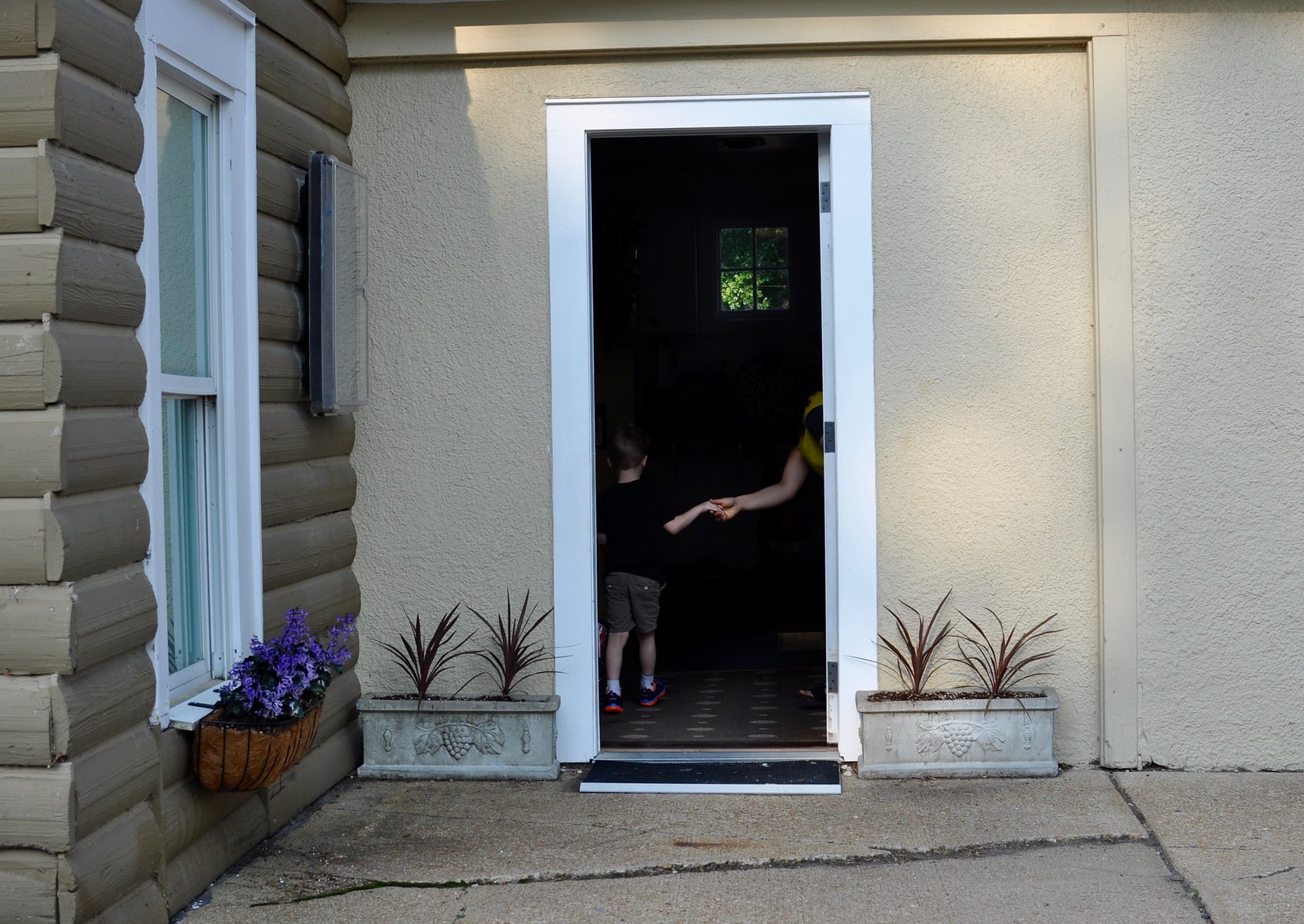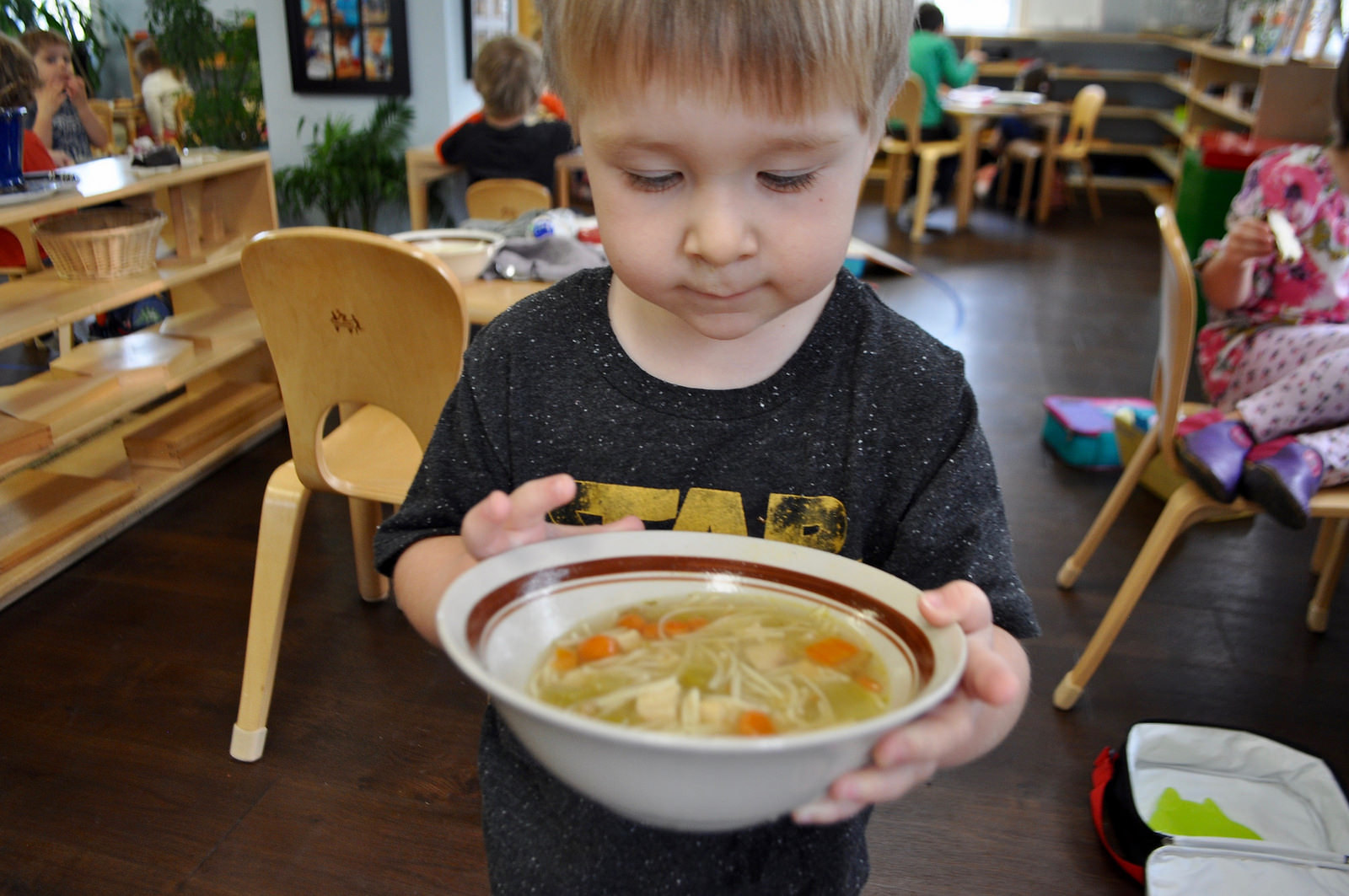The Re-Birth of the Second Plane Child
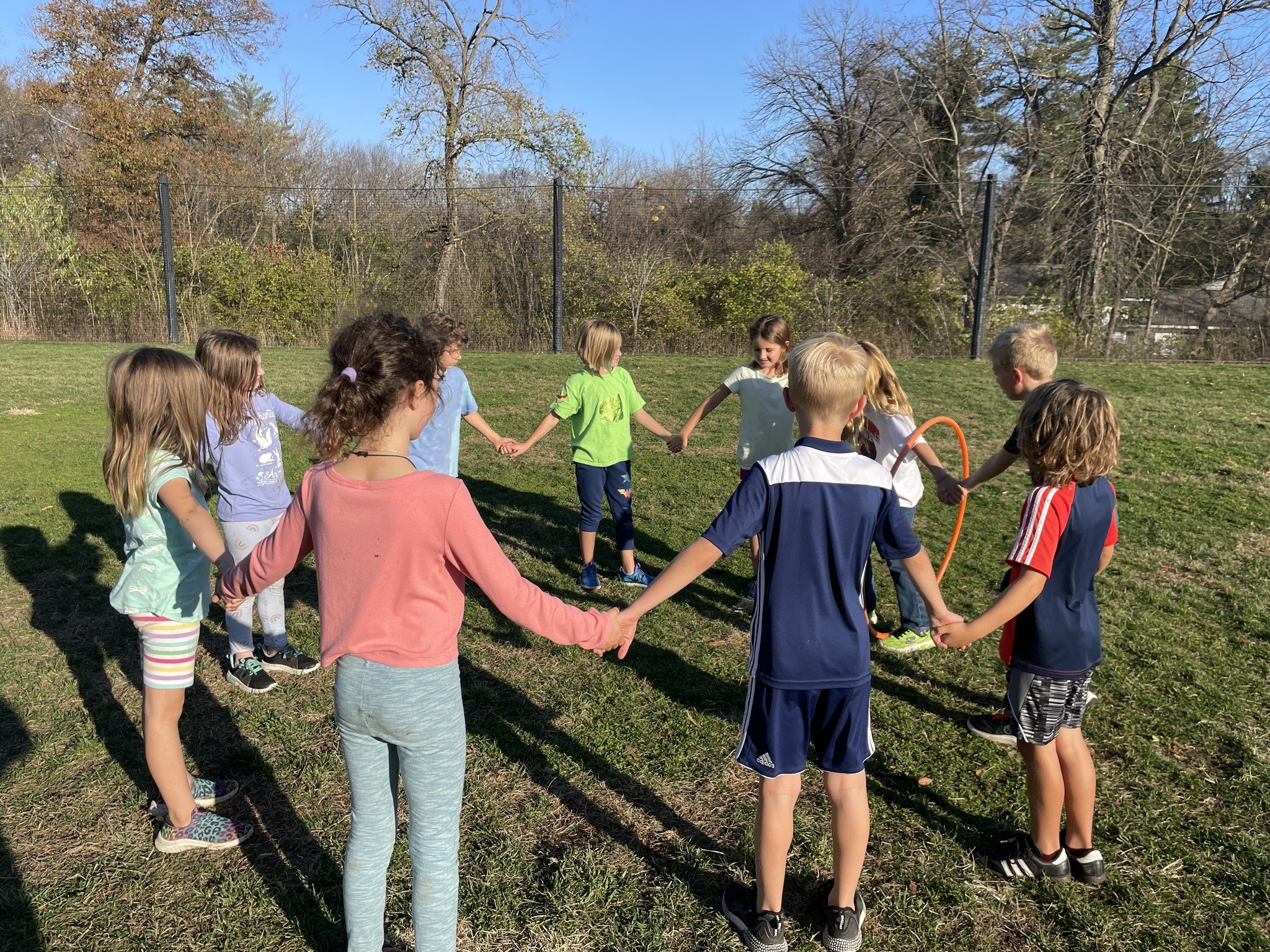 The start of the academic year is always a joyful, exciting time with the reunion of old friends and welcoming new ones. Many children returned to their familiar classroom environments and communities of children and guides, while other students made the transition to their brand new community. Today we’d like to discuss the transition between the Children’s House environments (3-6 years old) to the Elementary (6-12 years old). This is the most significant transition that happens here at Villa di Maria Montessori, because it encompasses a shift from the First Plane of Development to the Second Plane. Dr. Maria Montessori used this framework of the Four Planes of Development to describe the journey each child passes through from birth to adulthood. Read more about Dr. Montessori’s Four Planes on this past blog post.
The start of the academic year is always a joyful, exciting time with the reunion of old friends and welcoming new ones. Many children returned to their familiar classroom environments and communities of children and guides, while other students made the transition to their brand new community. Today we’d like to discuss the transition between the Children’s House environments (3-6 years old) to the Elementary (6-12 years old). This is the most significant transition that happens here at Villa di Maria Montessori, because it encompasses a shift from the First Plane of Development to the Second Plane. Dr. Maria Montessori used this framework of the Four Planes of Development to describe the journey each child passes through from birth to adulthood. Read more about Dr. Montessori’s Four Planes on this past blog post.  As parents, witnessing this shift in characteristics of their child from the First to Second Plane can be a bit surprising and often results in the need for readjustments in the household/family life. Dr. Montessori believed this transition was so momentous that she called it a re-birth. Our annual Montessori 202 presentation was born out of the need to help parents successfully navigate this important transition. Our guides do a tremendous job presenting crucial information during this yearly Parent Talk and we’d like to share some important pieces for those of you that are looking to the future or wanting (needing!) a refresher. If you know what’s ahead, it’s easier to adapt and embrace the changes that emerge.
As parents, witnessing this shift in characteristics of their child from the First to Second Plane can be a bit surprising and often results in the need for readjustments in the household/family life. Dr. Montessori believed this transition was so momentous that she called it a re-birth. Our annual Montessori 202 presentation was born out of the need to help parents successfully navigate this important transition. Our guides do a tremendous job presenting crucial information during this yearly Parent Talk and we’d like to share some important pieces for those of you that are looking to the future or wanting (needing!) a refresher. If you know what’s ahead, it’s easier to adapt and embrace the changes that emerge. 
Second Plane Characteristics
Children begin to transition to the Second Plane of Development around the age of six years old. It doesn’t magically happen on their sixth birthday or at the end of their Culminating year in the Children’s House. Gradually you will begin to notice some of these characteristics revealing themselves in your child as the transition to elementary grows near. 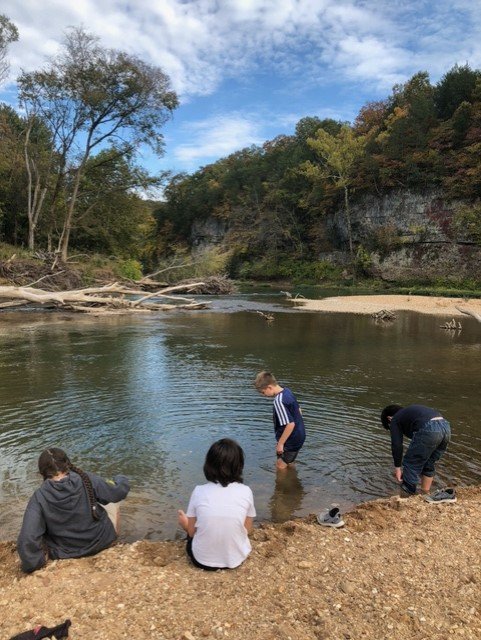
Fearless and Tough
The second plane child is strong physically. The first plane child tends to be more susceptible to illness, as does the adolescent (12-18 years old). The elementary child is more daring and adventurous and doesn’t want a fuss made over an injury, like they might have when they were younger. Within safe limits, it is beneficial to allow the child to take these bold leaps and bounds in order to build their confidence. 
Messy
The elementary child tends to be a bit messy and untidy, generally speaking. They no longer have the urge to order their external environment because they’ve internalized that order. They are now focused on ordering their mind. You might notice this trend affecting their personal hygiene as well. They might lack awareness of the dirt on their hands or the changes in their body odor, so they need gentle and firm encouragement to continue regular handwashing and bathing or showering. Please see more ideas further down in this post for assistance with household cleaning and organization. 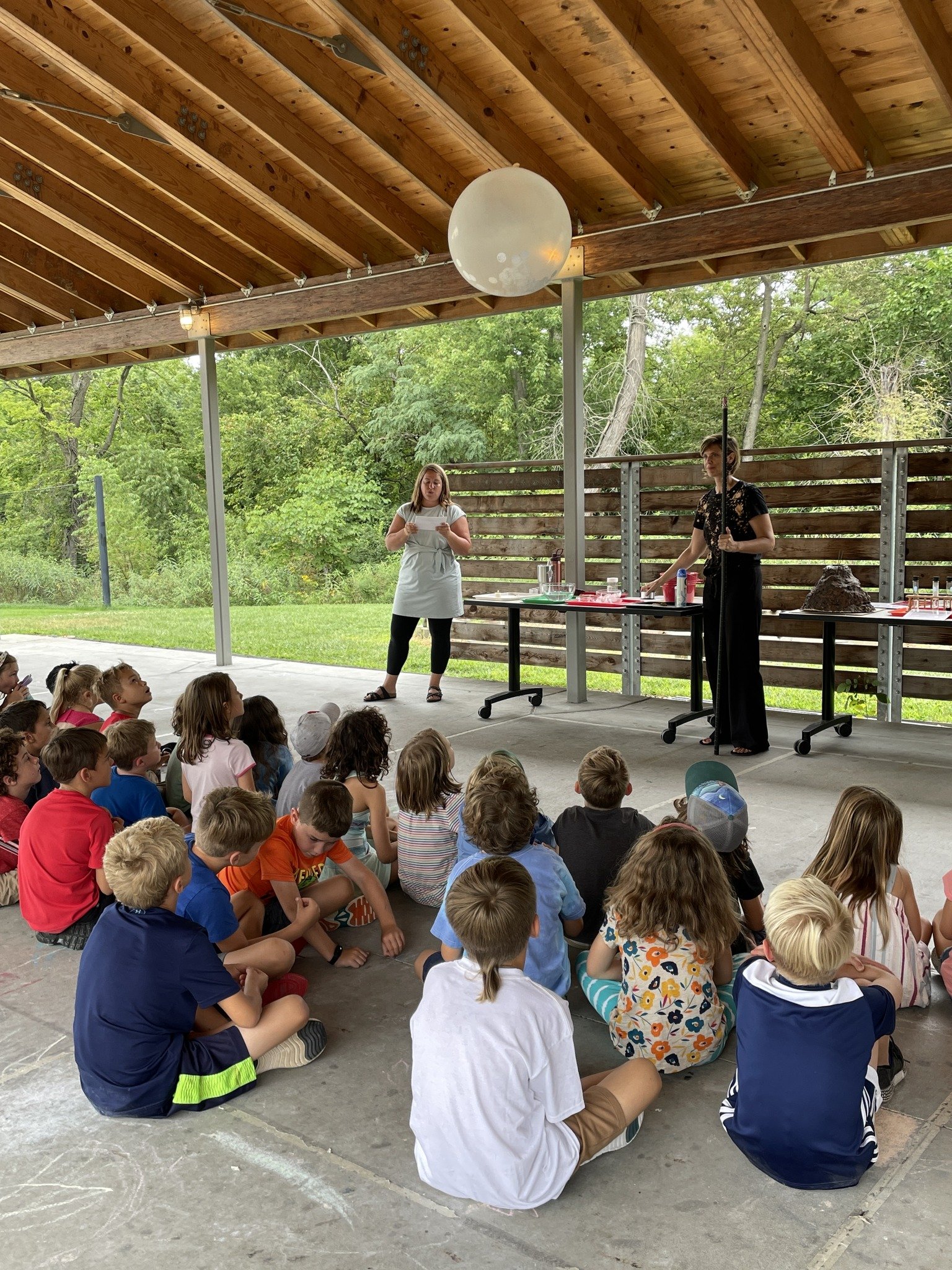
“Why?”
Dr. Montessori spoke of these years between the age of six and twelve years as the most intellectual of a person’s life. Their brain functions differently than the way it functioned throughout the first plane, where they had the power of the Absorbent Mind. Now entering the phase of the rational mind, they want to ask ALL THE QUESTIONS about the world around them, and well beyond. Why do the birds migrate? Why is the sun so hot? Why does my family do things differently than other families? We want to invite these questions and explore together to find the answers. Guides seek to connect students with resources (books, safe internet websites, experts in the field) to promote their independence in finding answers in the future. 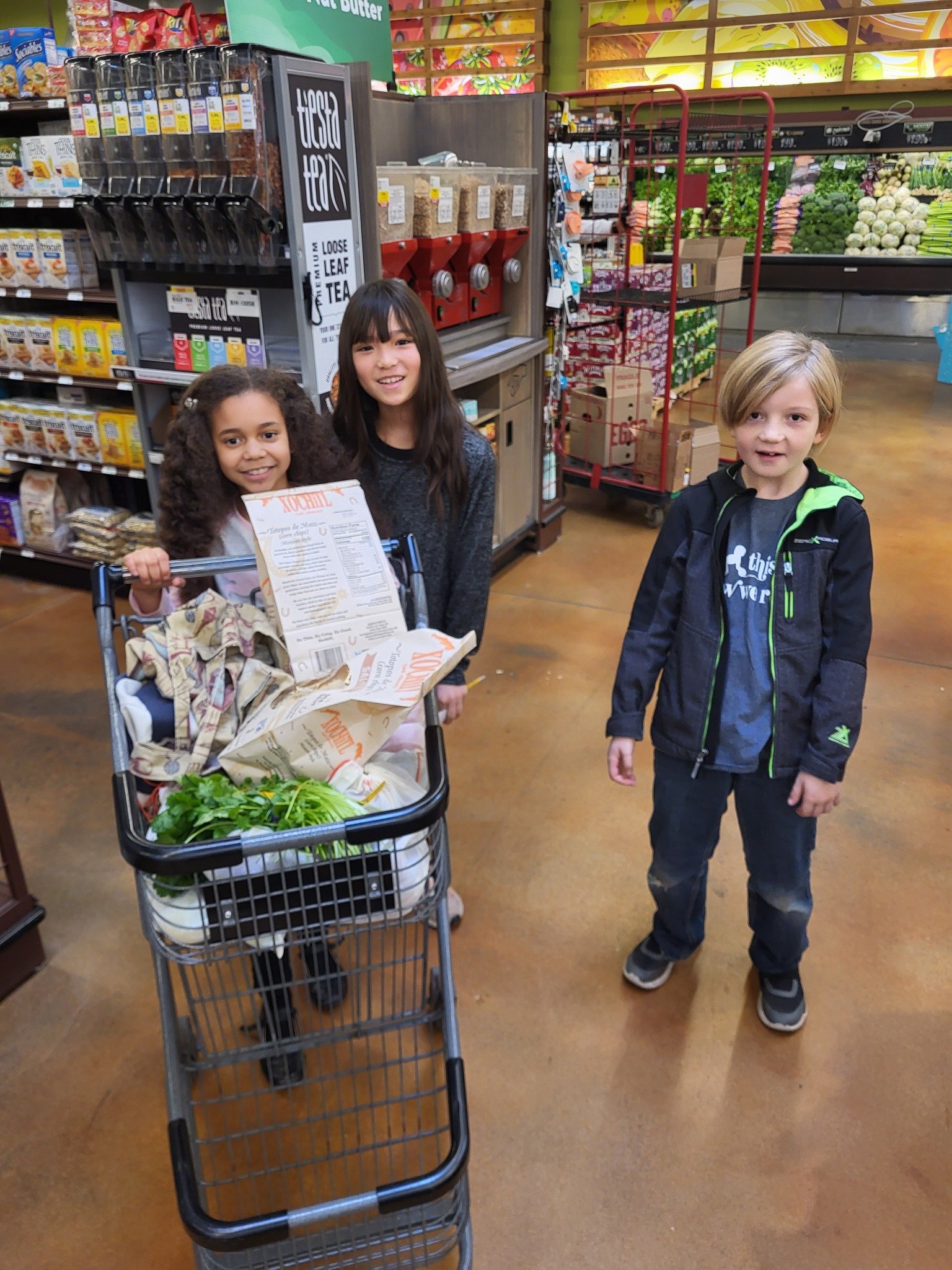
Socialization
Friendships become more important to the child at this stage of their development. In the First Plane, the child was mainly focused on self-construction (i.e. independent movement, development of language, eating, putting on shoes, etc.), and now, in the second plane, the child must begin to take their place in society at large, well beyond the home and the classroom. We encourage and support the “Going Out” in our elementary community because the classroom is no longer sufficient to satisfy the needs of this intellectual extrovert. To learn more about “Going Out”, check out this past blog post. Parents can support the expression of this characteristic by providing opportunities for the child to accompany them into society (i.e. taking the lead in paying at the cash register or navigating directions to the store). 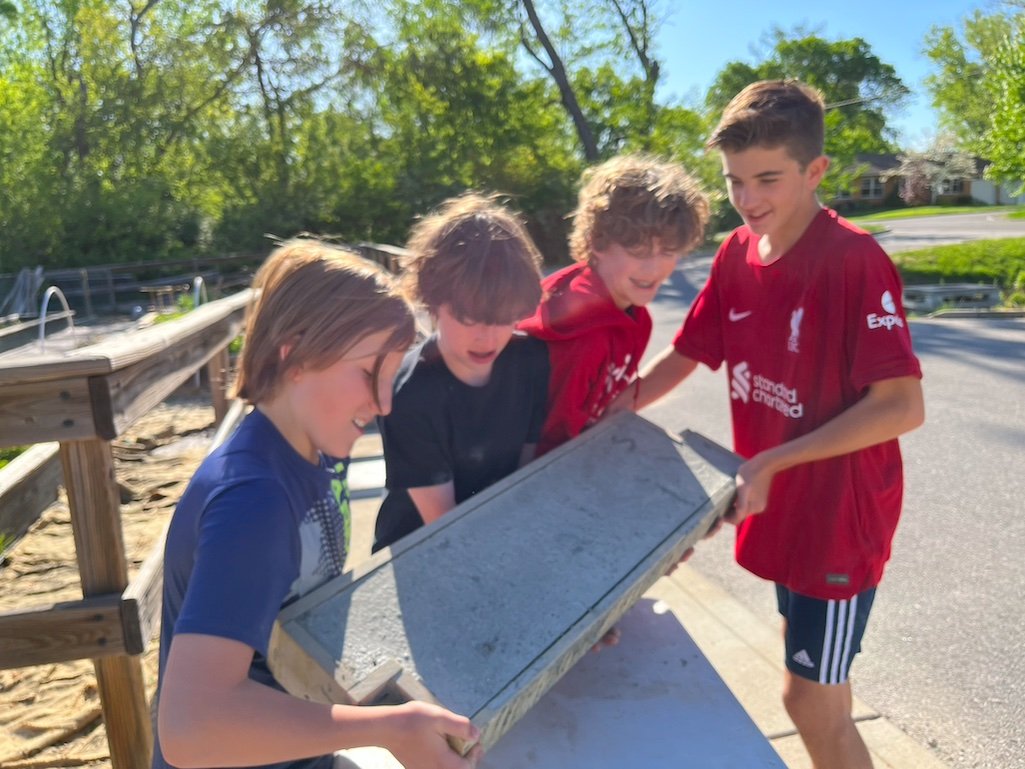
Justice
During these years, the children develop a strong awareness of morality and justice. Their conscience emerges more clearly as they explore their sense of right and wrong. This might express itself as tattling or reporting as they seek to understand what is acceptable and what is not. Guides in the classroom notice this particularly around the ages of 6 ½ - 8 years old. Initially, the intent may not be to get others in trouble, but merely to know if the guide will accept this behavior. Guides respond in a way that helps the child begin to set their own moral compass, confirming whether the behavior is right or wrong, but not necessarily intervening to stop the behavior right away (unless safety is a concern). In this way, the guide addresses the moral need of the child, without reinforcing a pattern that could develop.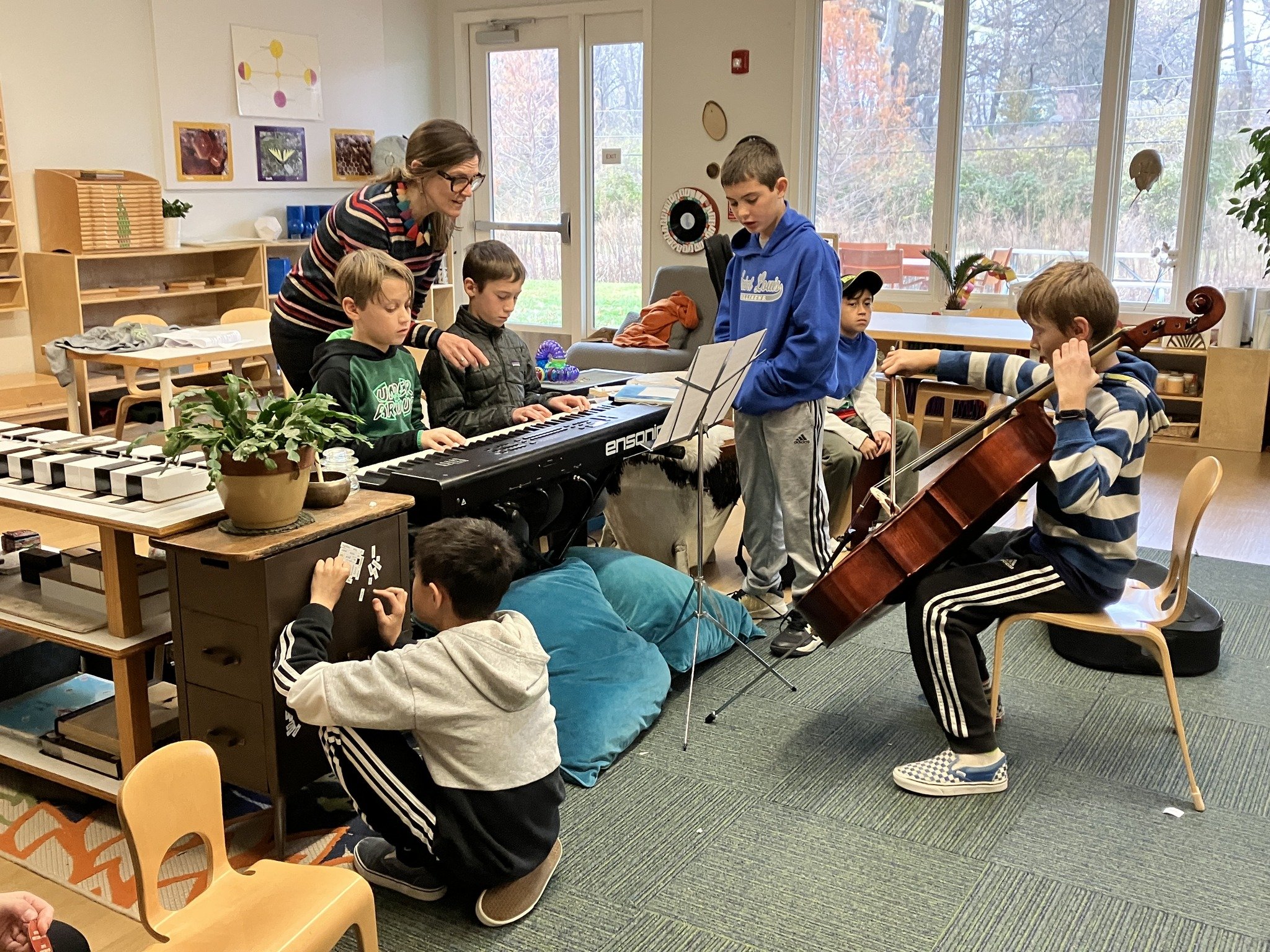
Hero Worship
Along with the sensitivity towards morality, the elementary child seeks out heroes; admirable people to look up to. Guides and parents can help direct the child toward positive heroes and role models through books, stories and relevant current events. We want the children to recognize the true heroes of this world, those who sacrifice for others and work to make our world a better place. 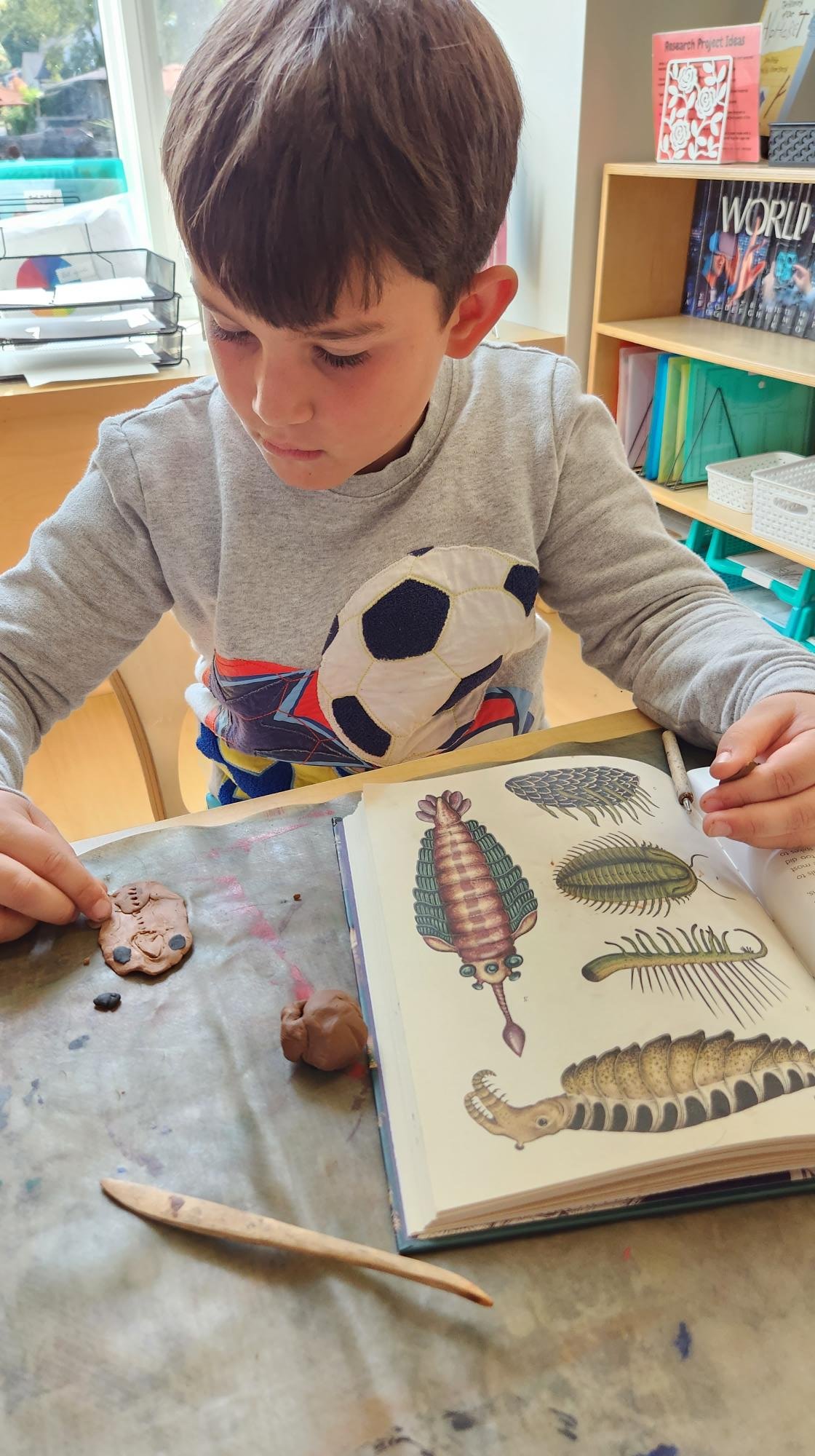
How to Support your Second Plane Child
What are the ways you can assist your child smoothly through this transition? First of all, simply being aware of these characteristics will help you recognize that this shift is to be expected and embraced as your child continues on their developmental path. In the area of cleanliness, though they won’t naturally care to keep things as tidy and organized, it is still important to have structure and expectations in this area. In the elementary classroom, we give the child freedom to explore their work and to create expressively, but once the work is finished or the work period has ended, we expect them to tidy their spaces, clean the materials and return them to their space ready for the next child to use. Likewise, you might decide at home that there are certain times when projects must be cleaned up or stored away. Perhaps consider implemenmting a cleaning routine before bed or helping tidy the kitchen right after dinner. Elementary age children need assistance with these boundaries to maintain external order because this does not come as naturally for them in this season of their life. Because children in the Second Plane are motivated socially, doing chores together might help them complete a task. Deciding expectations together, as a family, ahead of time will be important as well. Their keen sense of justice will rest a bit if they have some choices in which chores and responsibilities they agree to do. 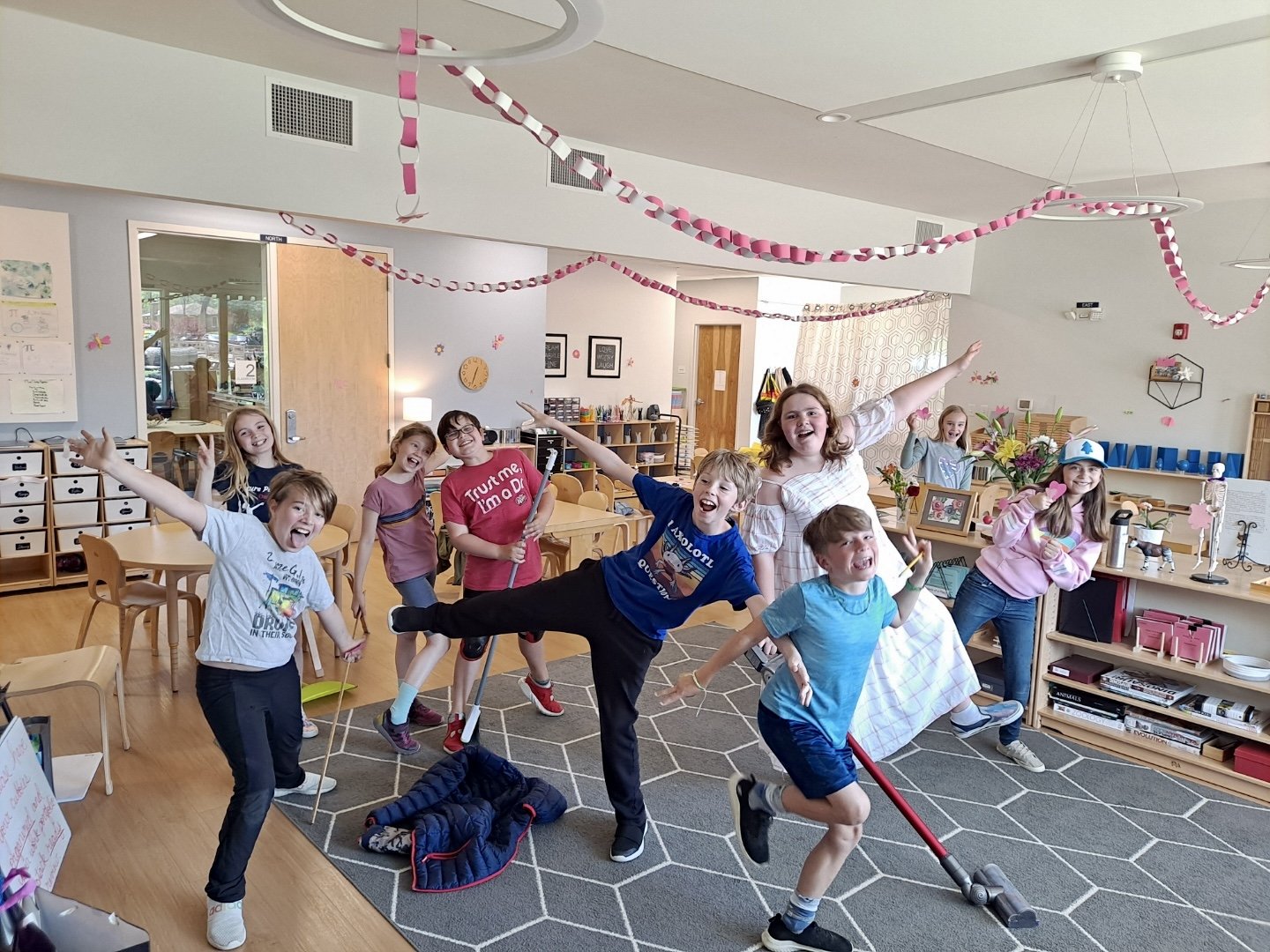 Finally, you are supporting your Second Plane child simply by having them at an authentic Montessori school! The elementary environments (including the guides) are specifically tailored to meet the needs of this age group so that they can utilize the characteristics of this season to the utmost. The energies of this deeply intellectual and social period needs to be harnessed, guided and encouraged. What better place to explore all their deep questions about the universe than in the rich, engaging Montessori environment? Because the elementary classroom addresses the social, emotional, and intellectual needs of our Second Plane children, they are able to thrive and reach their potential, becoming their own heroes, and perhaps someday to save the world.
Finally, you are supporting your Second Plane child simply by having them at an authentic Montessori school! The elementary environments (including the guides) are specifically tailored to meet the needs of this age group so that they can utilize the characteristics of this season to the utmost. The energies of this deeply intellectual and social period needs to be harnessed, guided and encouraged. What better place to explore all their deep questions about the universe than in the rich, engaging Montessori environment? Because the elementary classroom addresses the social, emotional, and intellectual needs of our Second Plane children, they are able to thrive and reach their potential, becoming their own heroes, and perhaps someday to save the world. 

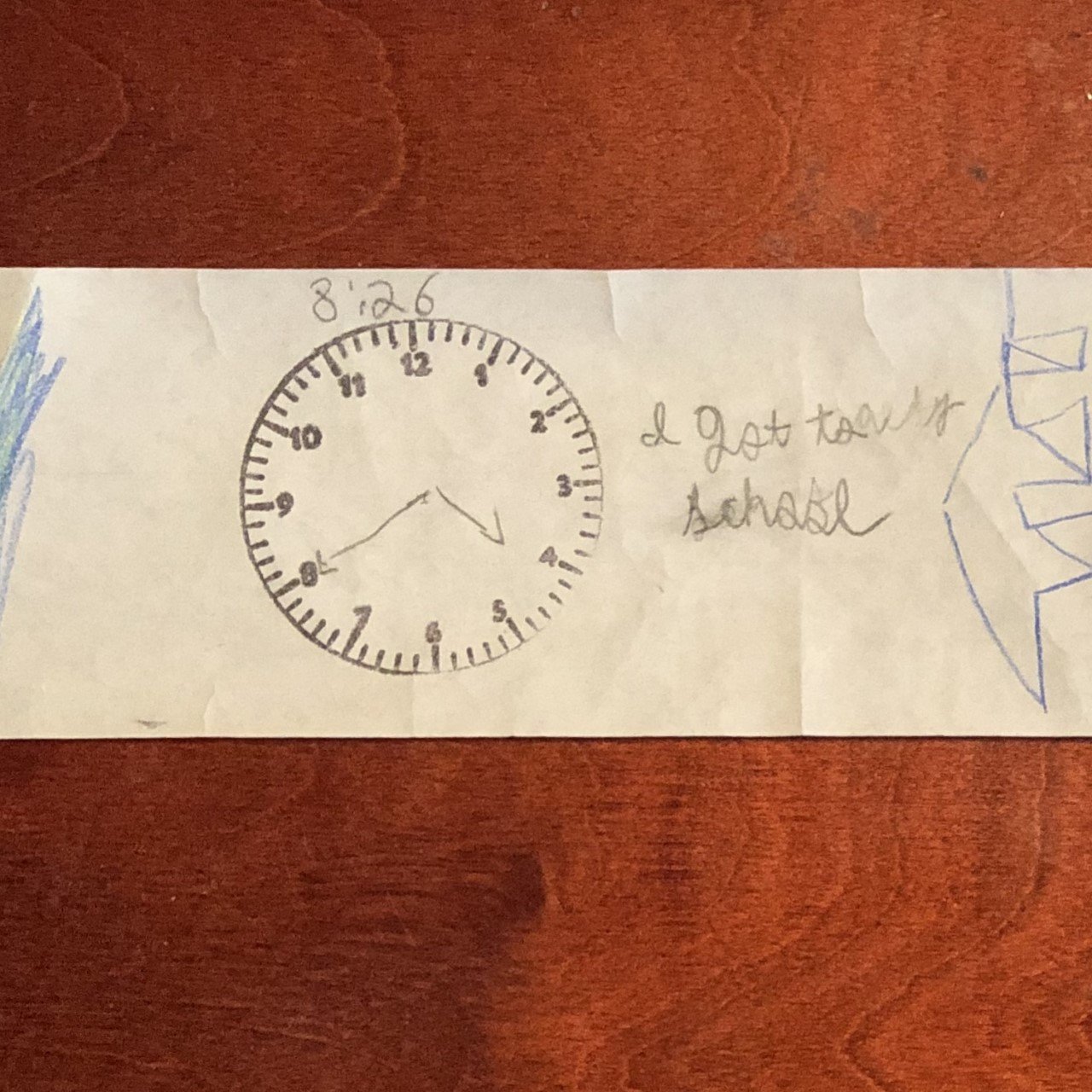 Everyone is tardy sometimes. The occasional unexpected rough morning, spilled smoothie, flat tire or forgotten lunch box—these will happen to each of us. It's when those mornings go from occasional and unexpected to frequent and routine that tardiness becomes... well, a problem.It's easy to list the reasons punctuality is essential to the work- or school-day in general, but let's talk about why it is especially important in the Montessori classrooms.
Everyone is tardy sometimes. The occasional unexpected rough morning, spilled smoothie, flat tire or forgotten lunch box—these will happen to each of us. It's when those mornings go from occasional and unexpected to frequent and routine that tardiness becomes... well, a problem.It's easy to list the reasons punctuality is essential to the work- or school-day in general, but let's talk about why it is especially important in the Montessori classrooms.
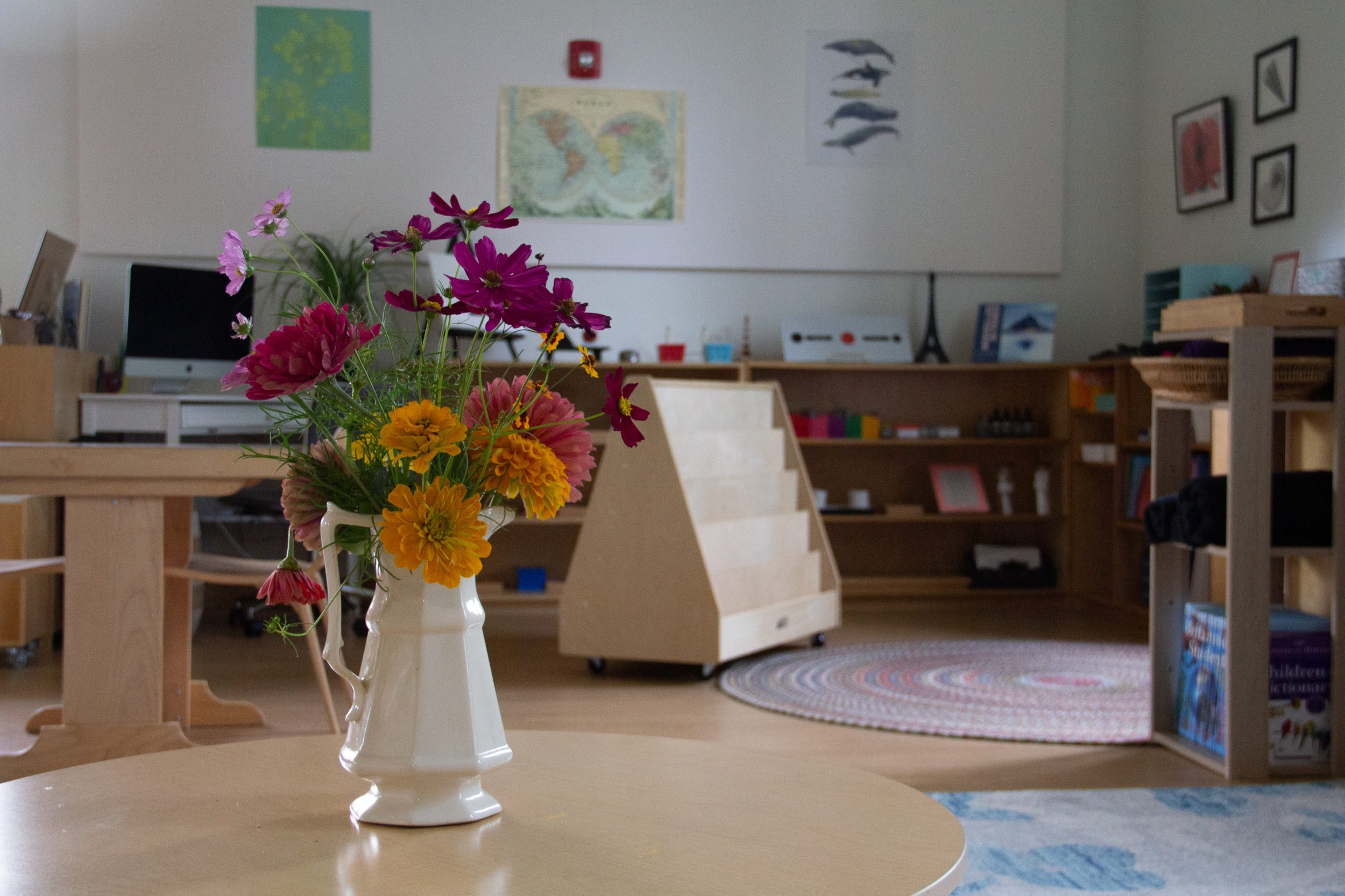
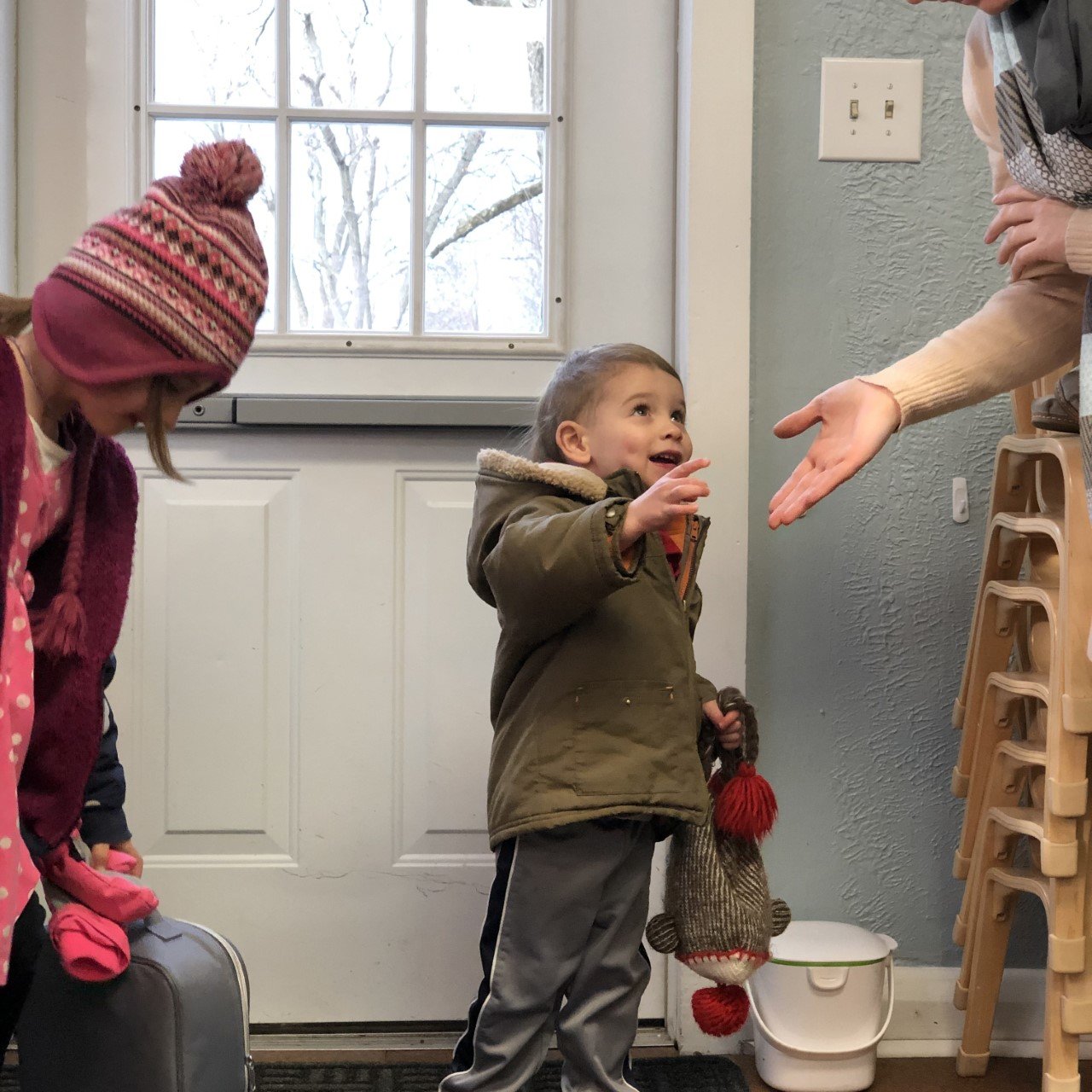
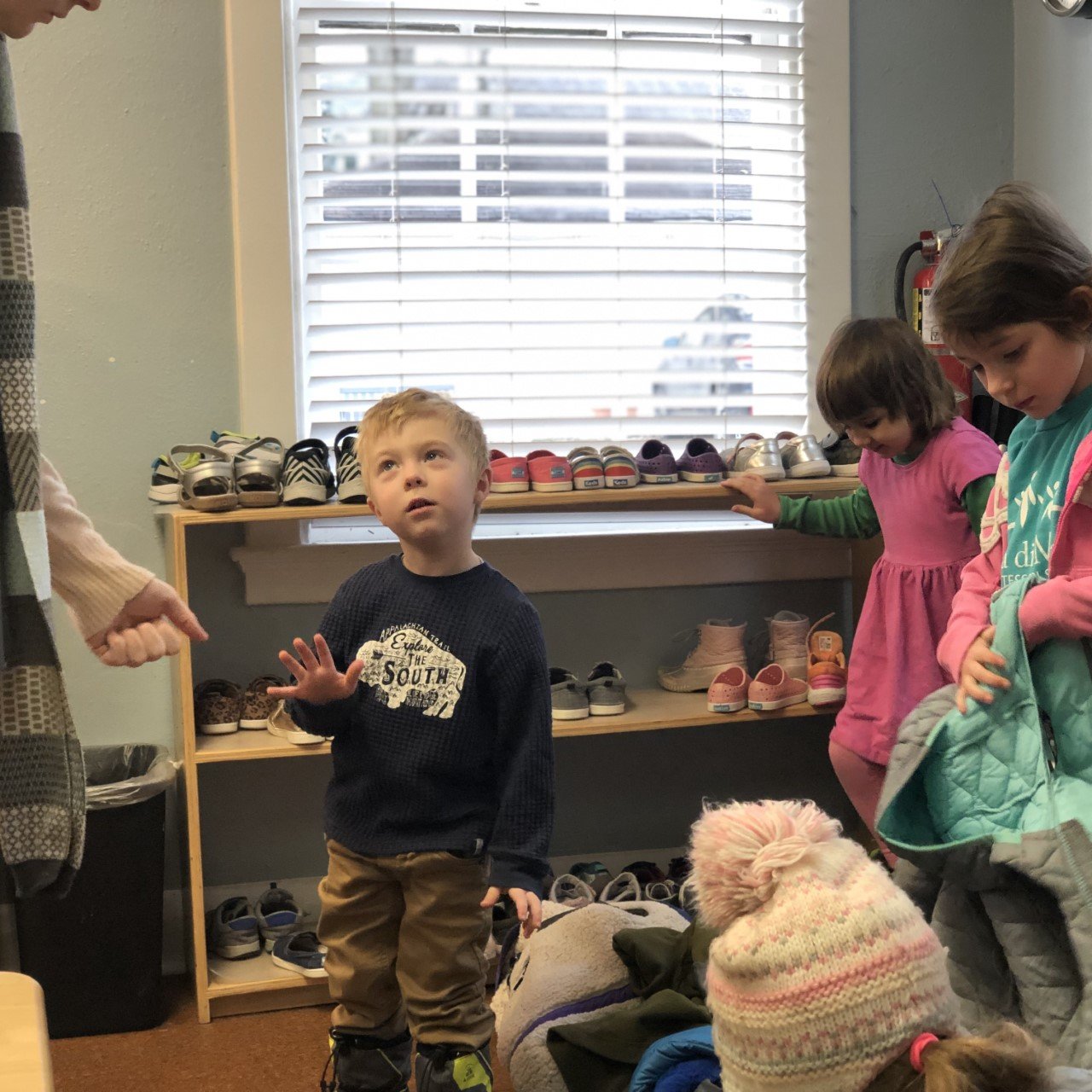 Another benefit of arriving on time is the chance the children have to connect with the adults and other children in their environment. During the window of time dedicated to arrival, each child is met at the door by the guide with a handshake and a warm greeting. They have the chance to personally connect with an anecdote or silly joke. As they chat with the guide and with the other children arriving, they begin their day with the renewed sense of community.
Another benefit of arriving on time is the chance the children have to connect with the adults and other children in their environment. During the window of time dedicated to arrival, each child is met at the door by the guide with a handshake and a warm greeting. They have the chance to personally connect with an anecdote or silly joke. As they chat with the guide and with the other children arriving, they begin their day with the renewed sense of community.
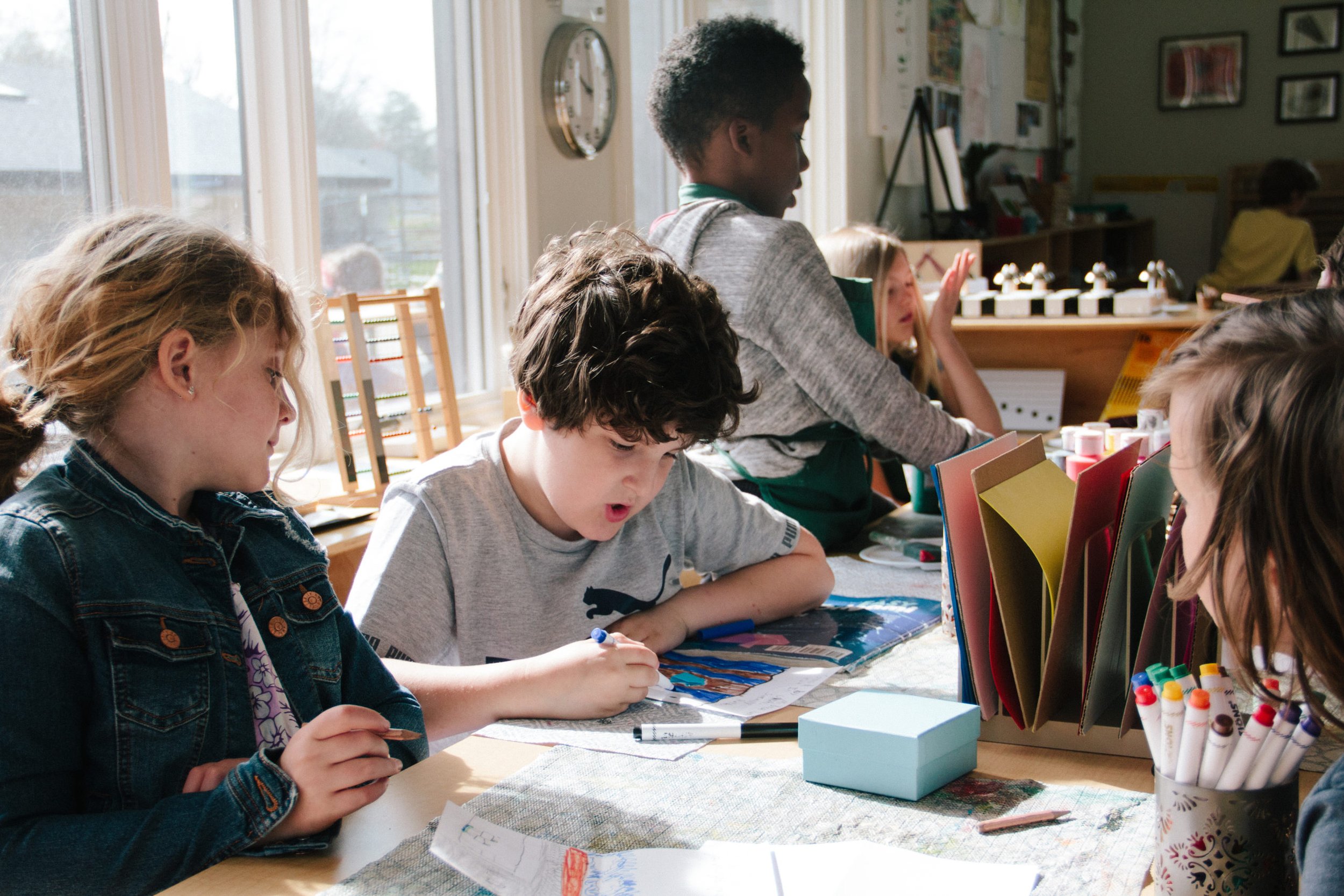 One of the beautiful things that Montessori offers to children is a three-hour uninterrupted morning work cycle. In both the Children's House and the Elementary, the children have from the start of the work day, 8:30 a.m. to the start of lunch, 11:30 a.m. to explore their lessons, dive into their work without unscheduled interruptions. This affords them the opportunities to concentrate, to self-direct and to discover the depths of their own curiosity and intelligence. The three-hour work cycle is bedrock to their Montessori education. And when they arrive on time, they are able to take full advantage of it.
One of the beautiful things that Montessori offers to children is a three-hour uninterrupted morning work cycle. In both the Children's House and the Elementary, the children have from the start of the work day, 8:30 a.m. to the start of lunch, 11:30 a.m. to explore their lessons, dive into their work without unscheduled interruptions. This affords them the opportunities to concentrate, to self-direct and to discover the depths of their own curiosity and intelligence. The three-hour work cycle is bedrock to their Montessori education. And when they arrive on time, they are able to take full advantage of it.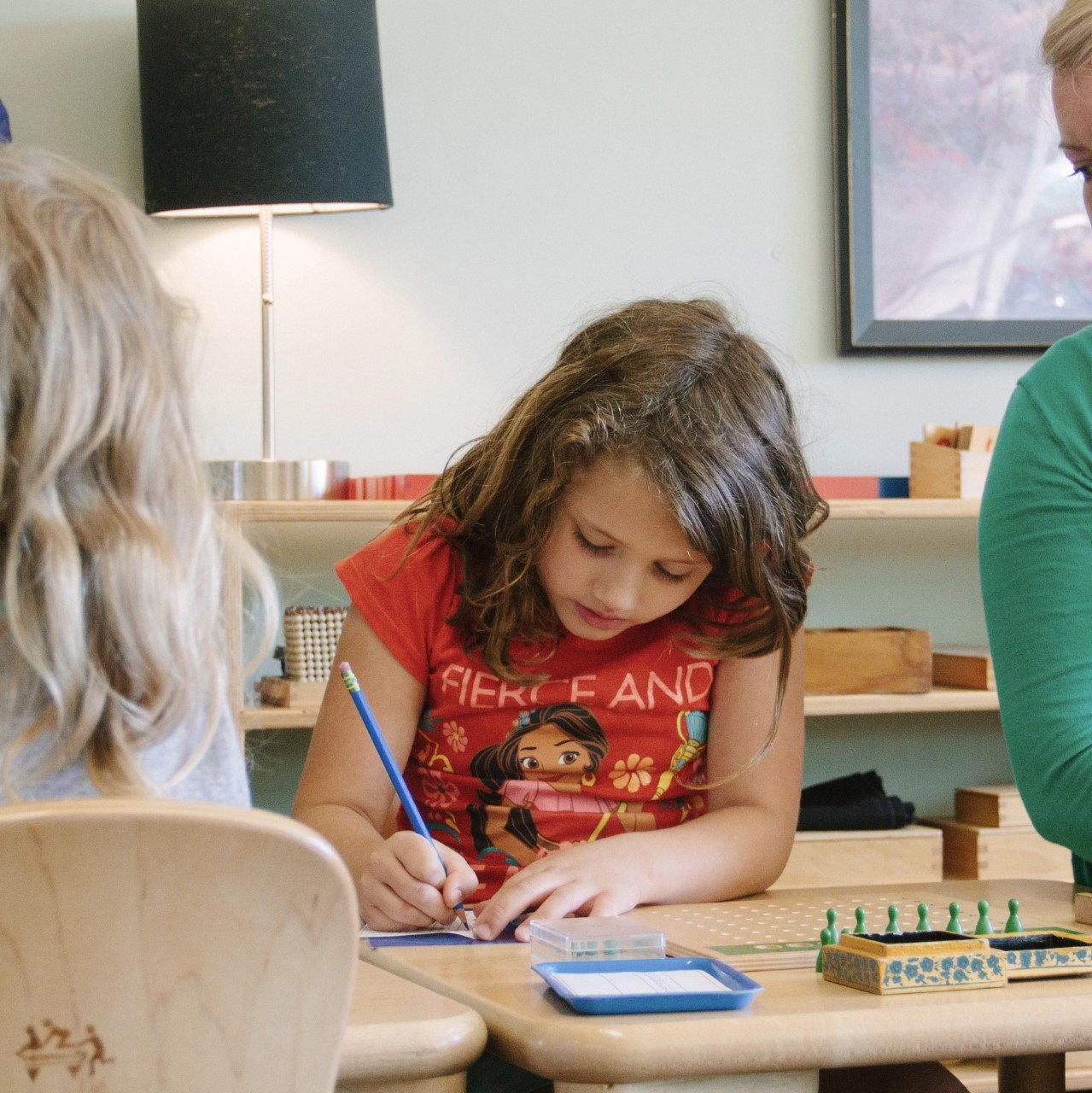 So now that we've looked at all of the beautiful things that happen at the start of the work-day, and why they are so very important to the Montessori classroom, let's drive it on home...
So now that we've looked at all of the beautiful things that happen at the start of the work-day, and why they are so very important to the Montessori classroom, let's drive it on home...
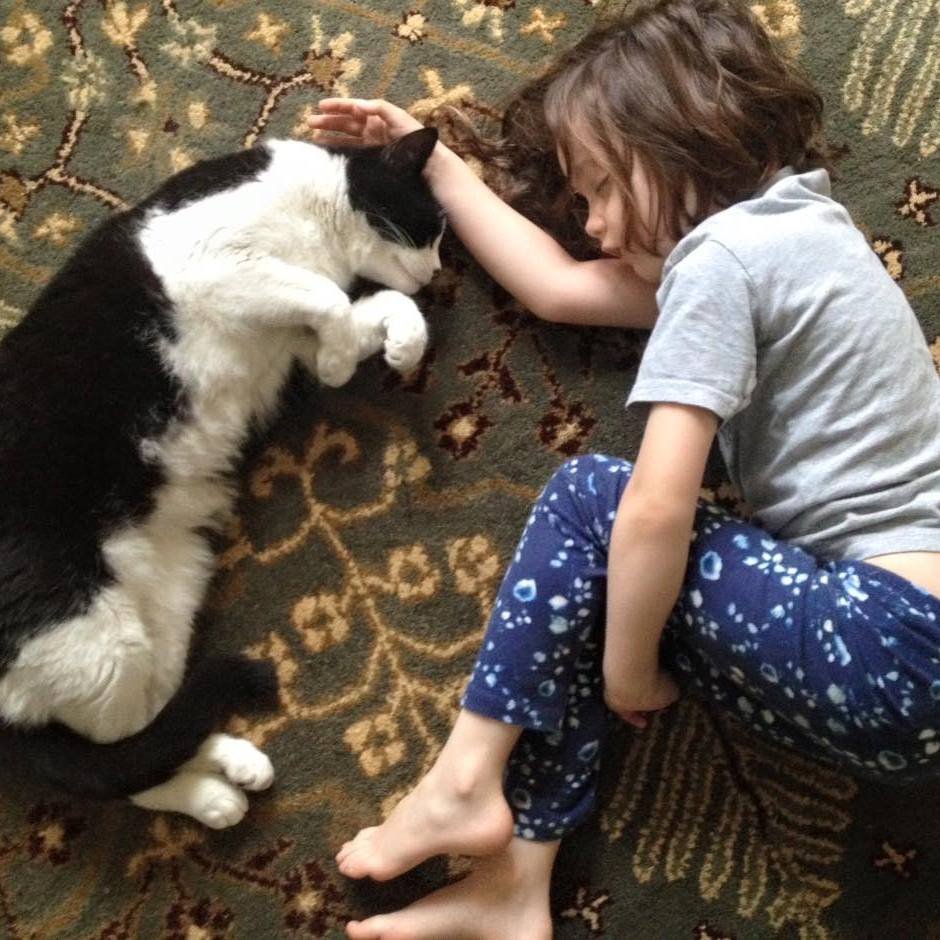 It's a new year and a new opportunity to check in with our family routines, to assess what is working and what might need a little work. In this series, Better Habits in 2020, we'll take a look at the kinds of things we can do to improve our and our children's lives. Today we'll start with what I personally believe is the mother of all good habits: sleep!Put simply, our brains and bodies just cannot do all they are supposed to do without adequate sleep—we depend on good, quality sleep for growth, memory, appetite regulation, physical fitness, heart health, emotional regulation, mental health, alert awareness, good performance at work or school, a working immune system and the ability to learn.
It's a new year and a new opportunity to check in with our family routines, to assess what is working and what might need a little work. In this series, Better Habits in 2020, we'll take a look at the kinds of things we can do to improve our and our children's lives. Today we'll start with what I personally believe is the mother of all good habits: sleep!Put simply, our brains and bodies just cannot do all they are supposed to do without adequate sleep—we depend on good, quality sleep for growth, memory, appetite regulation, physical fitness, heart health, emotional regulation, mental health, alert awareness, good performance at work or school, a working immune system and the ability to learn.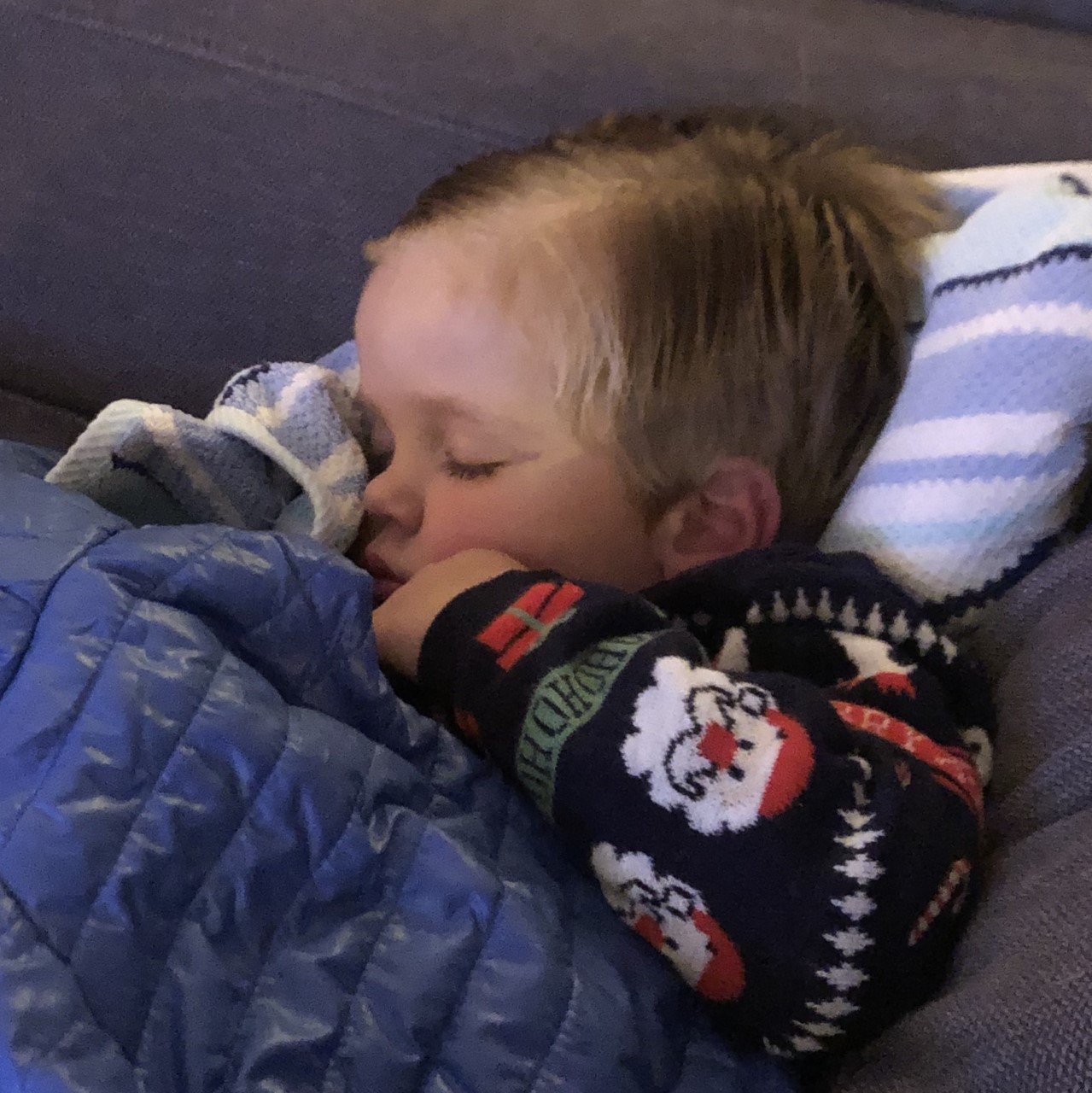 While we might think of sleep as a time when everything shuts down, the truth is our bodies and brains, freed from the daily tasks of being awake, turn inward and get to work. Our physiological functions, like breathing, body temperature and heart rate, rest and slow down, conserving energy while the body generates and regenerates cells, heals damage and recovers from stress. And the brain works on organizing all of the data that came at it during the day. We lock in new information; consolidate and categorize that information with what we already know; build memories; carve out neural pathways for movement and speech; regulate emotions... the list goes on and on.This big work is happening in all of us, at every age, but in children this work is even bigger. They are physically growing and learning new things all the time. And the younger they are, the more growing and learning they are doing. From 0 to 6, children are absorbing, taking in everything—every single thing—around them, while also learning to walk, talk, eat, read and write. The right amount of sleep is absolutely essential for our children to be able to get this information settled into their brains and bodies. It is essential for them to be able to function happily and healthily.So what is the right amount of sleep? It's a lot more than many of us think. The American Academy of Pediatrics' recommendations for hours of sleep, by age group, are:
While we might think of sleep as a time when everything shuts down, the truth is our bodies and brains, freed from the daily tasks of being awake, turn inward and get to work. Our physiological functions, like breathing, body temperature and heart rate, rest and slow down, conserving energy while the body generates and regenerates cells, heals damage and recovers from stress. And the brain works on organizing all of the data that came at it during the day. We lock in new information; consolidate and categorize that information with what we already know; build memories; carve out neural pathways for movement and speech; regulate emotions... the list goes on and on.This big work is happening in all of us, at every age, but in children this work is even bigger. They are physically growing and learning new things all the time. And the younger they are, the more growing and learning they are doing. From 0 to 6, children are absorbing, taking in everything—every single thing—around them, while also learning to walk, talk, eat, read and write. The right amount of sleep is absolutely essential for our children to be able to get this information settled into their brains and bodies. It is essential for them to be able to function happily and healthily.So what is the right amount of sleep? It's a lot more than many of us think. The American Academy of Pediatrics' recommendations for hours of sleep, by age group, are:
 The immediate effects of a lack of sleep are familiar to any of us: irritability, fatigue, foggy thinking and just a general feeling of blech—things that might be helped with a nap. But the long term effects of a deficiency of sleep can be much more severe, including trouble focusing and concentrating, reduced immune system function, extreme stress, slower reflexes, impulsivity, anger and depression. So how do we do better? How do we help our children get the sleep they need?
The immediate effects of a lack of sleep are familiar to any of us: irritability, fatigue, foggy thinking and just a general feeling of blech—things that might be helped with a nap. But the long term effects of a deficiency of sleep can be much more severe, including trouble focusing and concentrating, reduced immune system function, extreme stress, slower reflexes, impulsivity, anger and depression. So how do we do better? How do we help our children get the sleep they need?
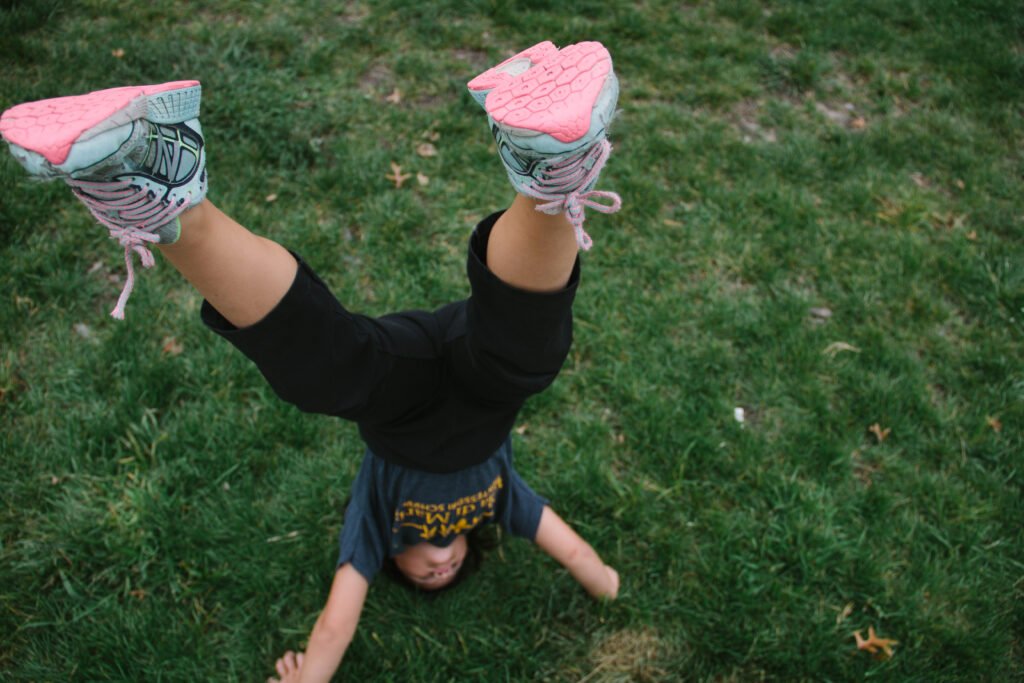 Summer is on its way! Whether your child is headed to a summer at Camp Pegnita, days and days at home, or a combination of the two, life will work a little differently over the next few months.One way to frame the upcoming shift to summer is to think of a summer reboot. The idea is simple; use this change of routine as an excuse to work on (some of) the things in the life of your family that need a little love and attention.
Summer is on its way! Whether your child is headed to a summer at Camp Pegnita, days and days at home, or a combination of the two, life will work a little differently over the next few months.One way to frame the upcoming shift to summer is to think of a summer reboot. The idea is simple; use this change of routine as an excuse to work on (some of) the things in the life of your family that need a little love and attention.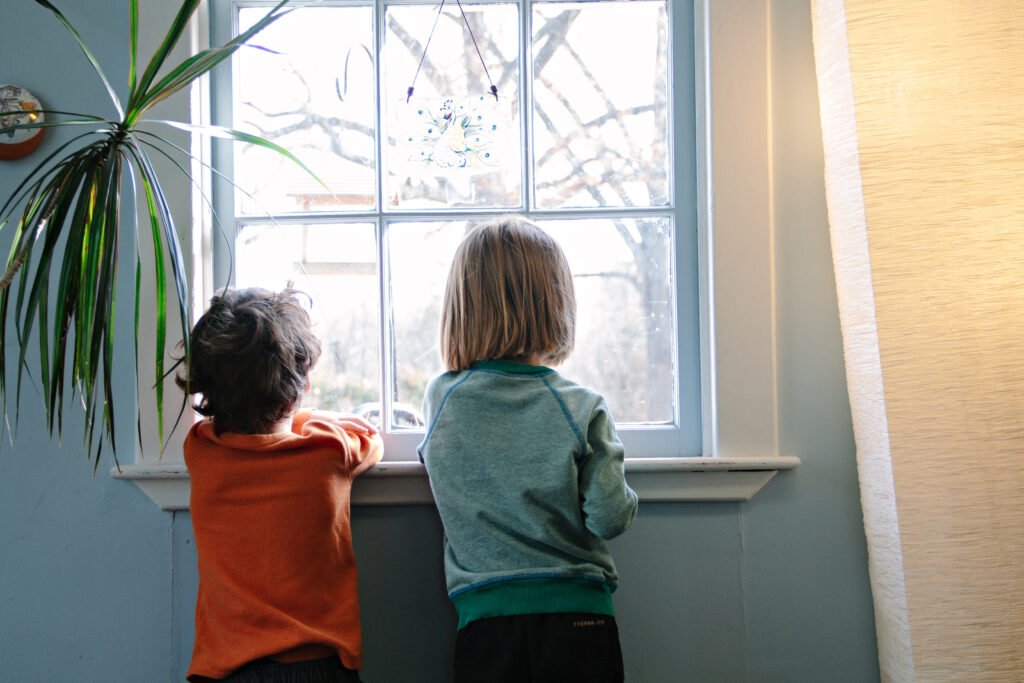 Take some time in this week before summer break to think about what is frustrating, what's just not working, or where growth is needed. Here are a few examples.... If table manners are driving you crazy make them your goal for the summer. If you're wanting your child to take on laundry or making their own breakfast, change the expectations for summer. Maybe it's time to share the task of doing dishes?Then go ahead and stop worrying about these things for the last week of school. The end of the year is hectic enough, let things slide knowing that you'll be working on them soon enough.
Take some time in this week before summer break to think about what is frustrating, what's just not working, or where growth is needed. Here are a few examples.... If table manners are driving you crazy make them your goal for the summer. If you're wanting your child to take on laundry or making their own breakfast, change the expectations for summer. Maybe it's time to share the task of doing dishes?Then go ahead and stop worrying about these things for the last week of school. The end of the year is hectic enough, let things slide knowing that you'll be working on them soon enough.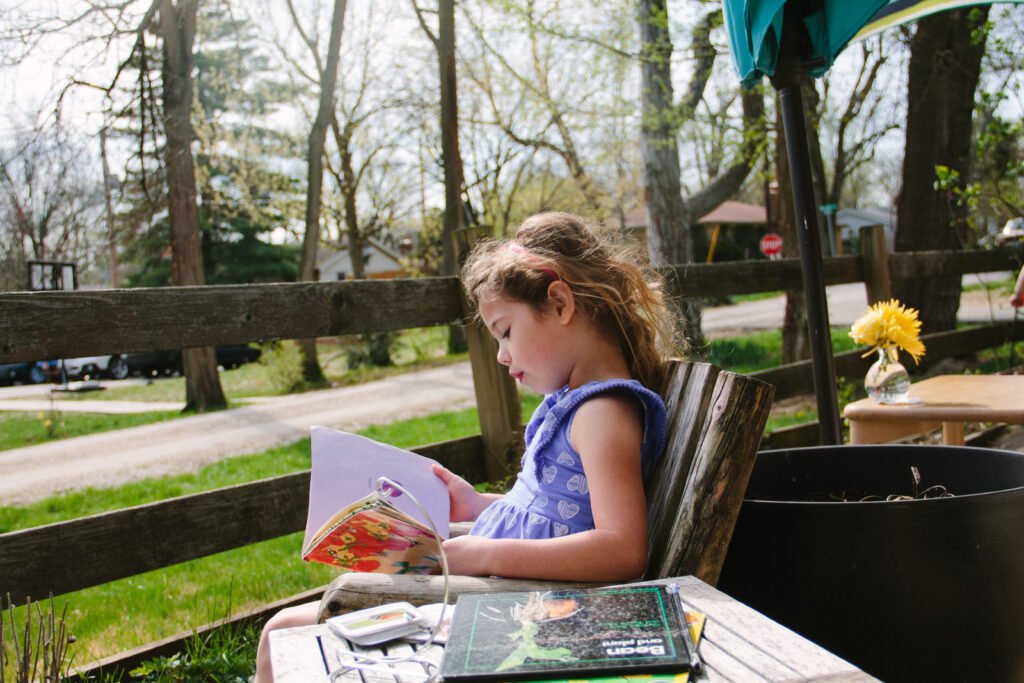 A short guide to making a go of the summer reboot:1) Be conscientious about how much you choose to work on over the summer. Depending on what your summer projects are one or two might be plenty. If you're choosing smaller things (putting away your shoes, washing your hands *every* time you use the bathroom), you might be able to do three.2) Make a manageable plan of how you're going to address these over the summer. For example, if you want to address table manners perhaps pick one meal to focus on. If you're working on laundry independence, take some time to make sure your set up allows for success.3) When you've made a plan - or just sketched out ideas - hold a family meeting. Gather everyone together and talk about the summer. Perhaps you'll take time to make a summer bucket list - going to the art museum, swimming, etc. Goals such as everyone doing their own laundry fit nicely into these types of conversations and lend to the understanding that summer brings many different things. Then give your children the chance to come up with tools or strategies to make the summer goals successful.4) Over the summer remember that what you're working on is what you're working on. You can't adjust everything at once. Keep focused on your goals and give your child - and yourself - the time to be successful.The reboot doesn't have to be relegated to summer. There's the new school year reboot, the birthday reboot ("Well, when you turn (fill in the blank age) next week you'll be old enough to unload the dishwasher!"), the half-birthday reboot...Good luck!
A short guide to making a go of the summer reboot:1) Be conscientious about how much you choose to work on over the summer. Depending on what your summer projects are one or two might be plenty. If you're choosing smaller things (putting away your shoes, washing your hands *every* time you use the bathroom), you might be able to do three.2) Make a manageable plan of how you're going to address these over the summer. For example, if you want to address table manners perhaps pick one meal to focus on. If you're working on laundry independence, take some time to make sure your set up allows for success.3) When you've made a plan - or just sketched out ideas - hold a family meeting. Gather everyone together and talk about the summer. Perhaps you'll take time to make a summer bucket list - going to the art museum, swimming, etc. Goals such as everyone doing their own laundry fit nicely into these types of conversations and lend to the understanding that summer brings many different things. Then give your children the chance to come up with tools or strategies to make the summer goals successful.4) Over the summer remember that what you're working on is what you're working on. You can't adjust everything at once. Keep focused on your goals and give your child - and yourself - the time to be successful.The reboot doesn't have to be relegated to summer. There's the new school year reboot, the birthday reboot ("Well, when you turn (fill in the blank age) next week you'll be old enough to unload the dishwasher!"), the half-birthday reboot...Good luck!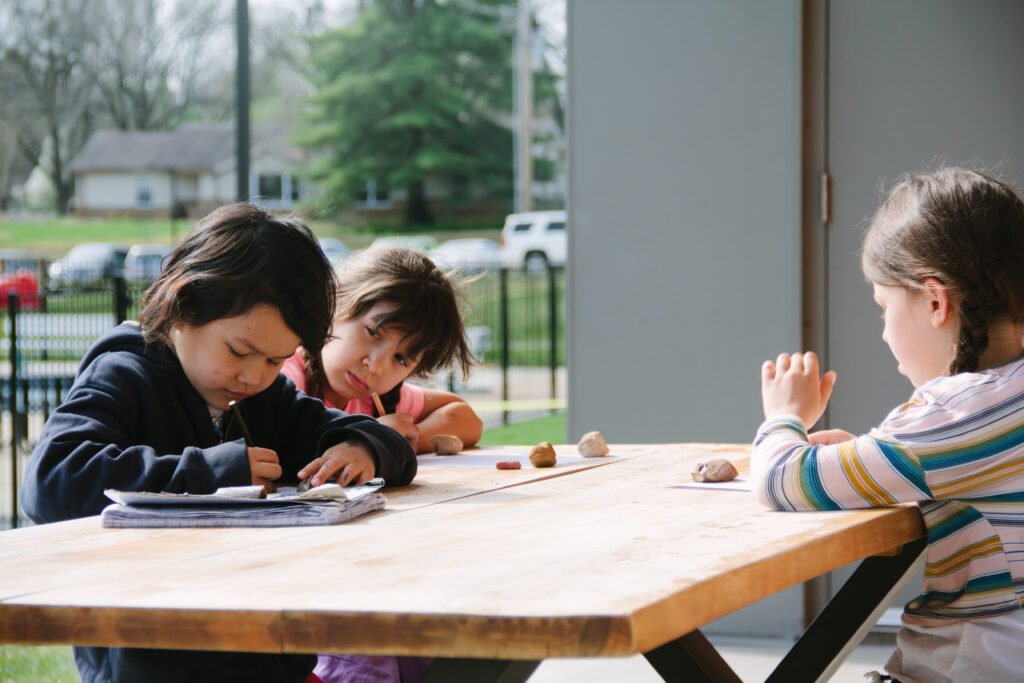 Melinda, your photos need no rebooting! They perfectly capture the lives of these beautiful children.
Melinda, your photos need no rebooting! They perfectly capture the lives of these beautiful children.
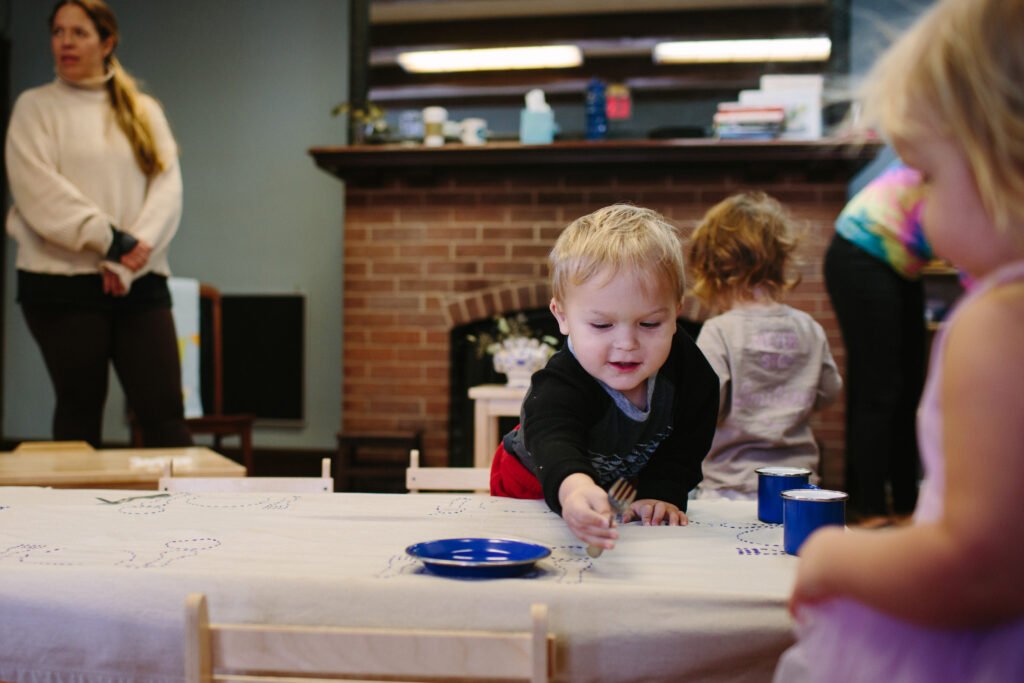 You've likely heard words in the Montessori world before about praise. The goal here is not to pile on but rather offer a quick reminder on the importance of your words.There are a few things to consider when you're praising your most precious people. First, our children want to please us. (Yes, even when it doesn't seem to be the case... it mostly is. They want to please us.) When we explicitly praise our children, we can unintentionally condition our children to expect and perform for praise.
You've likely heard words in the Montessori world before about praise. The goal here is not to pile on but rather offer a quick reminder on the importance of your words.There are a few things to consider when you're praising your most precious people. First, our children want to please us. (Yes, even when it doesn't seem to be the case... it mostly is. They want to please us.) When we explicitly praise our children, we can unintentionally condition our children to expect and perform for praise.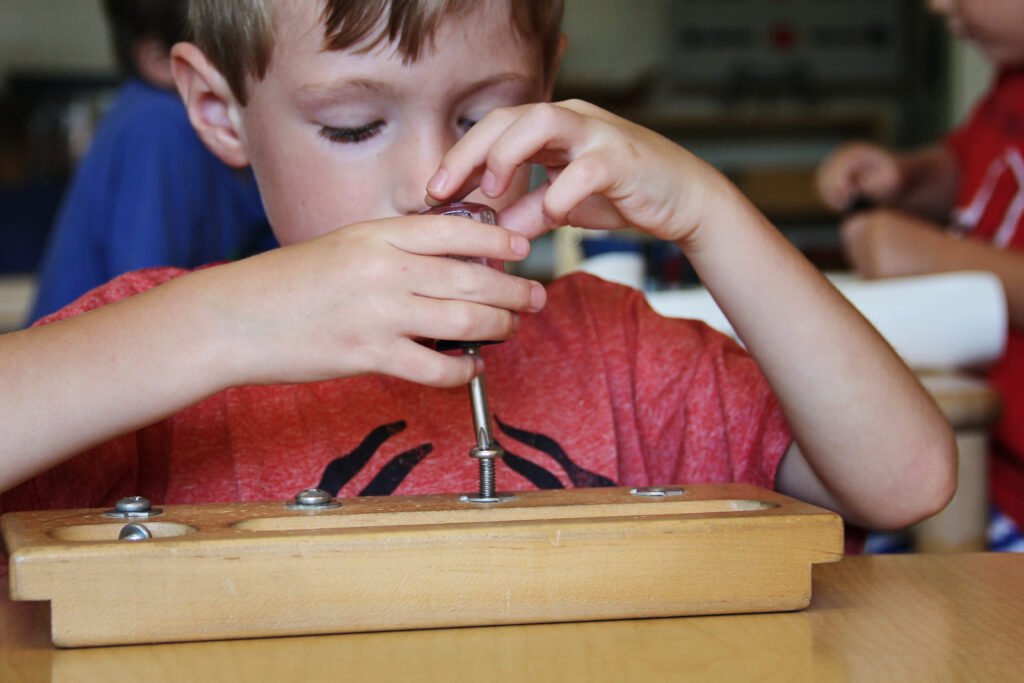 Instead of being internally motivated to try new things, succeed at a task, etc., their motivation becomes external. Keeping motivation internal supports our children's creativity and drive to take (healthy!) risks. If they're always looking to us for approval, we squelch their independence.
Instead of being internally motivated to try new things, succeed at a task, etc., their motivation becomes external. Keeping motivation internal supports our children's creativity and drive to take (healthy!) risks. If they're always looking to us for approval, we squelch their independence.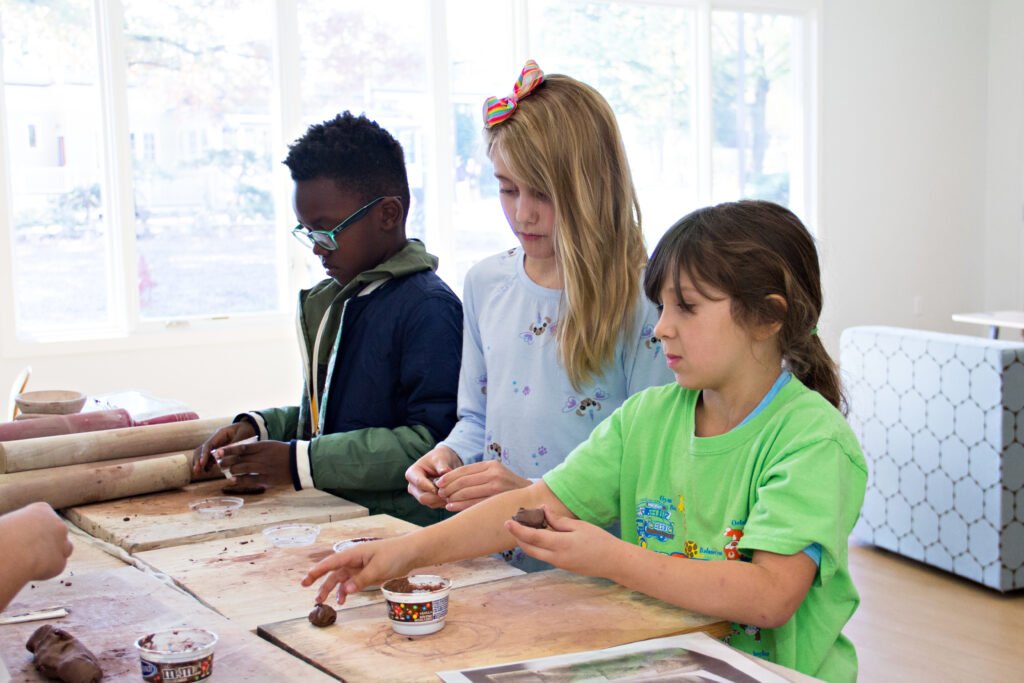 Also, it conditions them to expect praise for the simplest of actions. Yes, the first few times they put their socks on it's exciting but, let's be real, this is a life skill they should be developing. You do not need to throw a party for their every feat! Rest assured they will be pleased enough with their own accomplishment!
Also, it conditions them to expect praise for the simplest of actions. Yes, the first few times they put their socks on it's exciting but, let's be real, this is a life skill they should be developing. You do not need to throw a party for their every feat! Rest assured they will be pleased enough with their own accomplishment!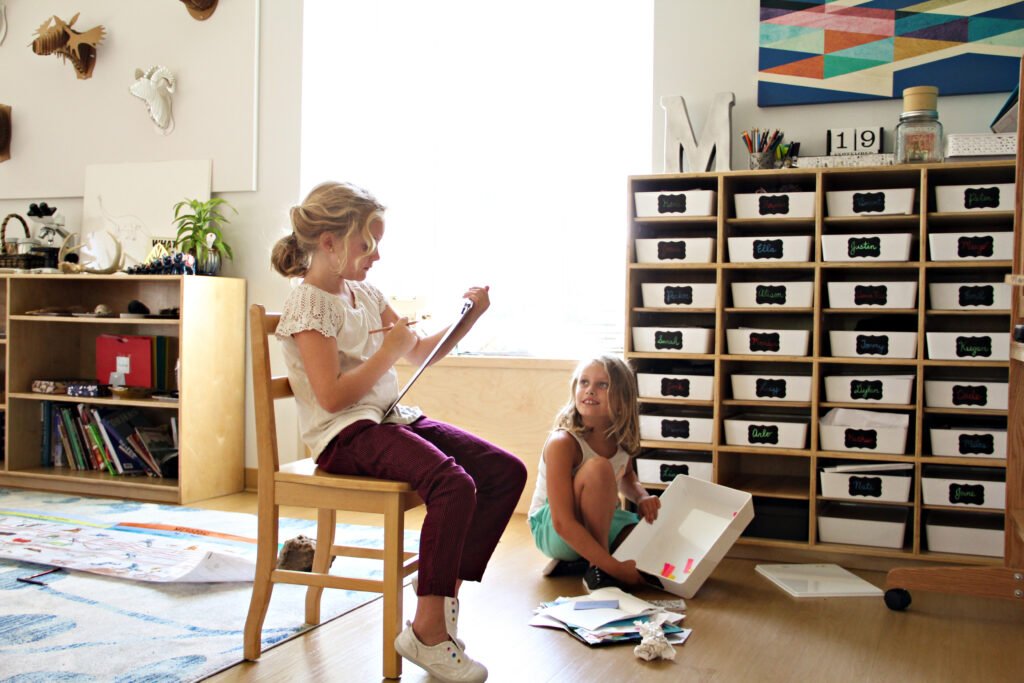 So, for those times when your child does look to you after accomplishing something and you want to do more than just smile...When your young child has put on their shoes how about, "You put them on!" Or when your child shows you their drawing, "You drew that. Would you like to tell me about what you drew?" These phrases show our pleasure in their success but they pin the pleasure more closely to the pleasure they internally experience through their own accomplishment. As your child grows, your feedback can become more explicitly linked to the process the child has gone through rather than the product. "You put your shoes on!" transitions into "You worked really hard to figure out how to solve that."(Think: growth mindset.)
So, for those times when your child does look to you after accomplishing something and you want to do more than just smile...When your young child has put on their shoes how about, "You put them on!" Or when your child shows you their drawing, "You drew that. Would you like to tell me about what you drew?" These phrases show our pleasure in their success but they pin the pleasure more closely to the pleasure they internally experience through their own accomplishment. As your child grows, your feedback can become more explicitly linked to the process the child has gone through rather than the product. "You put your shoes on!" transitions into "You worked really hard to figure out how to solve that."(Think: growth mindset.)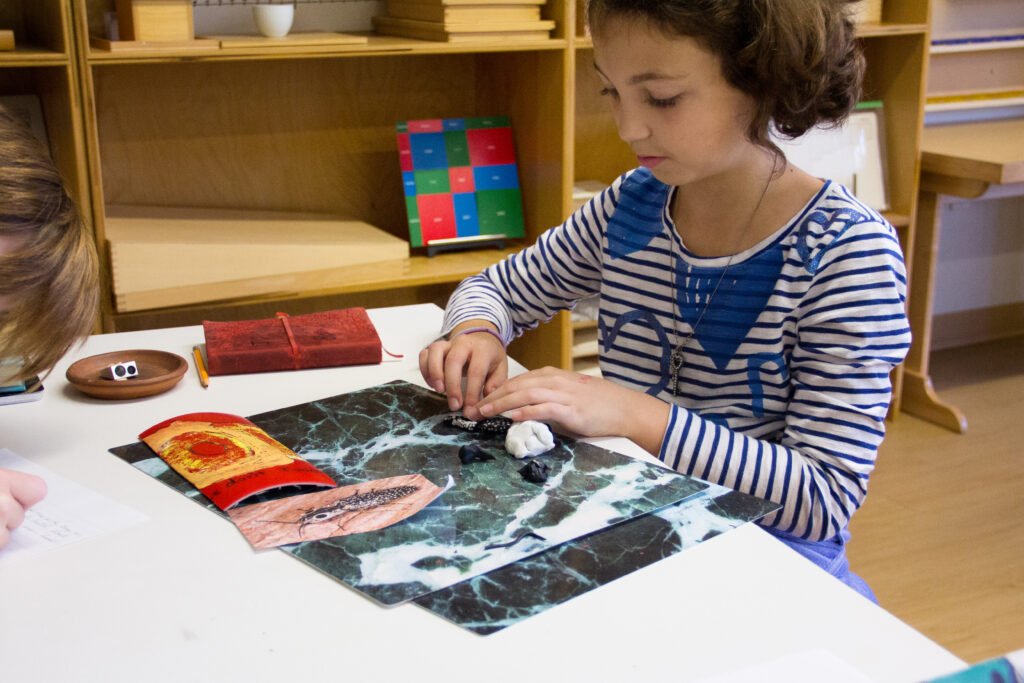 Lastly, overdoing the "Good job!" strips it of it's meaning. Our children either look for it at every turn or they dismiss it as meaningless because we use it incessantly. Save it for the time you need it. Keep its meaning intact.Okay, one last thought because supporting concentration is so very important ... please don't interrupt your children to praise them. If they are focused, don't break their concentration to let them know that you think they've done a good job. Their concentration speaks volumes about the contentment they get from their task at hand. Allow your children the pleasure of focus.Melinda, you knocked it out of the park yet again with this set of pictures! Thank you!
Lastly, overdoing the "Good job!" strips it of it's meaning. Our children either look for it at every turn or they dismiss it as meaningless because we use it incessantly. Save it for the time you need it. Keep its meaning intact.Okay, one last thought because supporting concentration is so very important ... please don't interrupt your children to praise them. If they are focused, don't break their concentration to let them know that you think they've done a good job. Their concentration speaks volumes about the contentment they get from their task at hand. Allow your children the pleasure of focus.Melinda, you knocked it out of the park yet again with this set of pictures! Thank you!
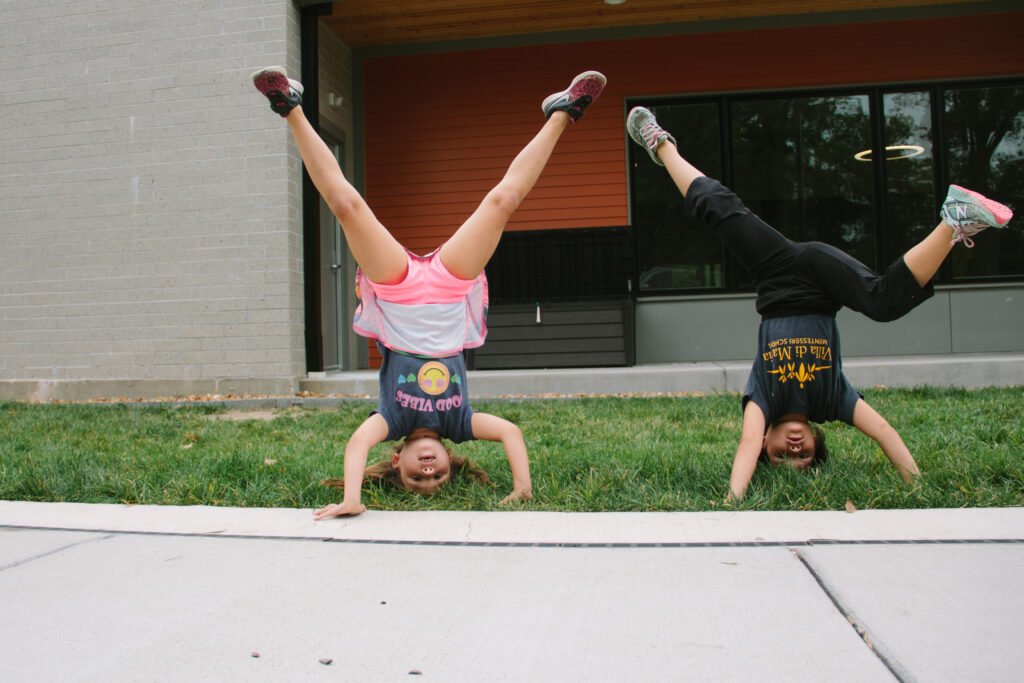
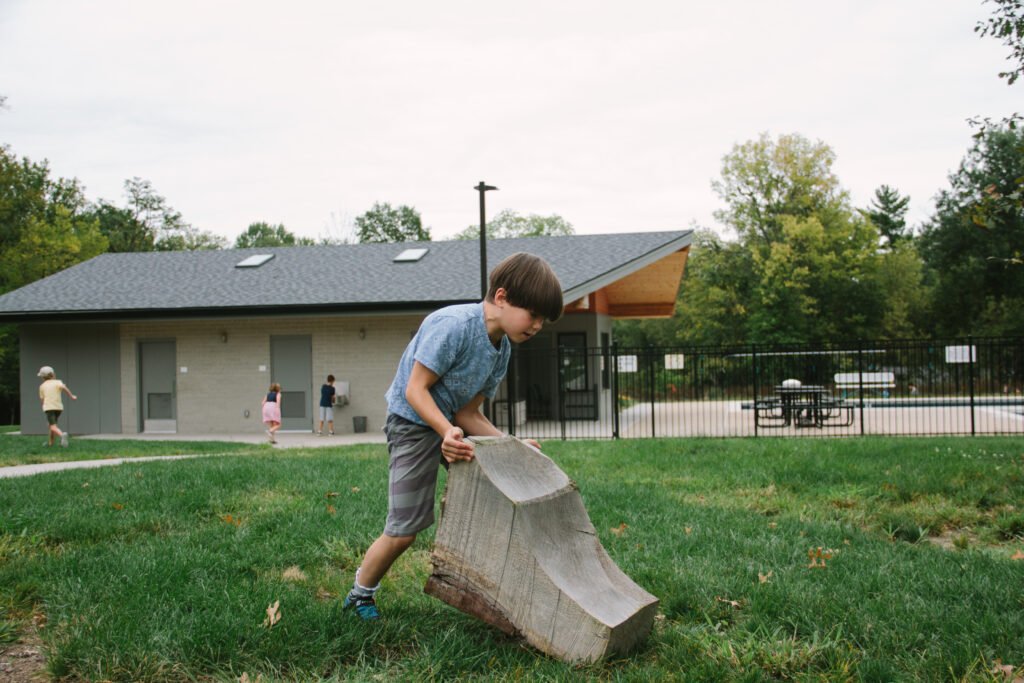 Not to mention all of this important work...
Not to mention all of this important work...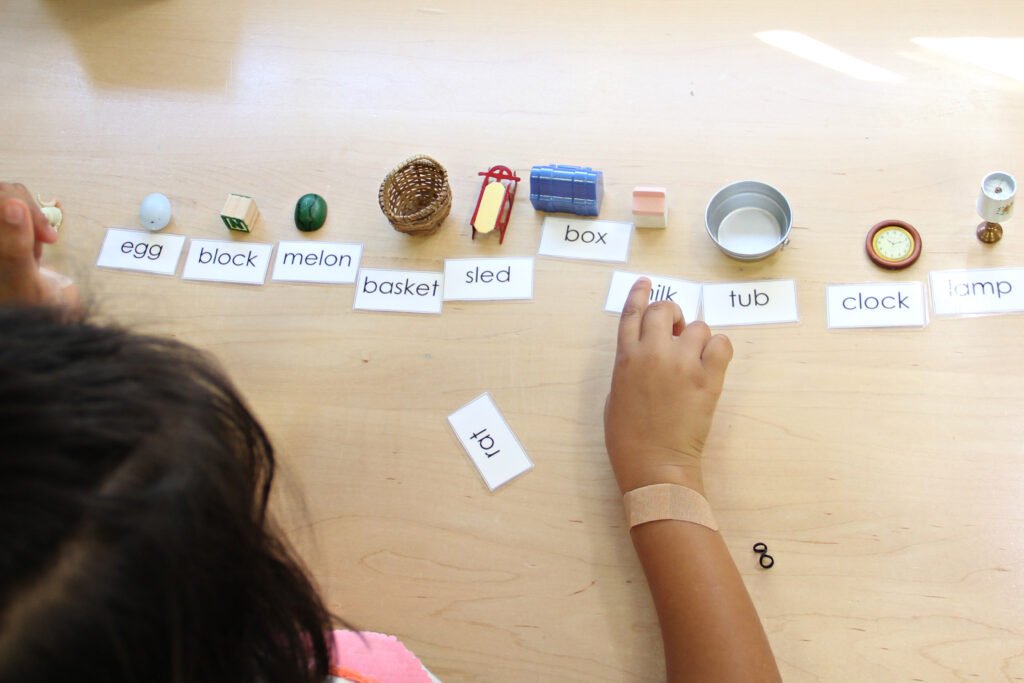
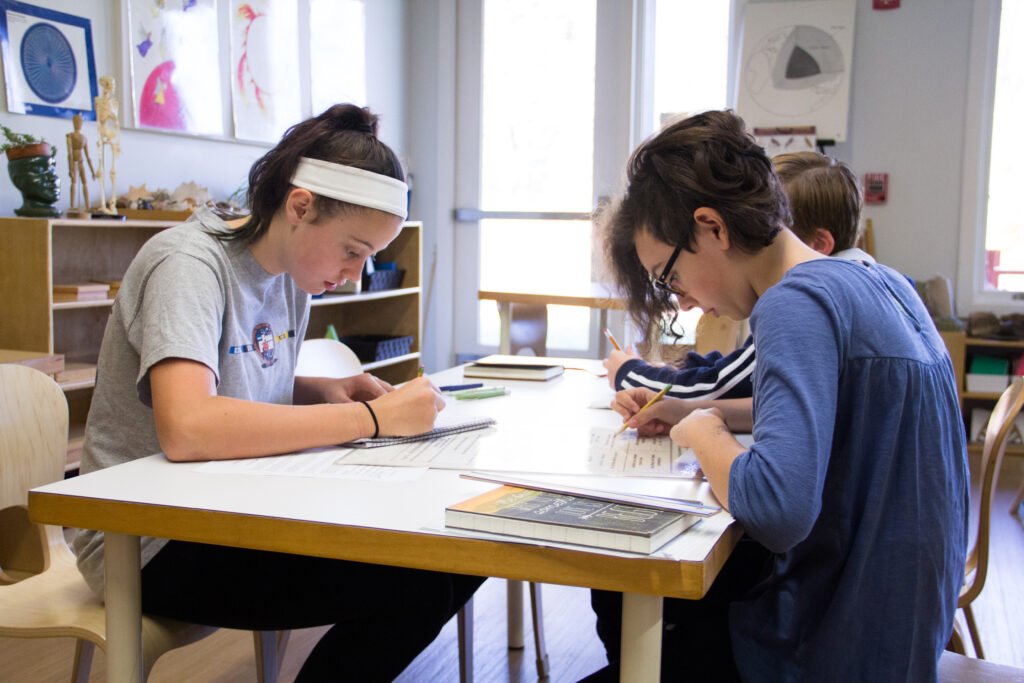 Depends on, and needs to be balanced with, lots and lots of...
Depends on, and needs to be balanced with, lots and lots of... Here are a few things to keep in mind:1) Children act differently when they are tired. Sometimes getting overly upset, being inflexible, not being able to concentrate or being grumpy, is just a sign of tiredness. If you're having trouble with any of the above, look at your child's sleep patterns. Are they consistently getting enough sleep?2) Sleep begets sleep. Staying up late does not equal sleeping in (especially for children!). Earlier to bed can equate to waking up later! The corollary to this is that sleep deprivation adds up. In other words, *carefully* dole out those late nights. There's no shame in being the parent that leaves the park early. Sleep is important!3) Bedtime is not the same as asleep time. When you check those
Here are a few things to keep in mind:1) Children act differently when they are tired. Sometimes getting overly upset, being inflexible, not being able to concentrate or being grumpy, is just a sign of tiredness. If you're having trouble with any of the above, look at your child's sleep patterns. Are they consistently getting enough sleep?2) Sleep begets sleep. Staying up late does not equal sleeping in (especially for children!). Earlier to bed can equate to waking up later! The corollary to this is that sleep deprivation adds up. In other words, *carefully* dole out those late nights. There's no shame in being the parent that leaves the park early. Sleep is important!3) Bedtime is not the same as asleep time. When you check those 
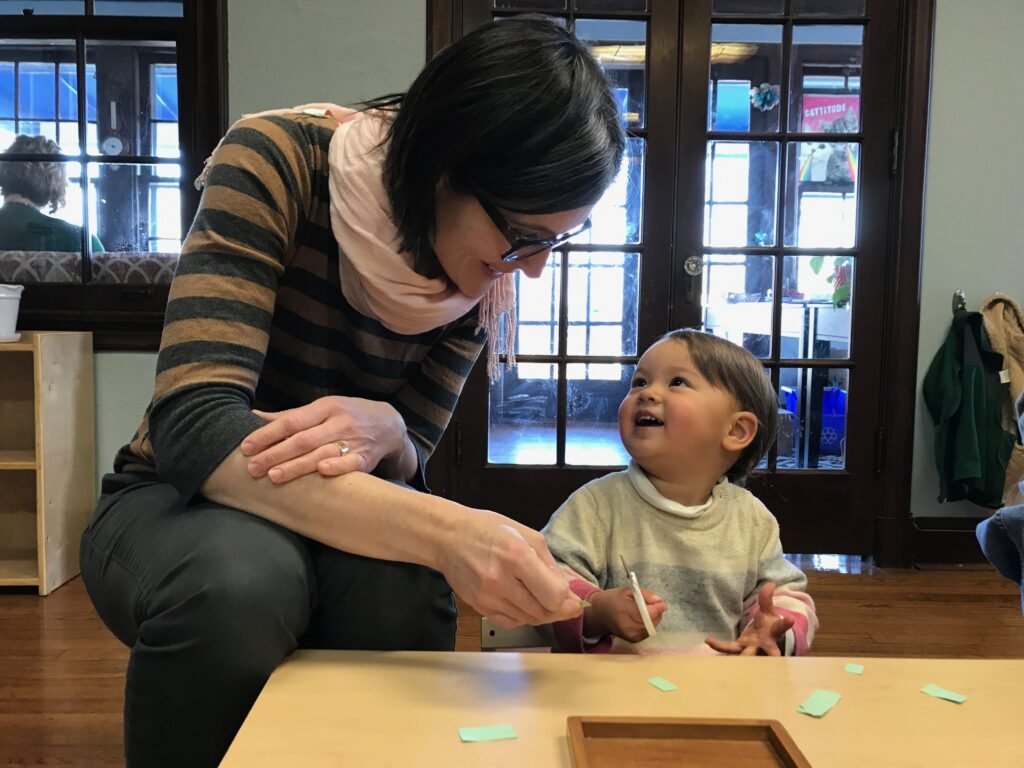
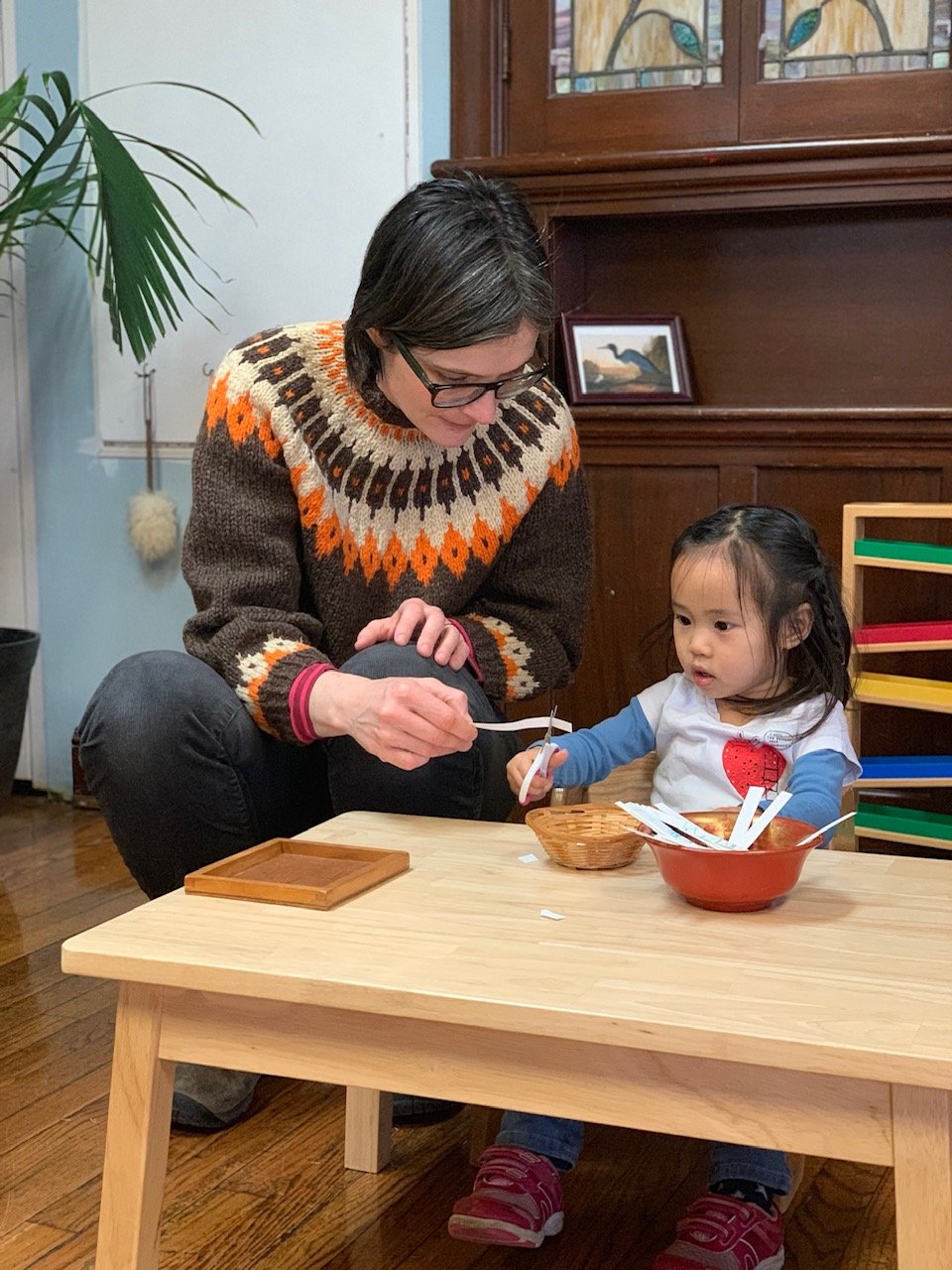
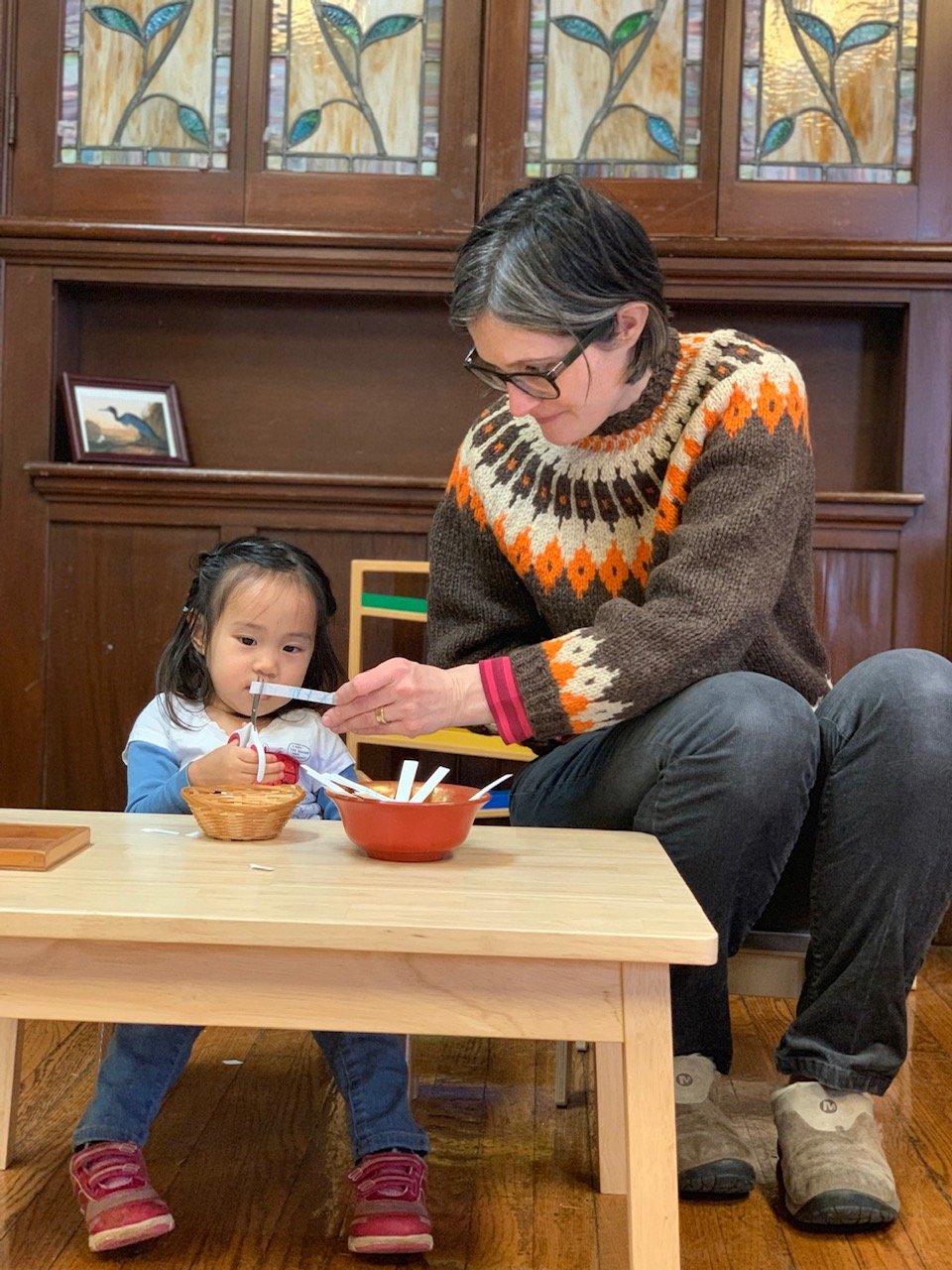
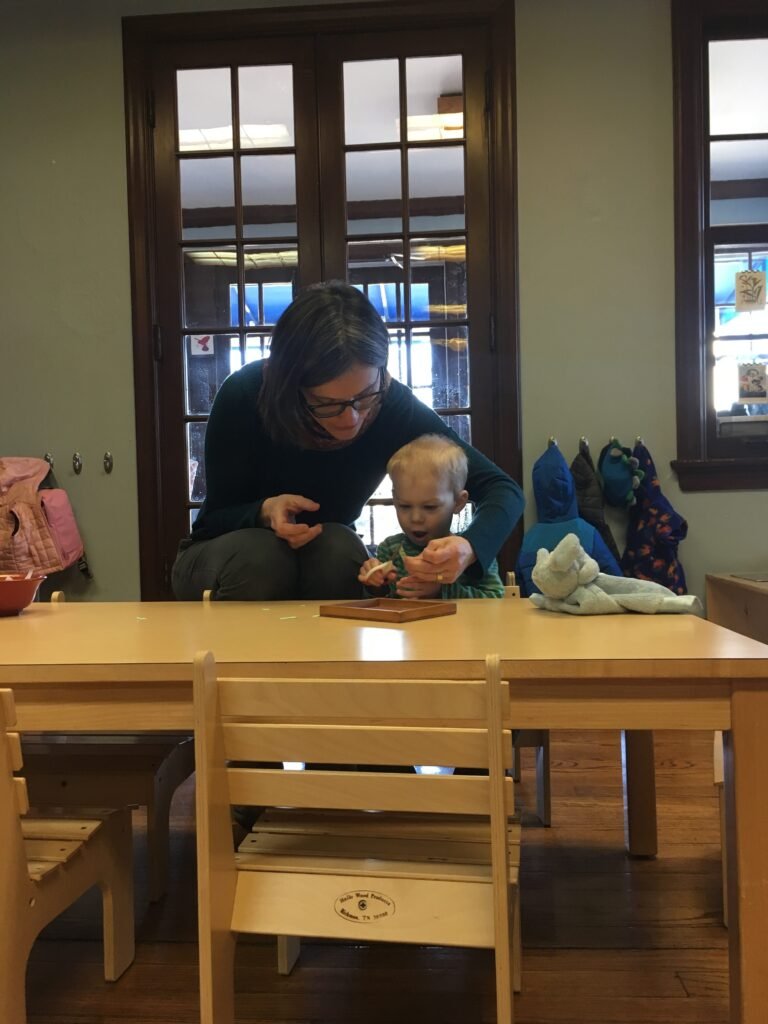

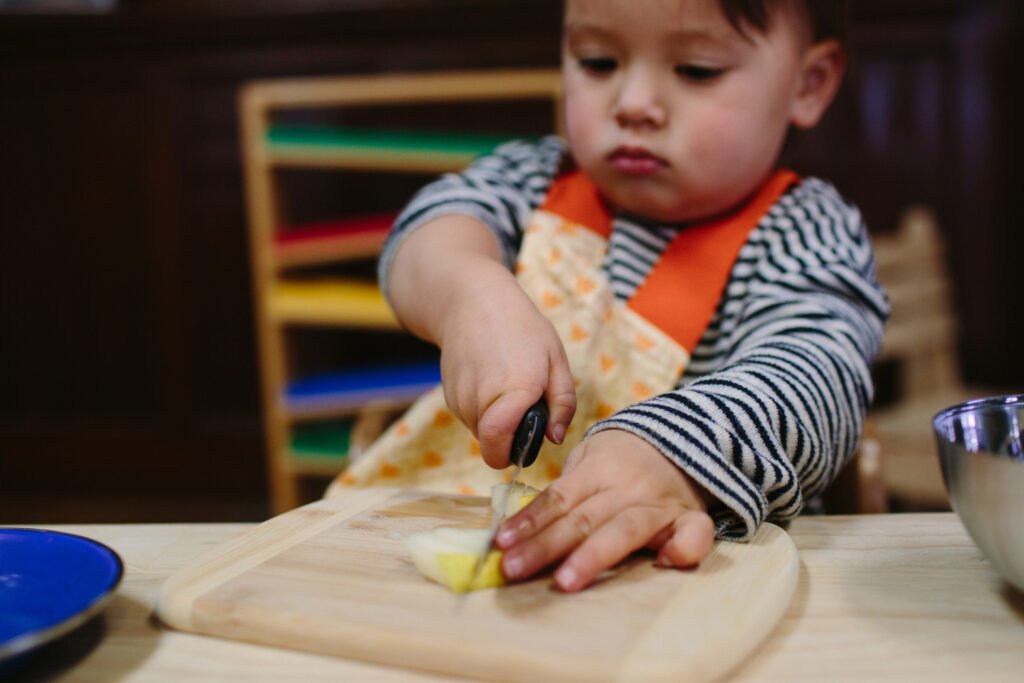
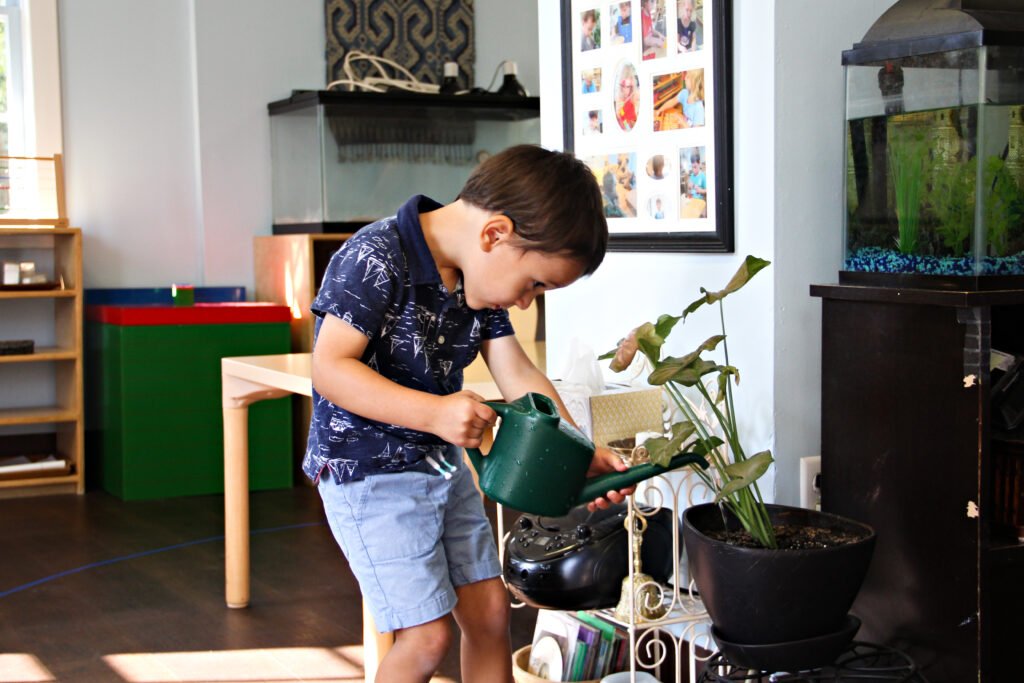 Transitioning toward independence can be difficult - we carried and dressed and fed out of love. It's understandable that we may be slow to give up these signs of love. However, our children grow, change and need us differently. As this happens, our love can now be manifest through a willingness to let them gradually take on the tasks of humanity. We are given the opportunity to love our children into independence.
Transitioning toward independence can be difficult - we carried and dressed and fed out of love. It's understandable that we may be slow to give up these signs of love. However, our children grow, change and need us differently. As this happens, our love can now be manifest through a willingness to let them gradually take on the tasks of humanity. We are given the opportunity to love our children into independence.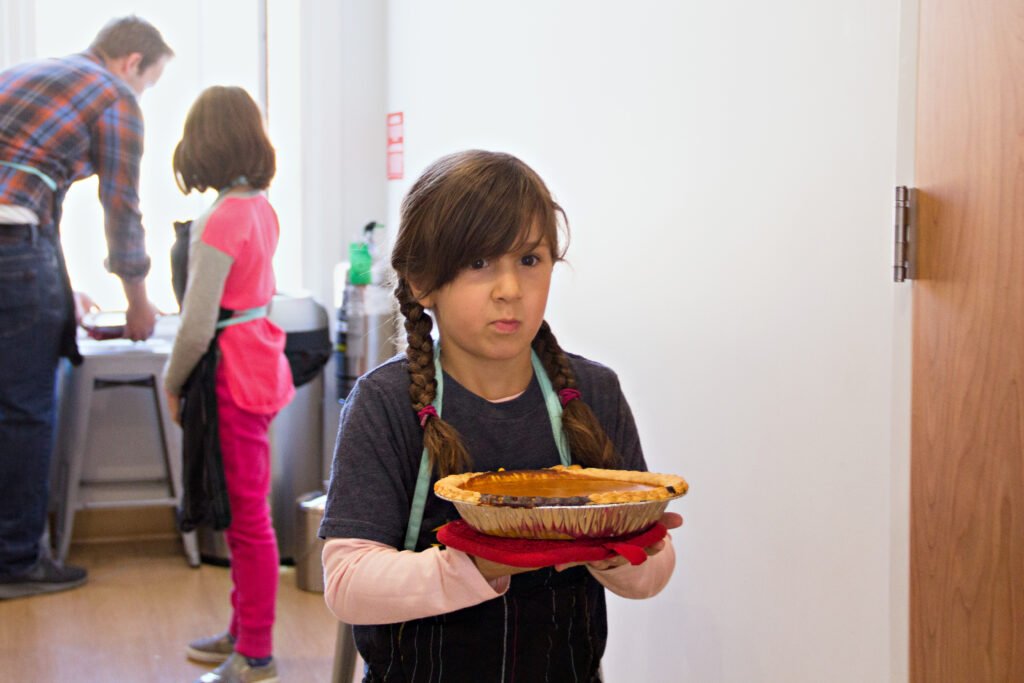 Each child's and each family's path toward independence will look a little different. That said, there are times when particular steps can be made most easily. If we allow children to acquire life skills at the moments when they are interested, we have done them - and ourselves - a great favor. When the child's internal motivation has passed, skills must be taught rather than naturally acquired and children often push back. On our children's journey towards independence we're looking for these choice times when acquisitions are made most naturally. Parenting is made easier by giving your child the right kind of independence at the right time. It serves no one to wait too long to allow children to grow.
Each child's and each family's path toward independence will look a little different. That said, there are times when particular steps can be made most easily. If we allow children to acquire life skills at the moments when they are interested, we have done them - and ourselves - a great favor. When the child's internal motivation has passed, skills must be taught rather than naturally acquired and children often push back. On our children's journey towards independence we're looking for these choice times when acquisitions are made most naturally. Parenting is made easier by giving your child the right kind of independence at the right time. It serves no one to wait too long to allow children to grow.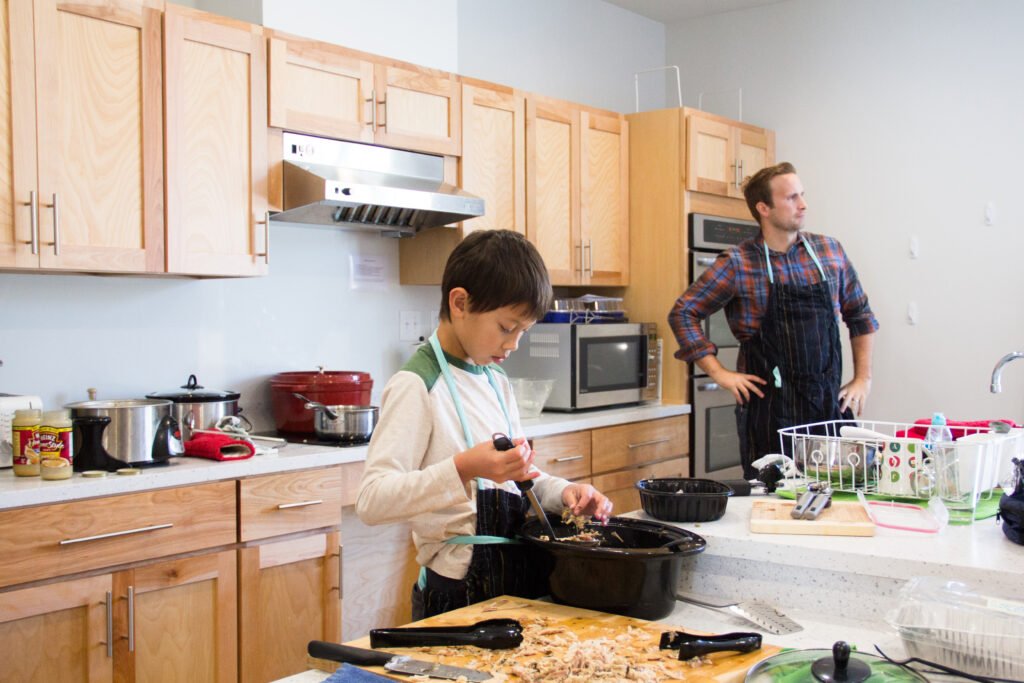 The road is, of course, bumpy. We never hit all the magic times, and it can feel overwhelming to try. Here are two hints for finding these opportune moments for your child. First, observe them. When you notice that your child is trying to do something - let them. When you think your child seems ready to do something alone or for themselves - let them try. Second, talk to your child's guide. There are many acquisitions that happen on a similar trajectory for most children. Guides are masters of this knowledge! Go to parent education, reach out, ask and let your community support you in this endeavor. This is not work you have to do alone.
The road is, of course, bumpy. We never hit all the magic times, and it can feel overwhelming to try. Here are two hints for finding these opportune moments for your child. First, observe them. When you notice that your child is trying to do something - let them. When you think your child seems ready to do something alone or for themselves - let them try. Second, talk to your child's guide. There are many acquisitions that happen on a similar trajectory for most children. Guides are masters of this knowledge! Go to parent education, reach out, ask and let your community support you in this endeavor. This is not work you have to do alone.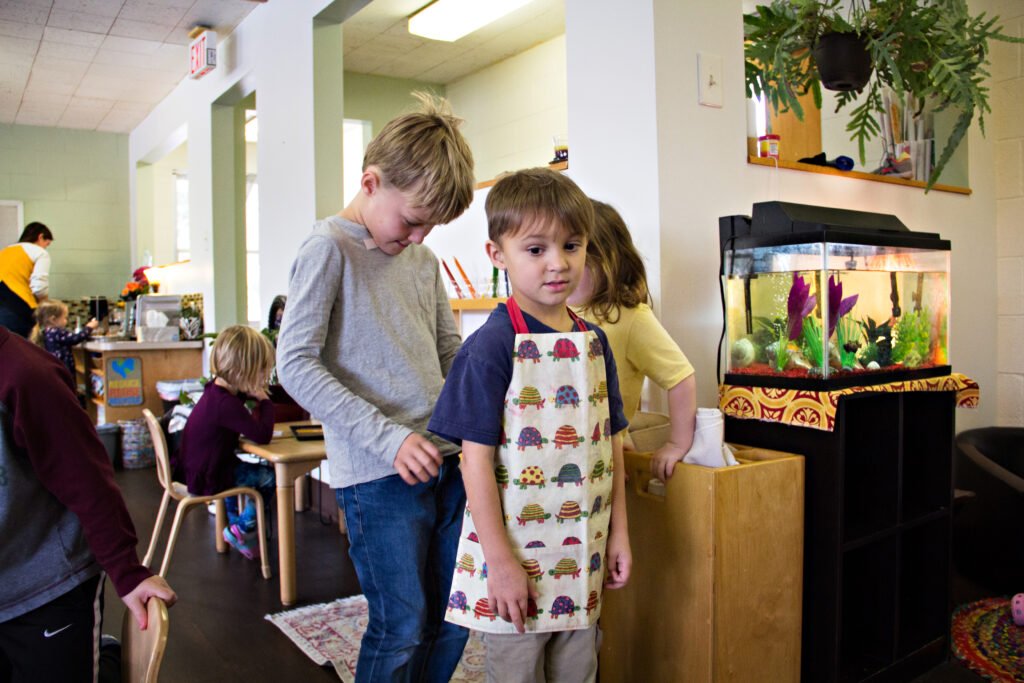 Don't get caught in the false dichotomy of love and independence - it is not an either/or choice. The path of love and independence is a beautiful dance of providing what is needed, of letting go, of being there to hold space for the child as they explore the world themselves and of letting them take off on their own.My thanks, as always, to the photographic genius of Melinda Smith.
Don't get caught in the false dichotomy of love and independence - it is not an either/or choice. The path of love and independence is a beautiful dance of providing what is needed, of letting go, of being there to hold space for the child as they explore the world themselves and of letting them take off on their own.My thanks, as always, to the photographic genius of Melinda Smith.
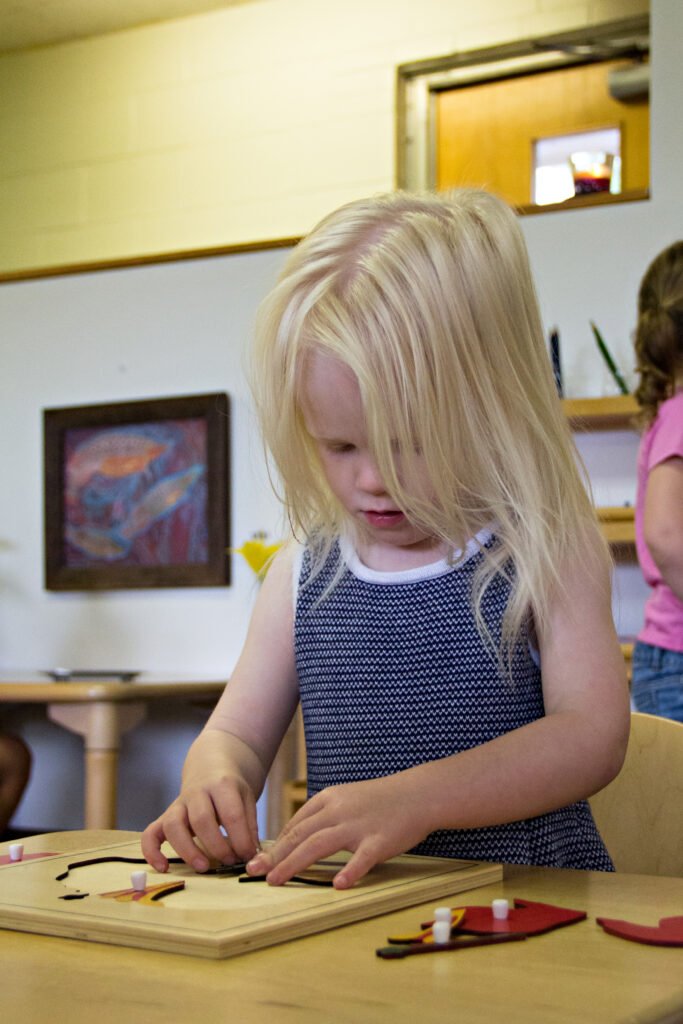 The new year is often a time when folks embrace change and take ownership of different parts of their lives or routines. While these changes and shifts can happen at any time, there's something about the newness of the year which inspires us and boosts our motivation.The new year can also be a good time to revisit our children's routines. Below please find a few blog posts to reflect on in terms of rebooting some of your routines at home. While too much change can be overwhelming for young children, they can handle more change when the adjustments allow routines to better meet their needs!Here's to a fantastic 2019!http://www.montessori-blog.org/2018/10/24/mornings-screens-and-a-bit-on-executive-functions/http://www.montessori-blog.org/2018/09/01/lunch-part-1/http://www.montessori-blog.org/2017/11/02/the-importance-of-sleep-5-tips-to-establishing-good-sleep-habits/Thanks to Melinda Smith for the photograph!
The new year is often a time when folks embrace change and take ownership of different parts of their lives or routines. While these changes and shifts can happen at any time, there's something about the newness of the year which inspires us and boosts our motivation.The new year can also be a good time to revisit our children's routines. Below please find a few blog posts to reflect on in terms of rebooting some of your routines at home. While too much change can be overwhelming for young children, they can handle more change when the adjustments allow routines to better meet their needs!Here's to a fantastic 2019!http://www.montessori-blog.org/2018/10/24/mornings-screens-and-a-bit-on-executive-functions/http://www.montessori-blog.org/2018/09/01/lunch-part-1/http://www.montessori-blog.org/2017/11/02/the-importance-of-sleep-5-tips-to-establishing-good-sleep-habits/Thanks to Melinda Smith for the photograph!
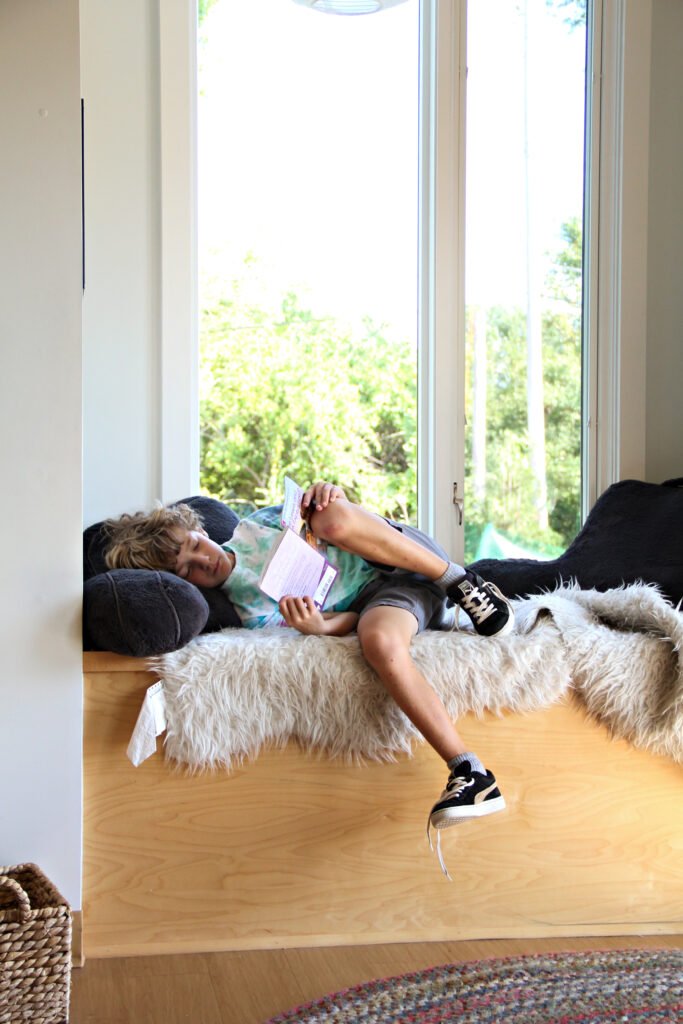 Reading to your children is wonderful. Please keep doing it. If you're not already in the habit of reading to your child every day, start the habit now! Bedtime is the classic time but for those children who wake extra early, morning reading can be a great way to enter the day. Any time that works for you family is a good time.
Reading to your children is wonderful. Please keep doing it. If you're not already in the habit of reading to your child every day, start the habit now! Bedtime is the classic time but for those children who wake extra early, morning reading can be a great way to enter the day. Any time that works for you family is a good time.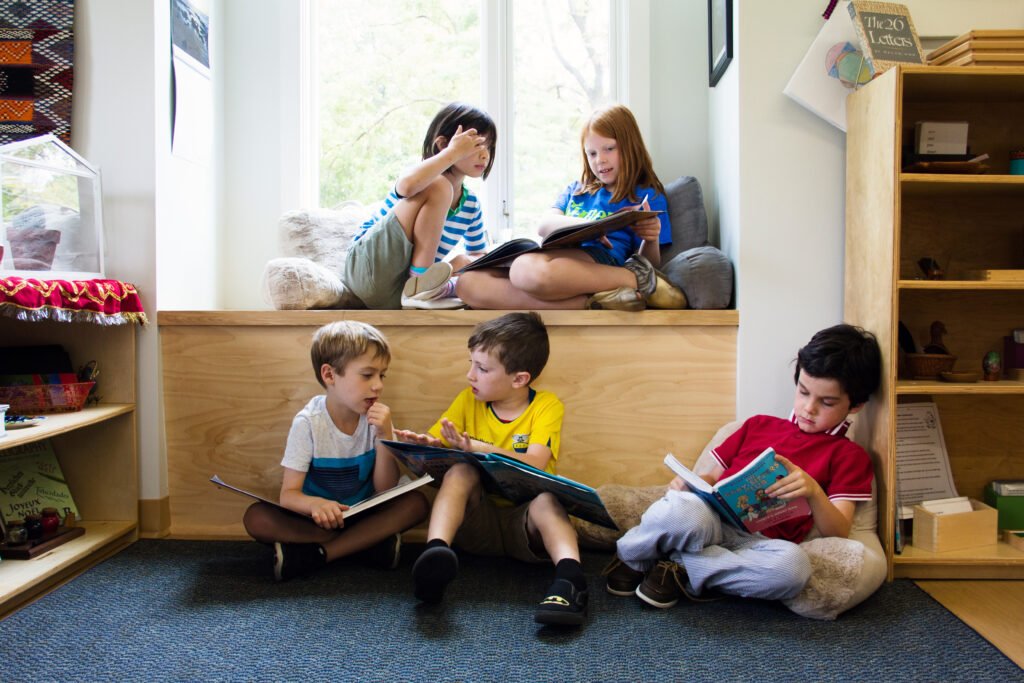 Another powerful way to foster a love of reading in your child is to simply read yourself. Pick up a book and read - to yourself, by yourself - and let them see you doing it. Children emulate what we do. They learn how to navigate the world from us. So, if you want reading to be part of their lives, make it a part of your life in such a way that they can see it.
Another powerful way to foster a love of reading in your child is to simply read yourself. Pick up a book and read - to yourself, by yourself - and let them see you doing it. Children emulate what we do. They learn how to navigate the world from us. So, if you want reading to be part of their lives, make it a part of your life in such a way that they can see it.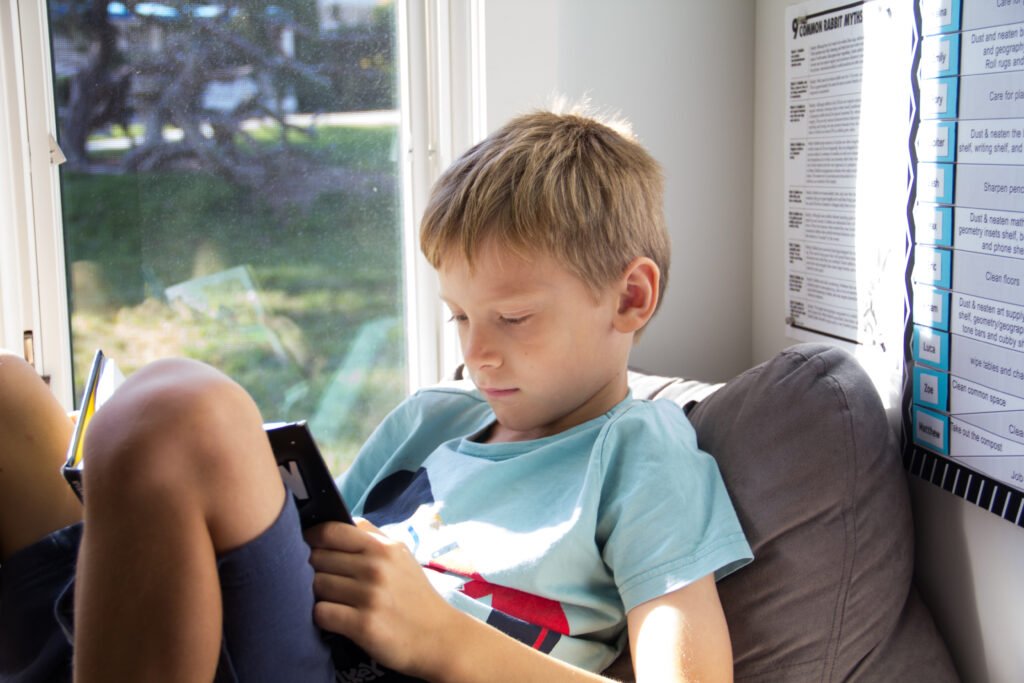 Many adults read at night before bed, and as relaxing as this may be for us, our children do not typically observe this part of our day. So, yes this is your excuse to let the dishes sit in the sink and read. Show your children the magic of being caught in a book so good that you can't put it down. When you're sitting in line at dismissal pick up your book instead of your phone. Make regular trips with your children to the library and make sure they know that at some point it's your turn to look through the stacks for books or pick up the books you've requested. Read. Just like they will want to play on your phone if they see you on your phone... they will also want to know the magic of books if they see that it's a part of your life. Let reading permeate the culture of your family.
Many adults read at night before bed, and as relaxing as this may be for us, our children do not typically observe this part of our day. So, yes this is your excuse to let the dishes sit in the sink and read. Show your children the magic of being caught in a book so good that you can't put it down. When you're sitting in line at dismissal pick up your book instead of your phone. Make regular trips with your children to the library and make sure they know that at some point it's your turn to look through the stacks for books or pick up the books you've requested. Read. Just like they will want to play on your phone if they see you on your phone... they will also want to know the magic of books if they see that it's a part of your life. Let reading permeate the culture of your family. Thank you Melinda for all your mad photo taking skills.
Thank you Melinda for all your mad photo taking skills.
 We shouldn't abdicate responsibility for our mistakes, however many of us beat ourselves up over our every failing, shortcoming or momentary slip. I’m going to suggest that we instead embrace forgiveness. Yes, you've made a mistake. Yes, you can find a way to move forward. Let's make an effort as parents to deal with our mistakes in a manner that we’d want our children to emulate as they inevitably face their own shortcomings. Show them how to face imperfection.Treat yourself the way you would like your child to treat themselves. Your child is learning from you just how hard to be on themselves. Take responsibility, find a good solution and forgive yourself.
We shouldn't abdicate responsibility for our mistakes, however many of us beat ourselves up over our every failing, shortcoming or momentary slip. I’m going to suggest that we instead embrace forgiveness. Yes, you've made a mistake. Yes, you can find a way to move forward. Let's make an effort as parents to deal with our mistakes in a manner that we’d want our children to emulate as they inevitably face their own shortcomings. Show them how to face imperfection.Treat yourself the way you would like your child to treat themselves. Your child is learning from you just how hard to be on themselves. Take responsibility, find a good solution and forgive yourself.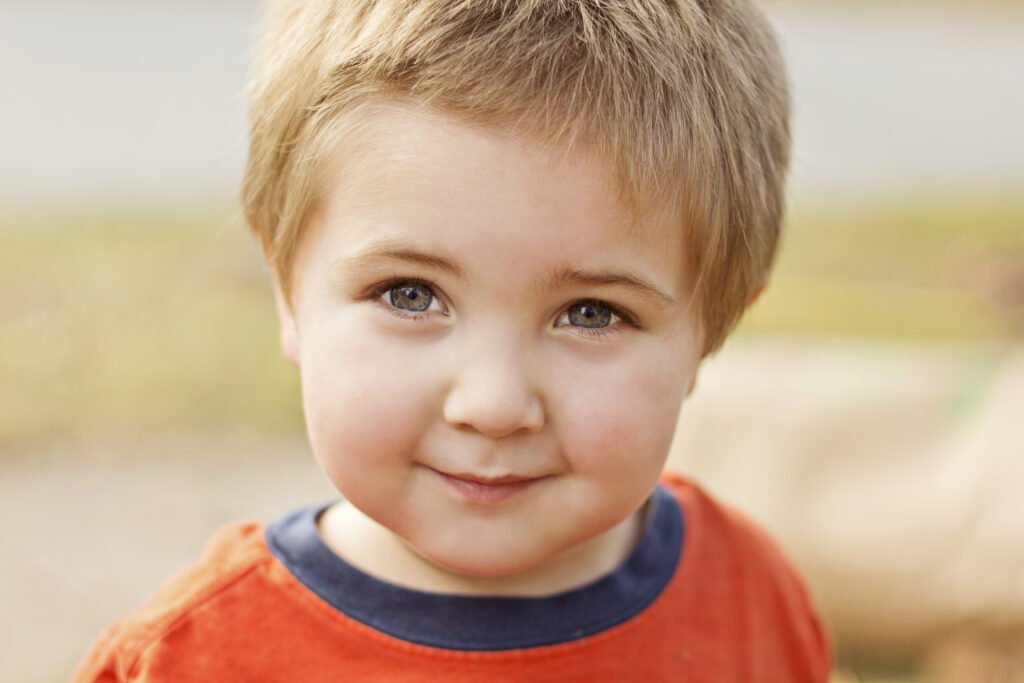 All photographic credit is due to Erin Drago.
All photographic credit is due to Erin Drago.
 Practical Life constitutes some of the first lessons that children are given in the Children’s House. The children are drawn to this type of work. Even if the form is different, these lessons are fundamentally connected to the work they see the adults in their lives engaging in.
Practical Life constitutes some of the first lessons that children are given in the Children’s House. The children are drawn to this type of work. Even if the form is different, these lessons are fundamentally connected to the work they see the adults in their lives engaging in.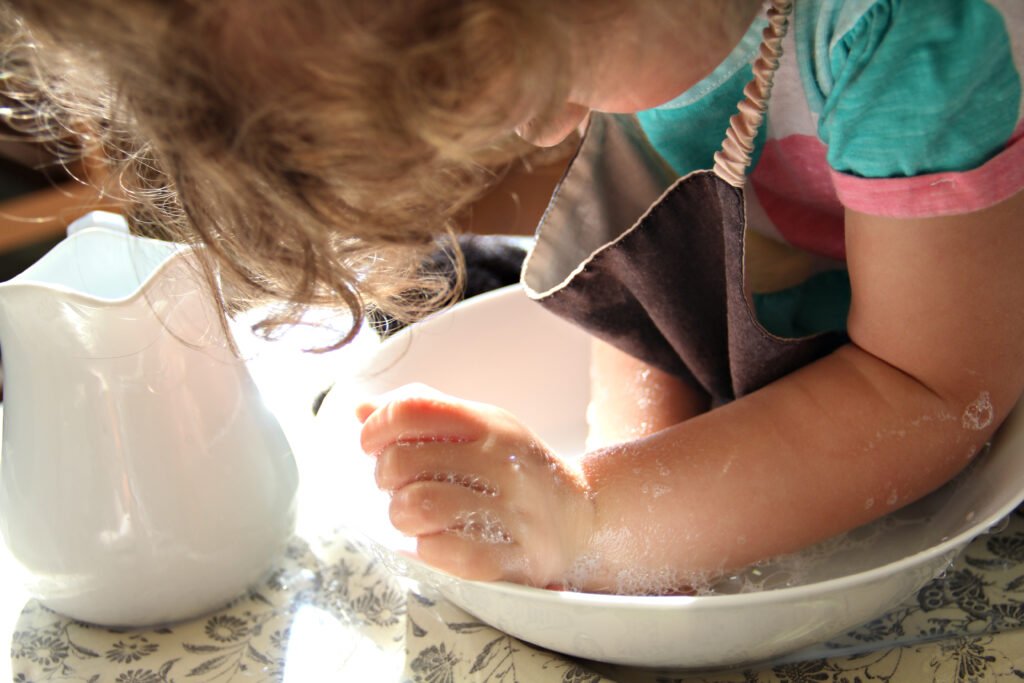 Practical Life is the work of independence. It begins at home with dressing oneself, putting on one's shoes, feeding oneself. In the Children's House the child is given the opportunity to grow these skills.
Practical Life is the work of independence. It begins at home with dressing oneself, putting on one's shoes, feeding oneself. In the Children's House the child is given the opportunity to grow these skills.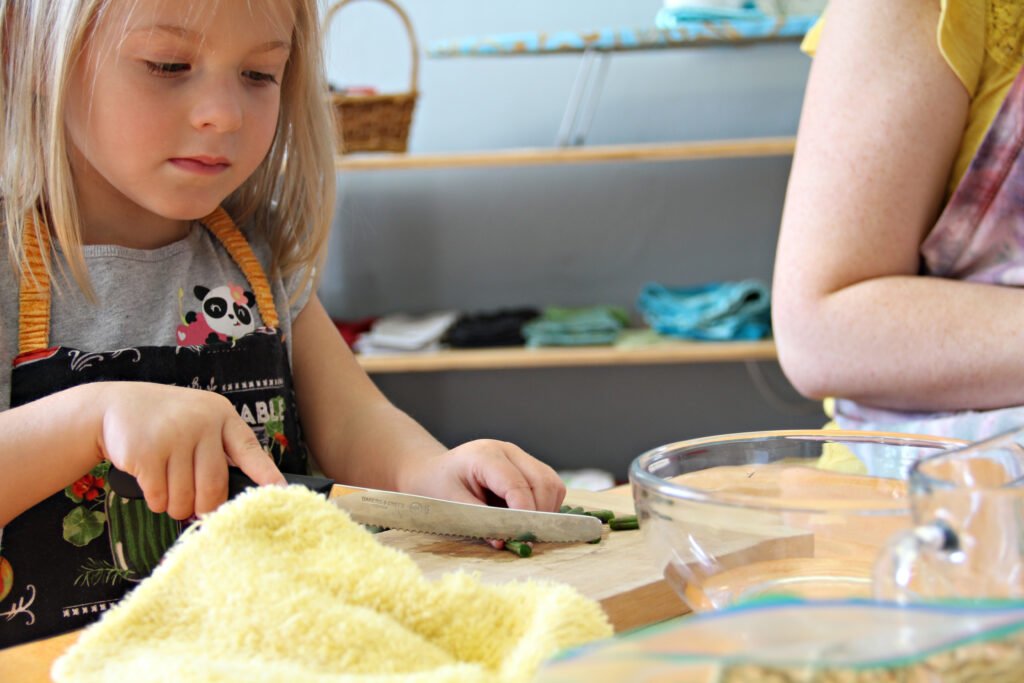 How beautiful it is to see young children washing their hands, scrubbing tables and cutting vegetables. There is an inherent goodness to these activities. The work is purposeful and consuming; the outcome is measurable and satisfying; the children, as a result, are calm and centered.Practical Life work expands as the child turns from activities centered around the care of the self (e.g., Hand Washing) to those that encompass the care of the environment (e.g., Table Washing, Sweeping). As young children more firmly develop their sense of self and begin to master those skills which enable them to take care of themselves, they can broaden their focus to include the world outside of themselves. Their interest in the environment is met with Practical Life work which involves them in the care of their surroundings. This is done in a way that builds their sense of ownership of the classroom as well as their role in the community
How beautiful it is to see young children washing their hands, scrubbing tables and cutting vegetables. There is an inherent goodness to these activities. The work is purposeful and consuming; the outcome is measurable and satisfying; the children, as a result, are calm and centered.Practical Life work expands as the child turns from activities centered around the care of the self (e.g., Hand Washing) to those that encompass the care of the environment (e.g., Table Washing, Sweeping). As young children more firmly develop their sense of self and begin to master those skills which enable them to take care of themselves, they can broaden their focus to include the world outside of themselves. Their interest in the environment is met with Practical Life work which involves them in the care of their surroundings. This is done in a way that builds their sense of ownership of the classroom as well as their role in the community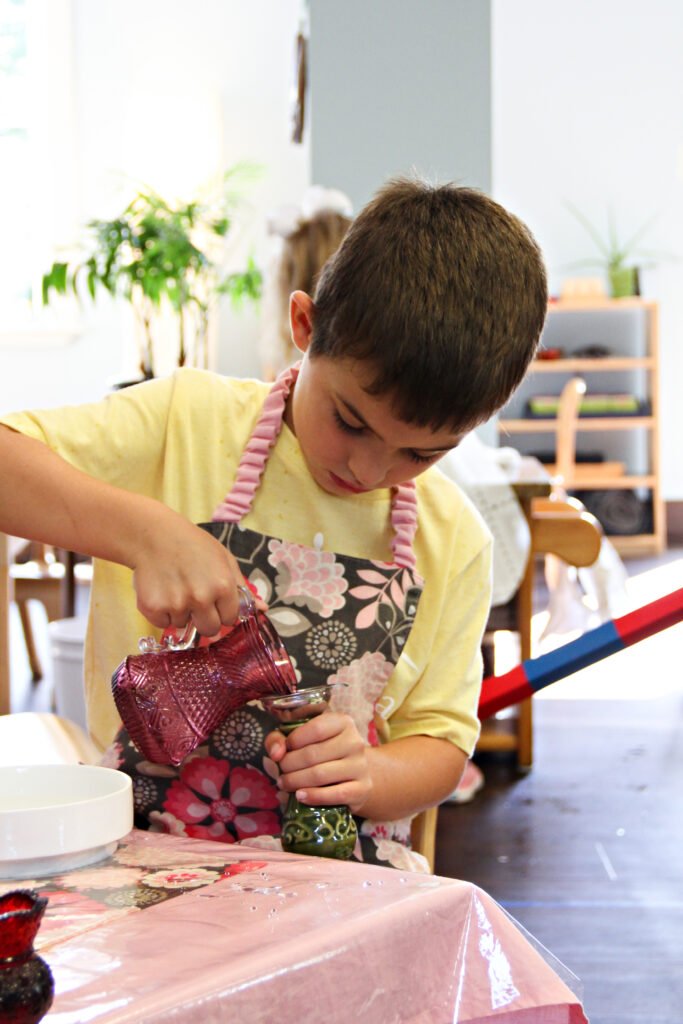 In Practical Life exercises such as flower arranging and ironing, the child’s care for the environment goes beyond necessities such as cleaning and food preparation and incorporates the beautification of the environment.
In Practical Life exercises such as flower arranging and ironing, the child’s care for the environment goes beyond necessities such as cleaning and food preparation and incorporates the beautification of the environment.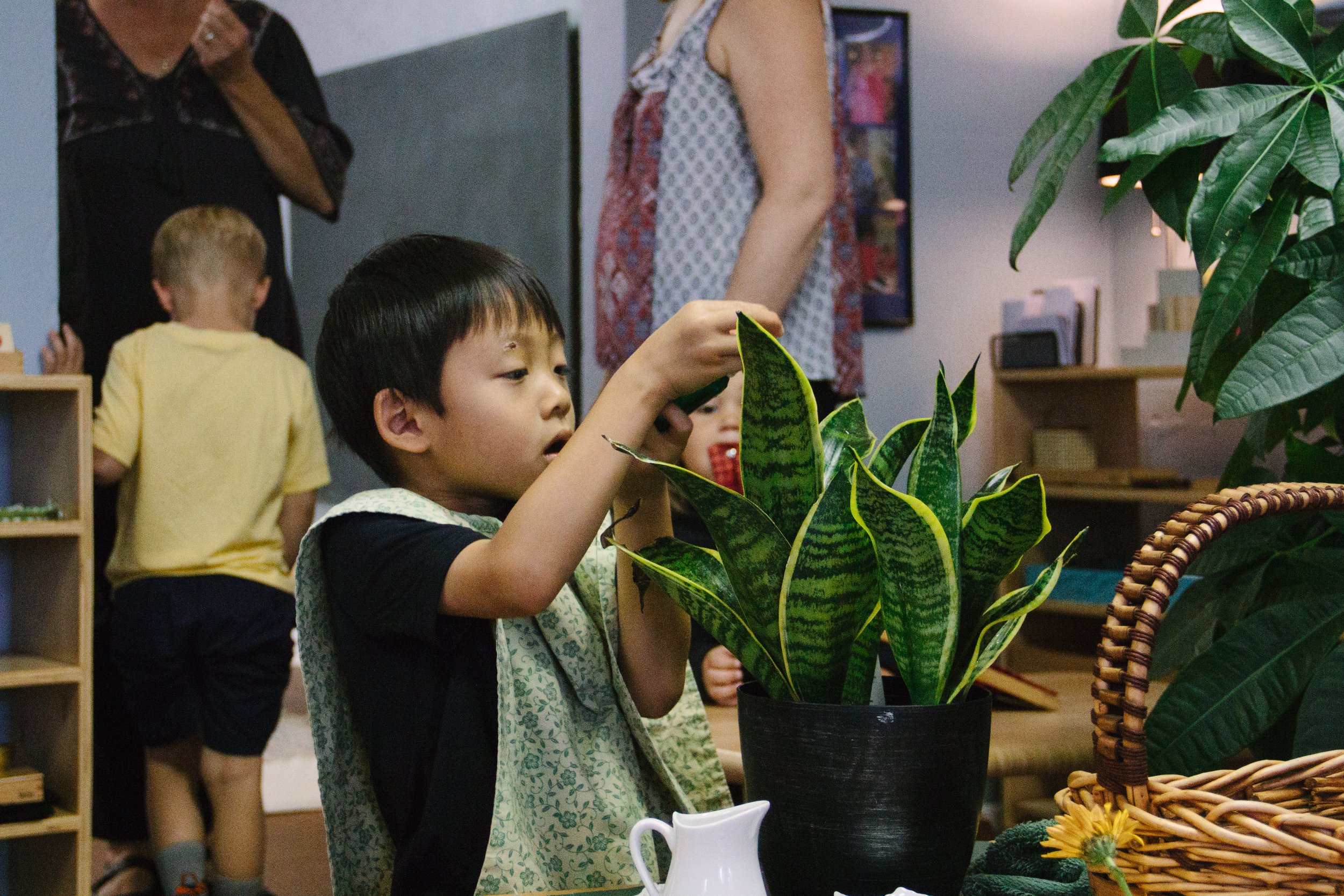 Practical Life does not end in the Children's House. It continues to develop as the child’s relationship to their environment changes. Throughout the year we’ll delve deeper into the many aspects of Practical Life and examine how it evolves as the children move on to Elementary.Thanks as always to fabulously talented Melinda Smith for her photographic skills.
Practical Life does not end in the Children's House. It continues to develop as the child’s relationship to their environment changes. Throughout the year we’ll delve deeper into the many aspects of Practical Life and examine how it evolves as the children move on to Elementary.Thanks as always to fabulously talented Melinda Smith for her photographic skills.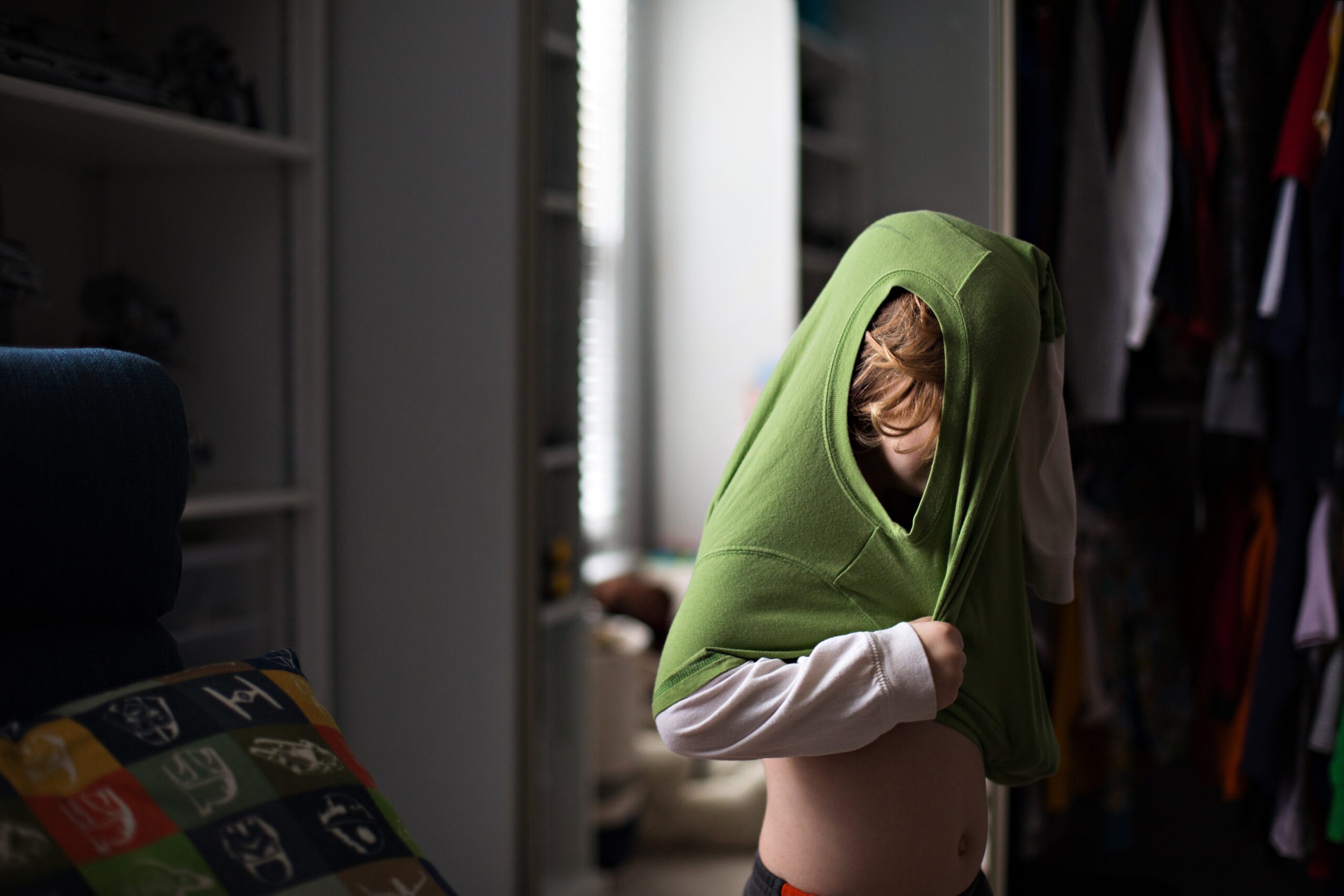
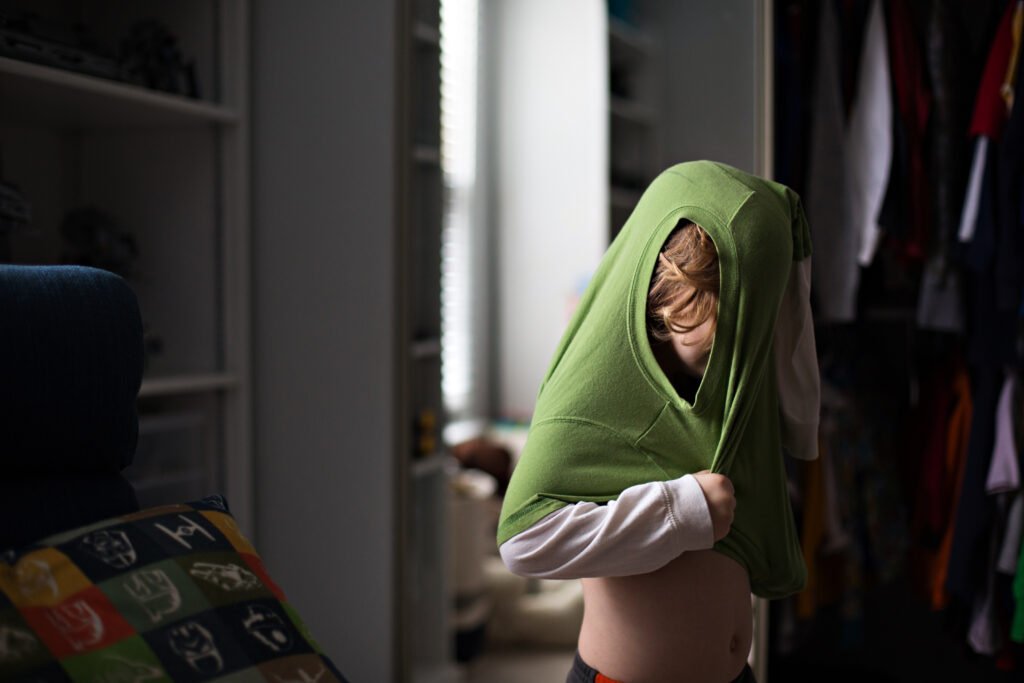 There's no judgment here. It's easy to see why screens are appealing. They may seem to help your child stay at the table and finish breakfast or offer a distraction so you can shower and get ready for work. Perhaps the promise of a video on the car ride to school makes it easier to get into the car. Here’s our plea: please don’t offer a screen in the morning. Together let’s find another way. If you don’t need convincing about why to make the change and just want to know how to do it, feel free to skip the next couple of paragraphs.Why avoid screens in the morning? Remember those real-life skills otherwise knows as
There's no judgment here. It's easy to see why screens are appealing. They may seem to help your child stay at the table and finish breakfast or offer a distraction so you can shower and get ready for work. Perhaps the promise of a video on the car ride to school makes it easier to get into the car. Here’s our plea: please don’t offer a screen in the morning. Together let’s find another way. If you don’t need convincing about why to make the change and just want to know how to do it, feel free to skip the next couple of paragraphs.Why avoid screens in the morning? Remember those real-life skills otherwise knows as 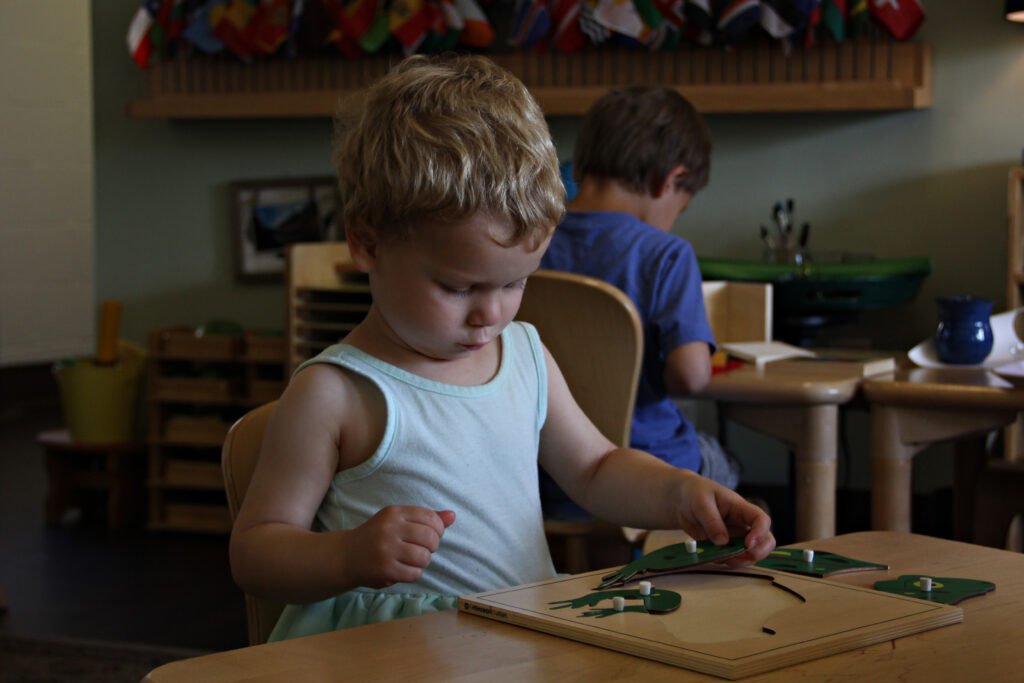 Drawing parallels between studies and real life can be difficult, so here’s something else to consider. Guides ask us not to use screens before school. Let’s trust our guides about what contributes to the children having a more successful day at school.
Drawing parallels between studies and real life can be difficult, so here’s something else to consider. Guides ask us not to use screens before school. Let’s trust our guides about what contributes to the children having a more successful day at school. So, how are you going to make the change? The first step is to commit to the decision. Then, to be blunt, just do it, cold turkey. Tell your children that screen time will no longer be part of their mornings (and evenings? weekdays in general?). As a parent, you are in charge of this decision. Yes, your children might complain. Yes, they might fight it. They will also adjust and transition, and ultimately you will see the benefit of the choice you made.This adjustment might require changes to your morning routine. Try to think about how and why you use the screens and make a plan to help alleviate these situations (think: adults showering at night, everyone sitting down to eat breakfast together, rearranging who gets ready when, etc.).
So, how are you going to make the change? The first step is to commit to the decision. Then, to be blunt, just do it, cold turkey. Tell your children that screen time will no longer be part of their mornings (and evenings? weekdays in general?). As a parent, you are in charge of this decision. Yes, your children might complain. Yes, they might fight it. They will also adjust and transition, and ultimately you will see the benefit of the choice you made.This adjustment might require changes to your morning routine. Try to think about how and why you use the screens and make a plan to help alleviate these situations (think: adults showering at night, everyone sitting down to eat breakfast together, rearranging who gets ready when, etc.).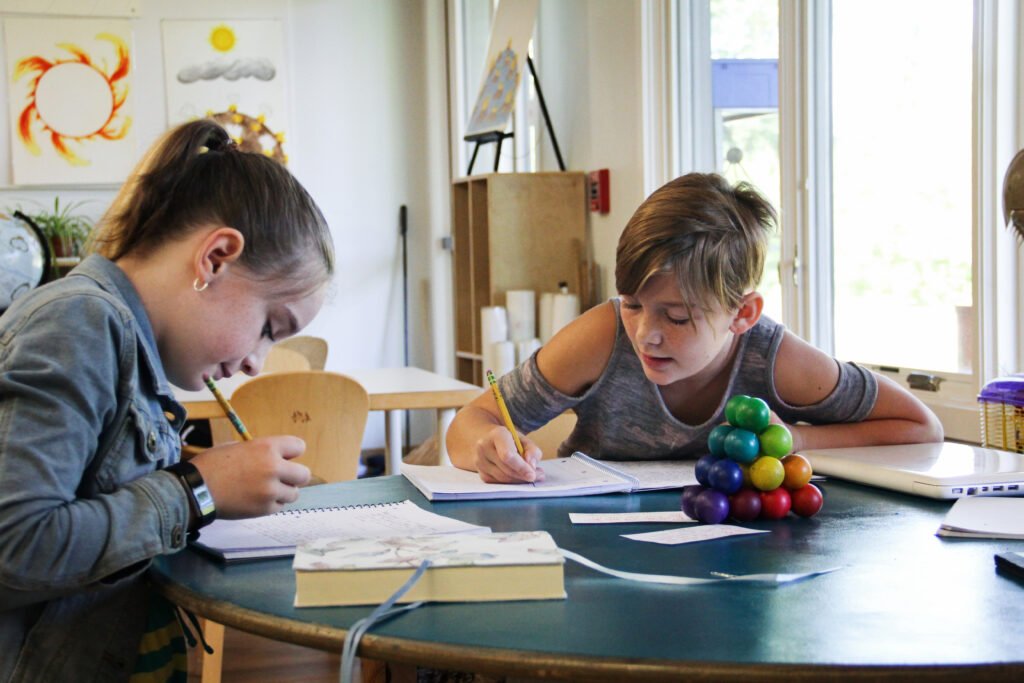 If you use screens on the drive to school here are some suggestions for your new screen-free ride to school – some of these can also be implemented in morning routines at home!
If you use screens on the drive to school here are some suggestions for your new screen-free ride to school – some of these can also be implemented in morning routines at home!
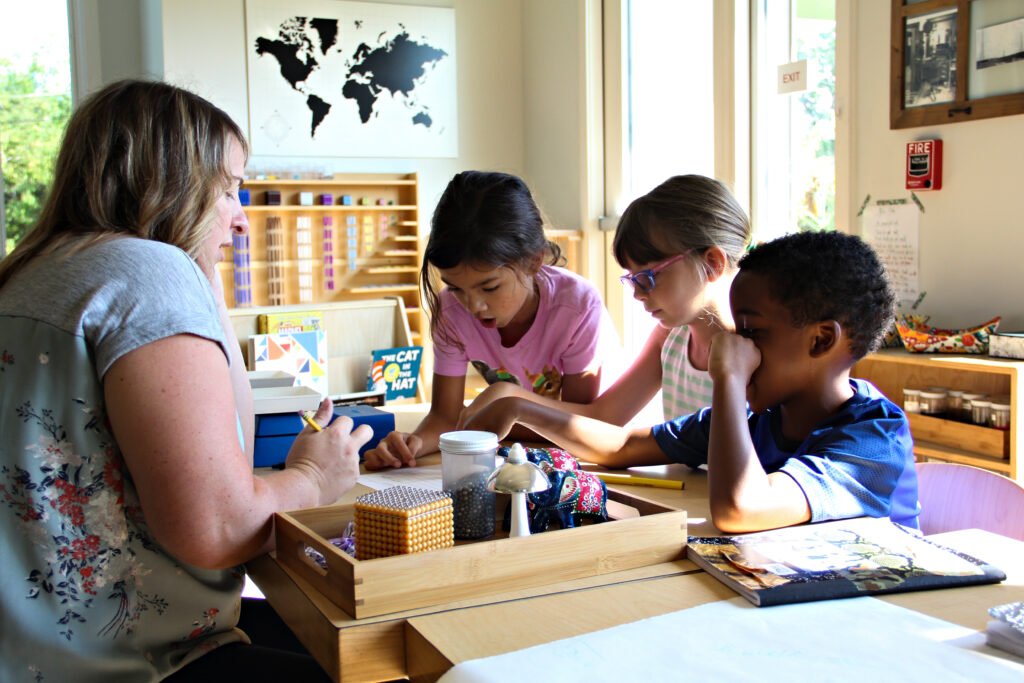 You’re making the change for a reason, hold out until you see the fruits of your effort! You can do this!Thank you, as always, for the beautiful photos Melinda!
You’re making the change for a reason, hold out until you see the fruits of your effort! You can do this!Thank you, as always, for the beautiful photos Melinda!
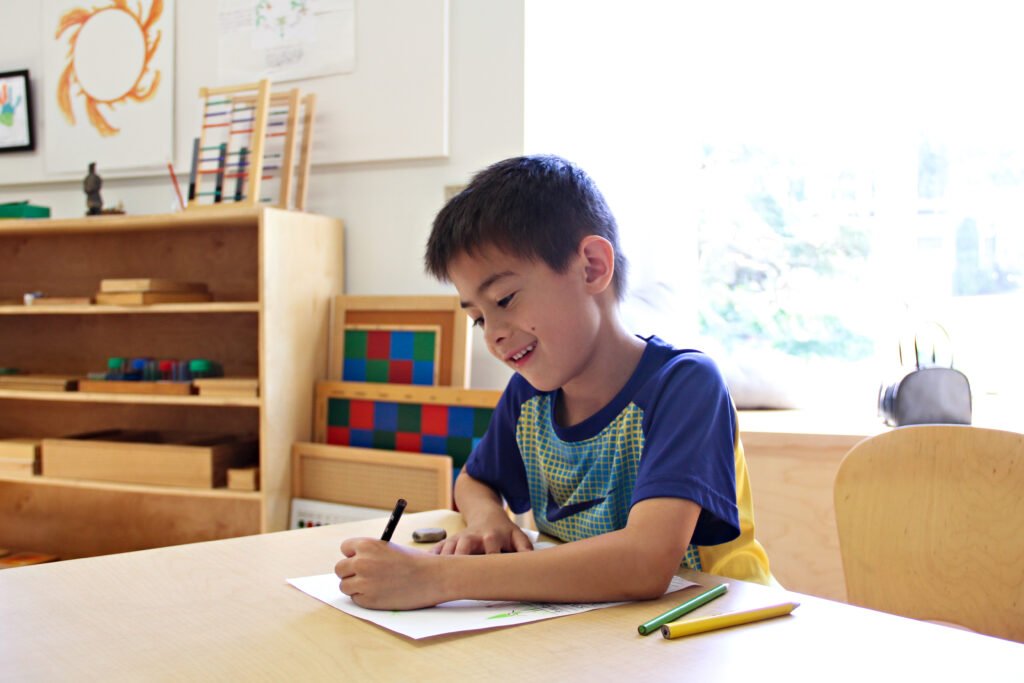 “The first essential for the child's development is concentration. The child who concentrates is immensely happy.”
“The first essential for the child's development is concentration. The child who concentrates is immensely happy.”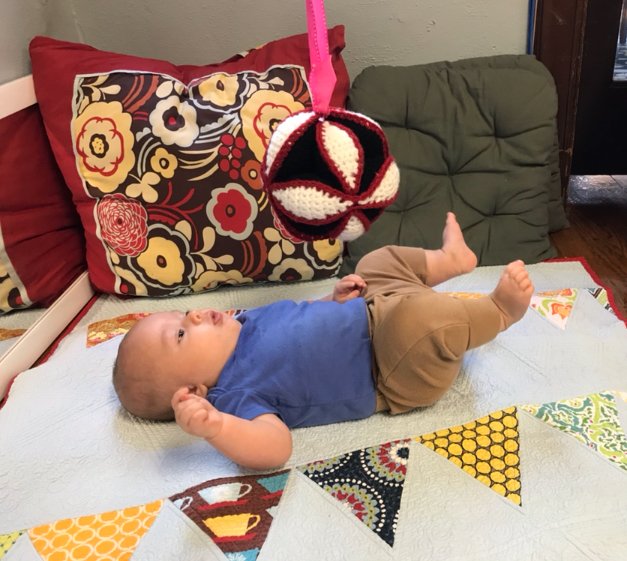 Montessori environments inherently bolster the development of concentration. The three-hour work period affords extended time without interruption which is vital for concentration to thrive. Further, the materials themselves are attractive to the children, inviting repetition which in turn leads to concentration.
Montessori environments inherently bolster the development of concentration. The three-hour work period affords extended time without interruption which is vital for concentration to thrive. Further, the materials themselves are attractive to the children, inviting repetition which in turn leads to concentration.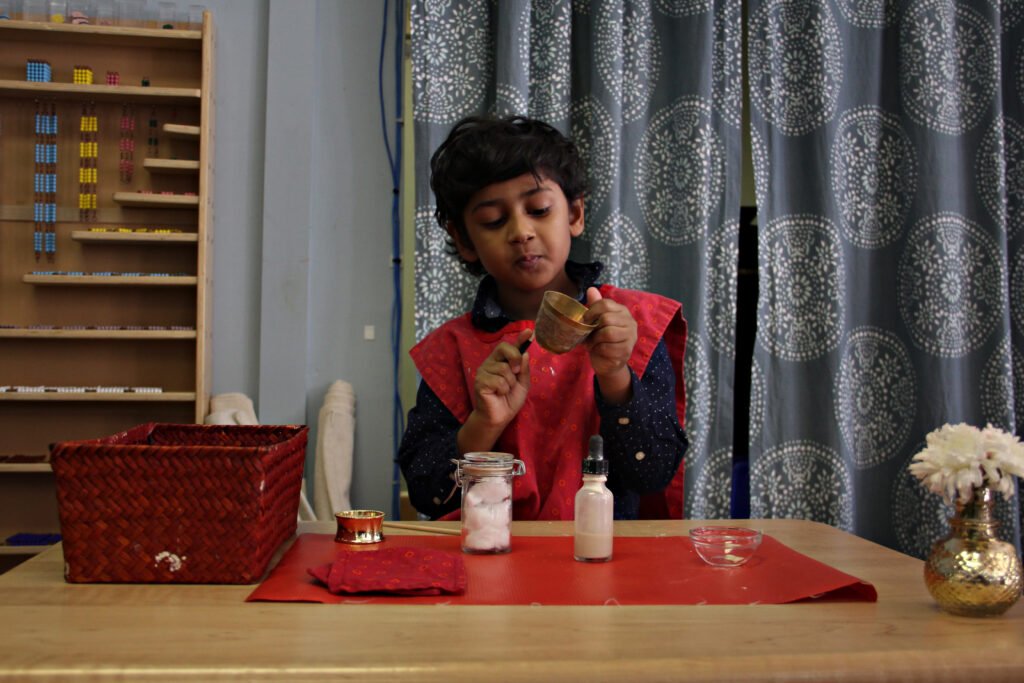
 As is true at school, when your child is concentrating on meaningful work at home, please do not interrupt them unless absolutely necessary. Their work may not seem meaningful to adult eyes, but balancing playing cards, tying and untying bows, lining up all the shoes in the house... This is all meaningful work.
As is true at school, when your child is concentrating on meaningful work at home, please do not interrupt them unless absolutely necessary. Their work may not seem meaningful to adult eyes, but balancing playing cards, tying and untying bows, lining up all the shoes in the house... This is all meaningful work.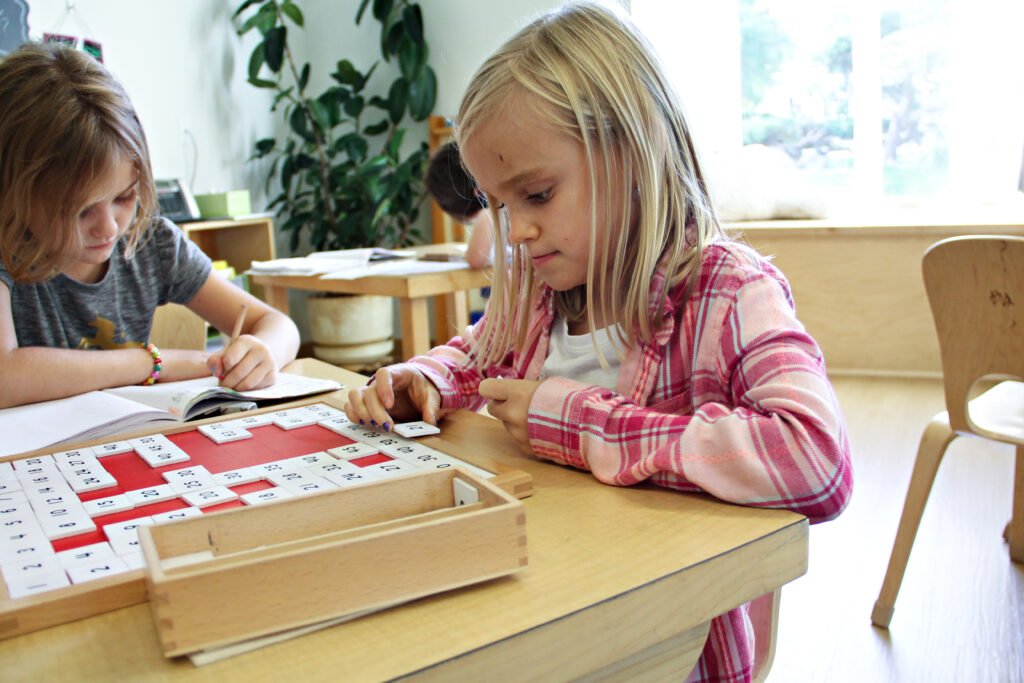 The sight of a child concentrating can transport us. We sense the feeling of deep calm and focus we too experience when we are allowed to fully lose ourselves to a productive task. Concentration is a beautiful thing to witness. Here we are witnesses to the moment of learning, the acquisition of knowledge.
The sight of a child concentrating can transport us. We sense the feeling of deep calm and focus we too experience when we are allowed to fully lose ourselves to a productive task. Concentration is a beautiful thing to witness. Here we are witnesses to the moment of learning, the acquisition of knowledge.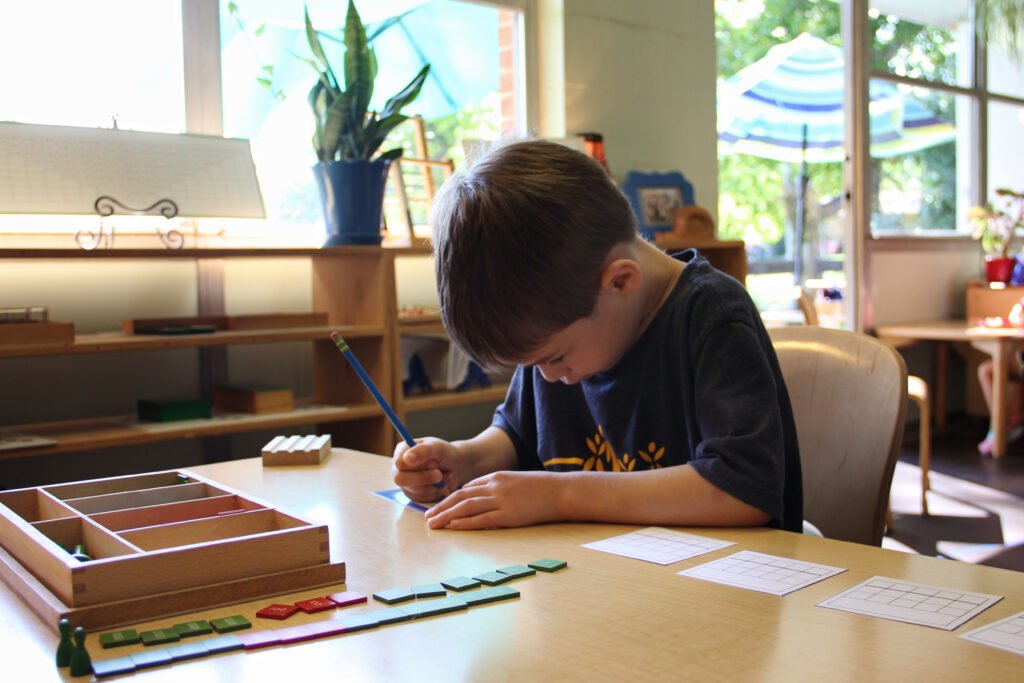 Many thanks to Melinda Smith for sharing her splendid photography.
Many thanks to Melinda Smith for sharing her splendid photography.
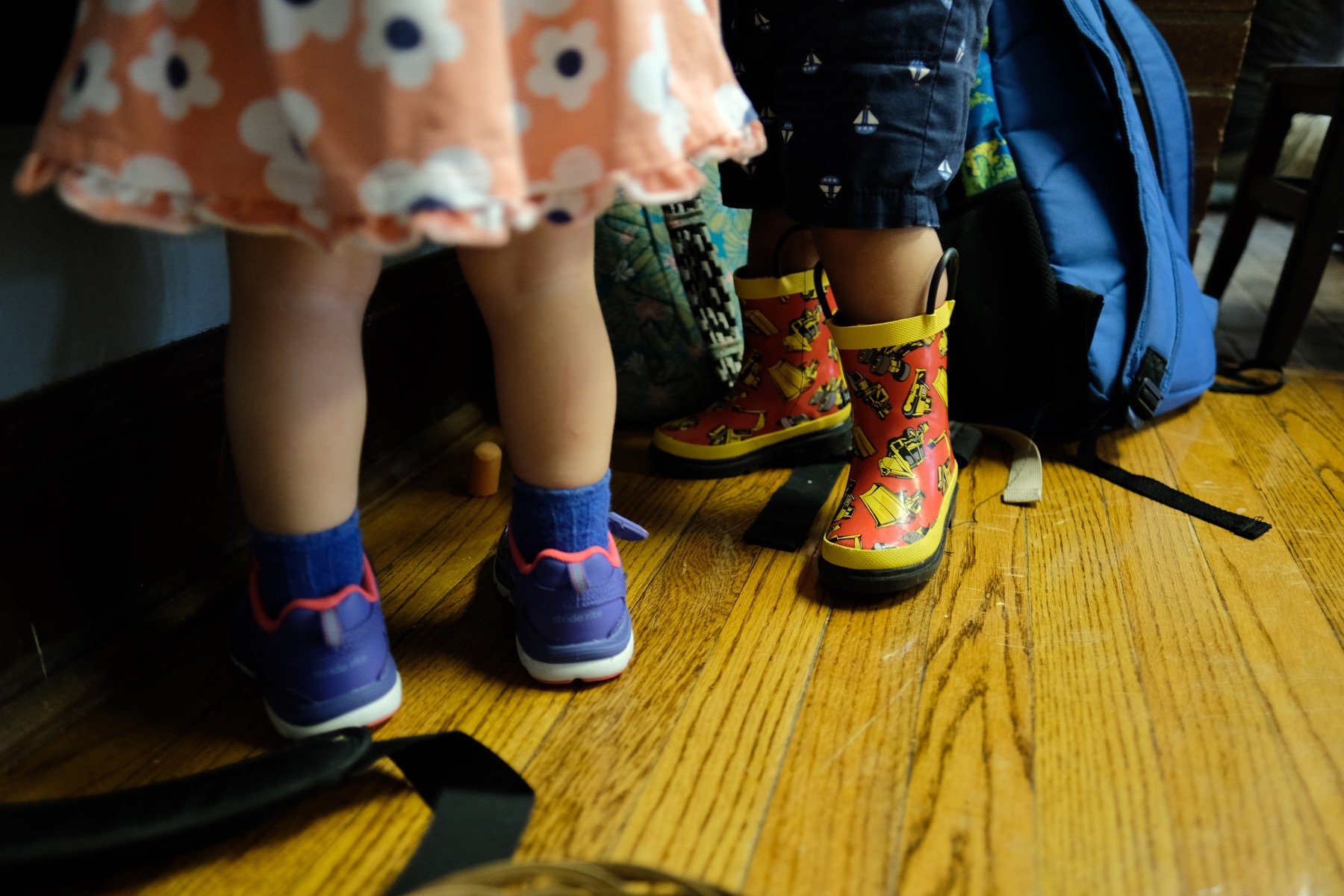
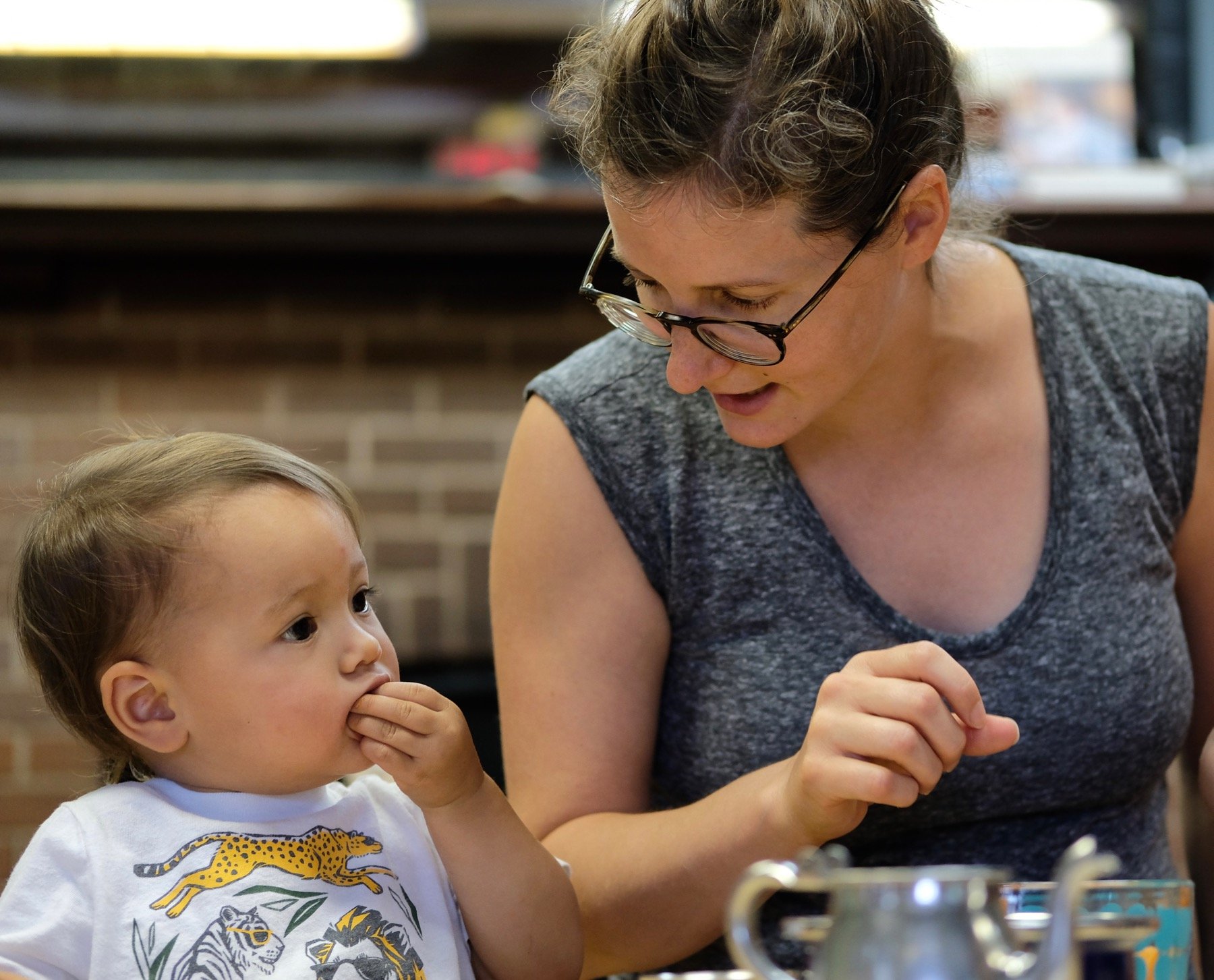 Every person’s best is influenced by the skills, tools and energy they have at any given moment. We’re here to provide support and information so that your best optimally aligns with your child’s needs.Let me be clear, it’s not that your best isn’t good enough – it’s that parenting is best done in community. It takes a village, not just to raise a child but to raise ourselves to the task. The more knowledgeable we are about our child’s developmental needs, the better we can meet these needs. When our best aligns with our child’s needs, that’s when the magic happens. That’s the sweet spot we are all aiming for in our parenting journey.
Every person’s best is influenced by the skills, tools and energy they have at any given moment. We’re here to provide support and information so that your best optimally aligns with your child’s needs.Let me be clear, it’s not that your best isn’t good enough – it’s that parenting is best done in community. It takes a village, not just to raise a child but to raise ourselves to the task. The more knowledgeable we are about our child’s developmental needs, the better we can meet these needs. When our best aligns with our child’s needs, that’s when the magic happens. That’s the sweet spot we are all aiming for in our parenting journey.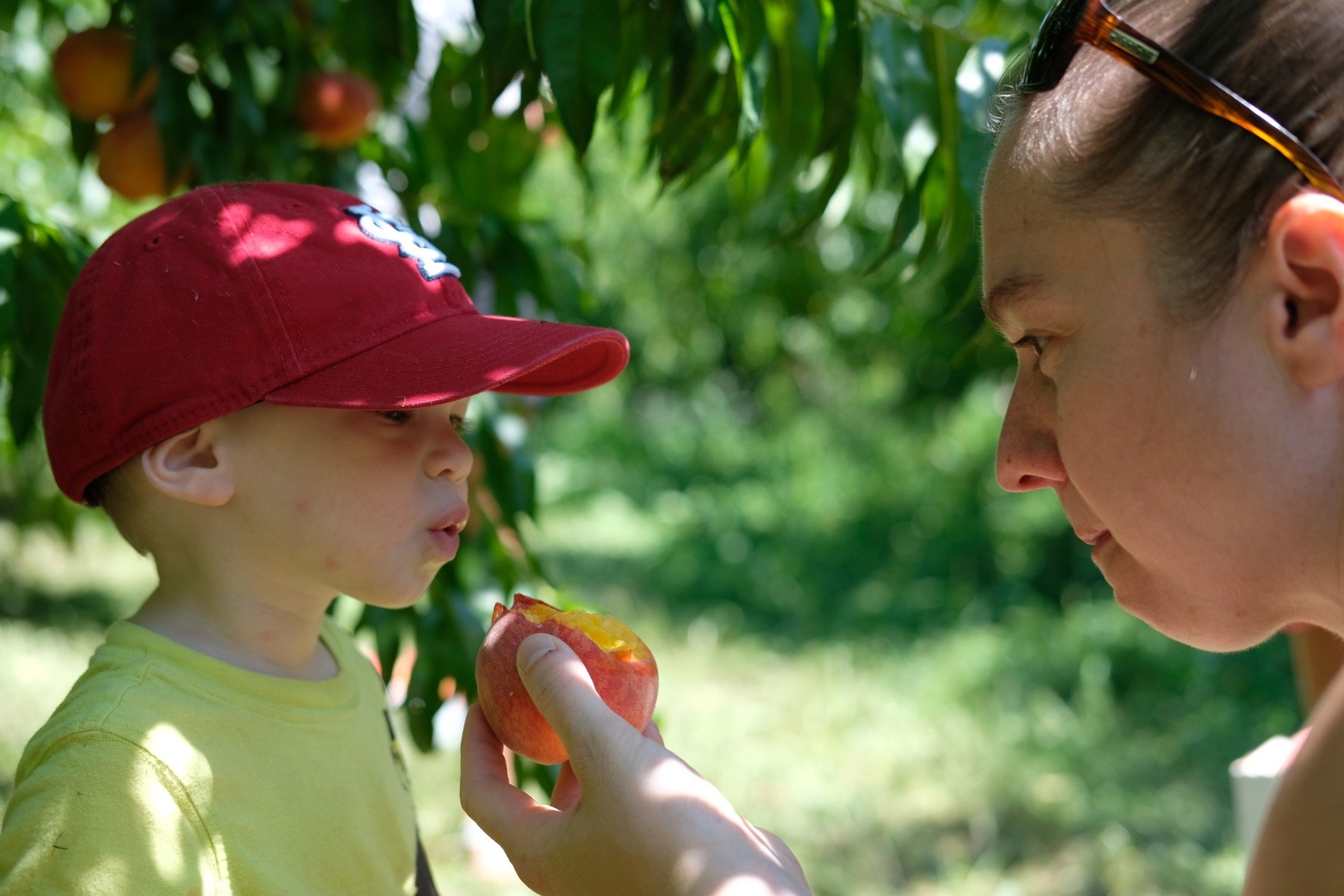 So, please take all the blog posts, all the parent education, all the reminders about pick up, drop off and the importance of timely arrivals, knowing we understand that you are doing your best. Every bit of advice is offered recognizing that you want the best for your child.The beauty of a community is that you don’t have to do all the work. You can lean on others’ expertise. The Villa di Maria community wants to support you. We want to accompany you on the journey.We see you. You might not feel like you've got this parenting thing, but together we've got it.
So, please take all the blog posts, all the parent education, all the reminders about pick up, drop off and the importance of timely arrivals, knowing we understand that you are doing your best. Every bit of advice is offered recognizing that you want the best for your child.The beauty of a community is that you don’t have to do all the work. You can lean on others’ expertise. The Villa di Maria community wants to support you. We want to accompany you on the journey.We see you. You might not feel like you've got this parenting thing, but together we've got it.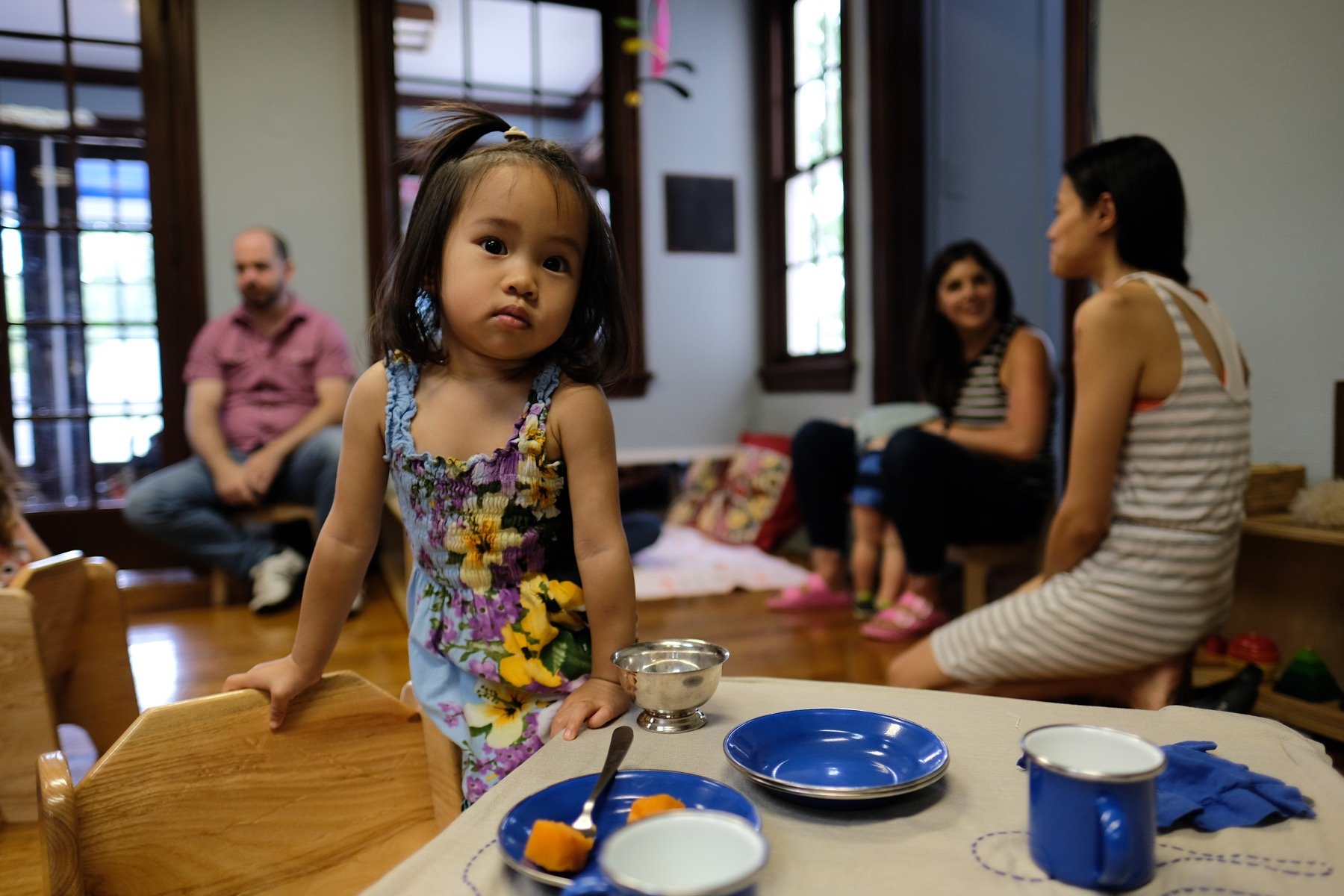 Many thanks to Jordan Lev for the beautiful photographs.
Many thanks to Jordan Lev for the beautiful photographs.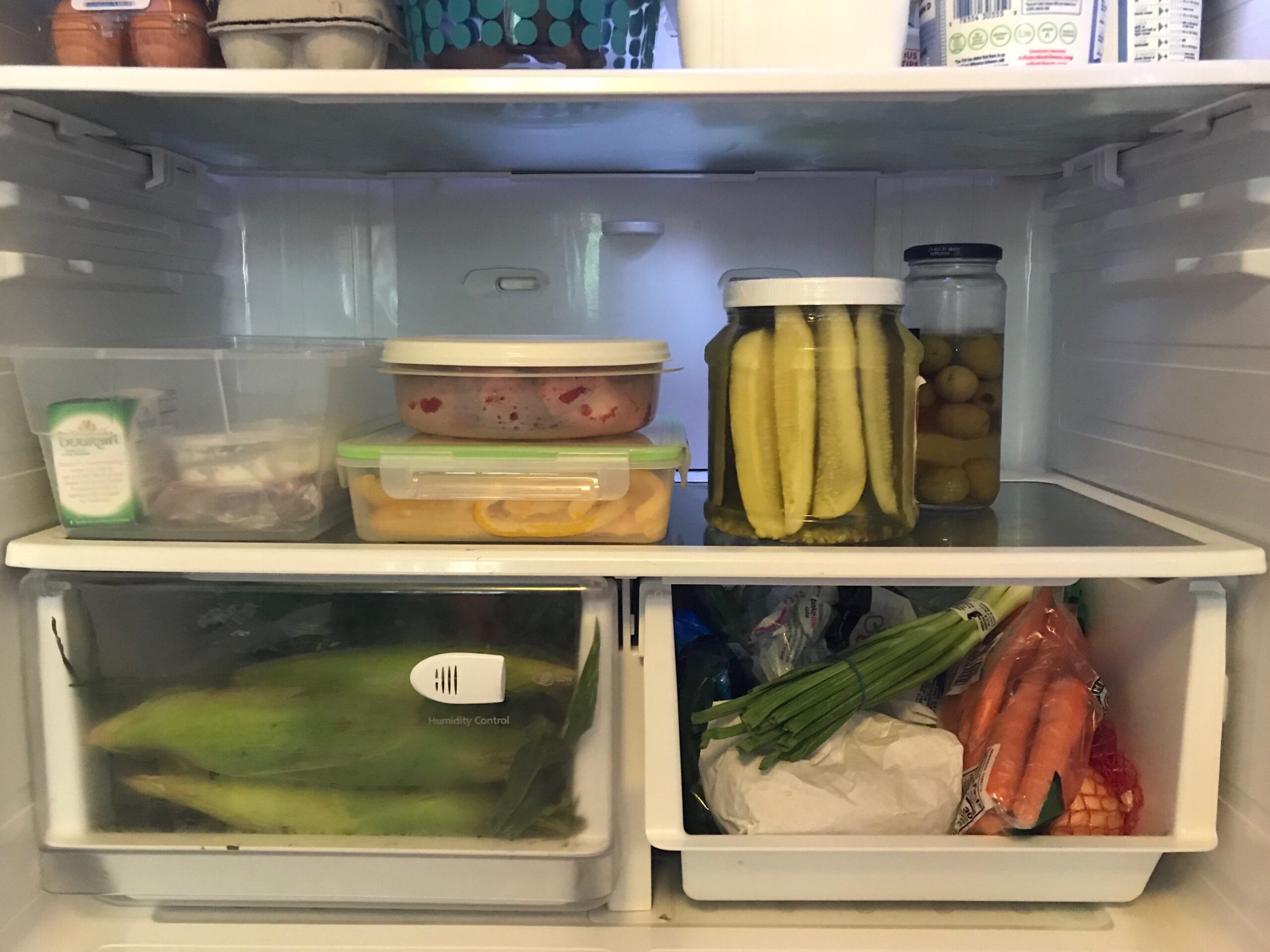
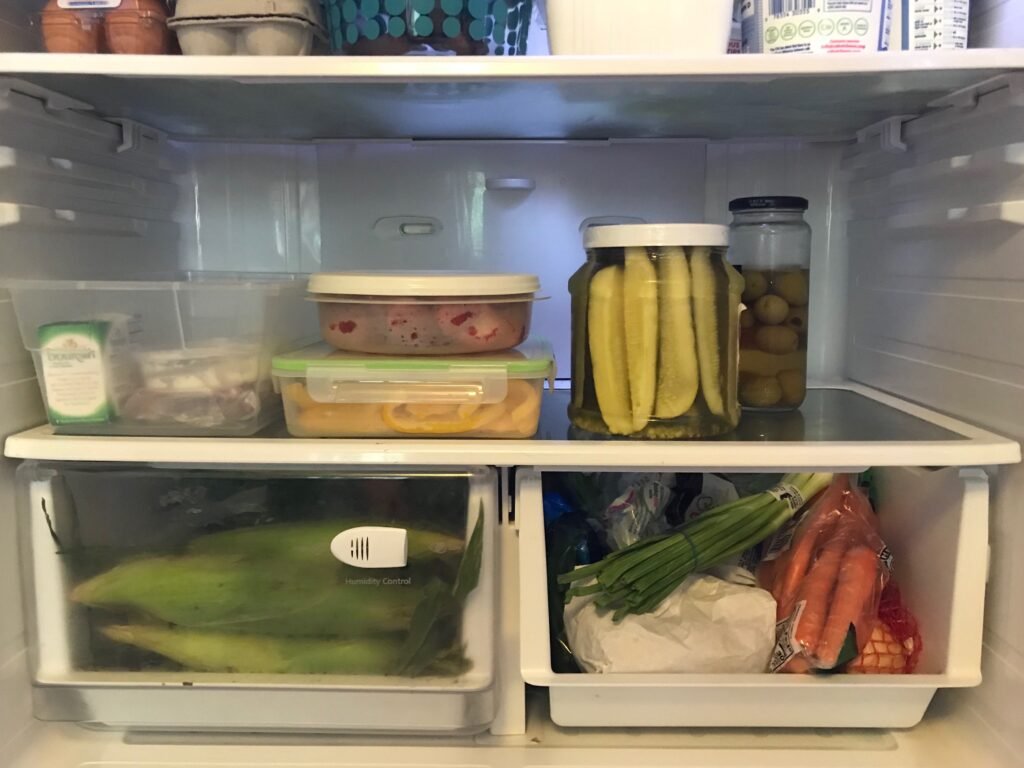 With a freezer on the bottom, all of the lunch packing things go on the lowest shelf of this refrigerator. The bottom shelf on the door also holds items the children are expected to get for themselves.Lunch fixings are divided into small bins based on their food group. There’s a protein bin on the far left, then veggies and fruit and of course pickles and olives! An additional bin can be found in the pantry with crackers, bread and the like.
With a freezer on the bottom, all of the lunch packing things go on the lowest shelf of this refrigerator. The bottom shelf on the door also holds items the children are expected to get for themselves.Lunch fixings are divided into small bins based on their food group. There’s a protein bin on the far left, then veggies and fruit and of course pickles and olives! An additional bin can be found in the pantry with crackers, bread and the like.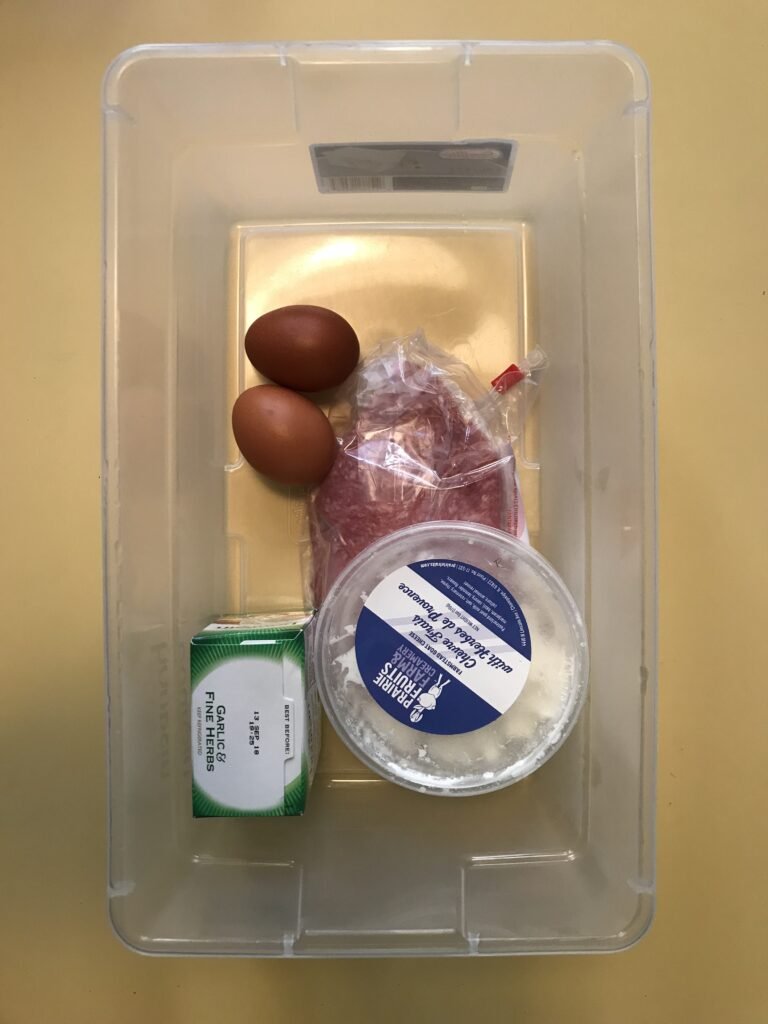 In the beginning lunch-making can start like this:
In the beginning lunch-making can start like this:
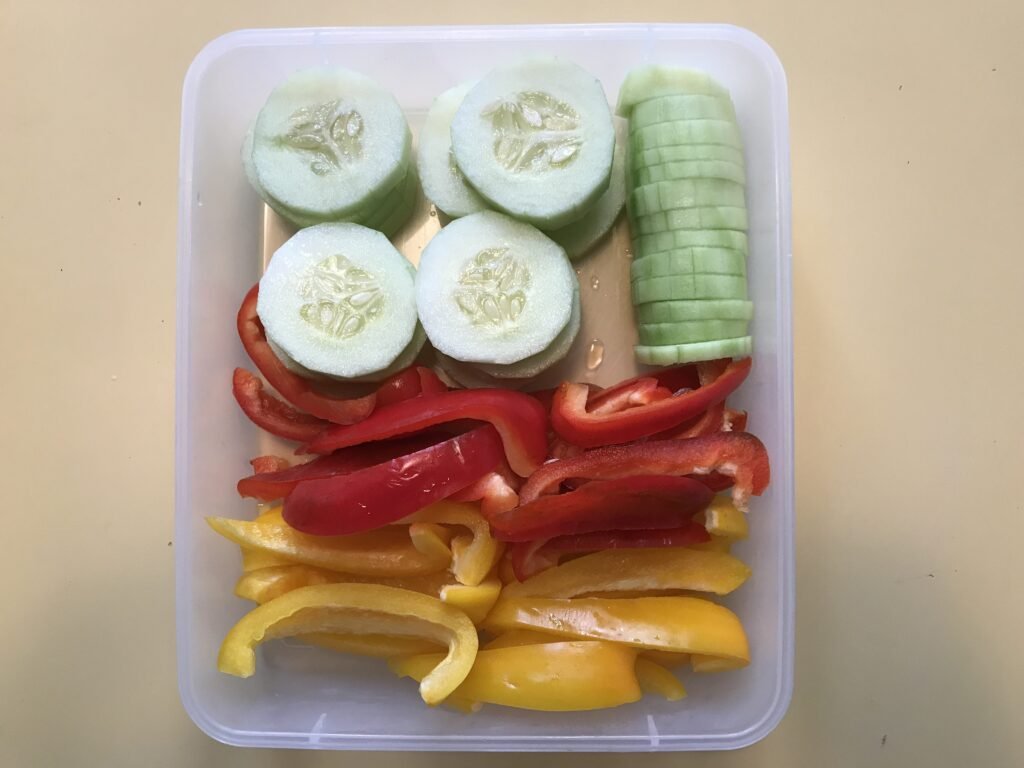 Unfinished portions of lunch are sent home from the Children’s House. Use this information to adjust what the child packs for themselves. “I’ve noticed you’re eating half of an apple at lunch. Let’s cut the apple in two so it lasts for two lunches.”With the increased independence in the elementary classrooms, children compost the remains of their lunch. It is worth taking the time to check in with your child about the amount they’re consuming and help them navigate adjusting their portions accordingly. Lower Elementary children also have the opportunity to pack a snack. Protein will give them the boost they need in the morning, remember this when they’re packing lunch. Let them listen to their body – they’ll know if they need a snack or not!Finally, every child can be responsible for bringing their lunchbox into the house at the end of the day and emptying it! Storing lunchboxes in an accessible place permits children to take ownership of taking out and putting away their lunchbox.
Unfinished portions of lunch are sent home from the Children’s House. Use this information to adjust what the child packs for themselves. “I’ve noticed you’re eating half of an apple at lunch. Let’s cut the apple in two so it lasts for two lunches.”With the increased independence in the elementary classrooms, children compost the remains of their lunch. It is worth taking the time to check in with your child about the amount they’re consuming and help them navigate adjusting their portions accordingly. Lower Elementary children also have the opportunity to pack a snack. Protein will give them the boost they need in the morning, remember this when they’re packing lunch. Let them listen to their body – they’ll know if they need a snack or not!Finally, every child can be responsible for bringing their lunchbox into the house at the end of the day and emptying it! Storing lunchboxes in an accessible place permits children to take ownership of taking out and putting away their lunchbox.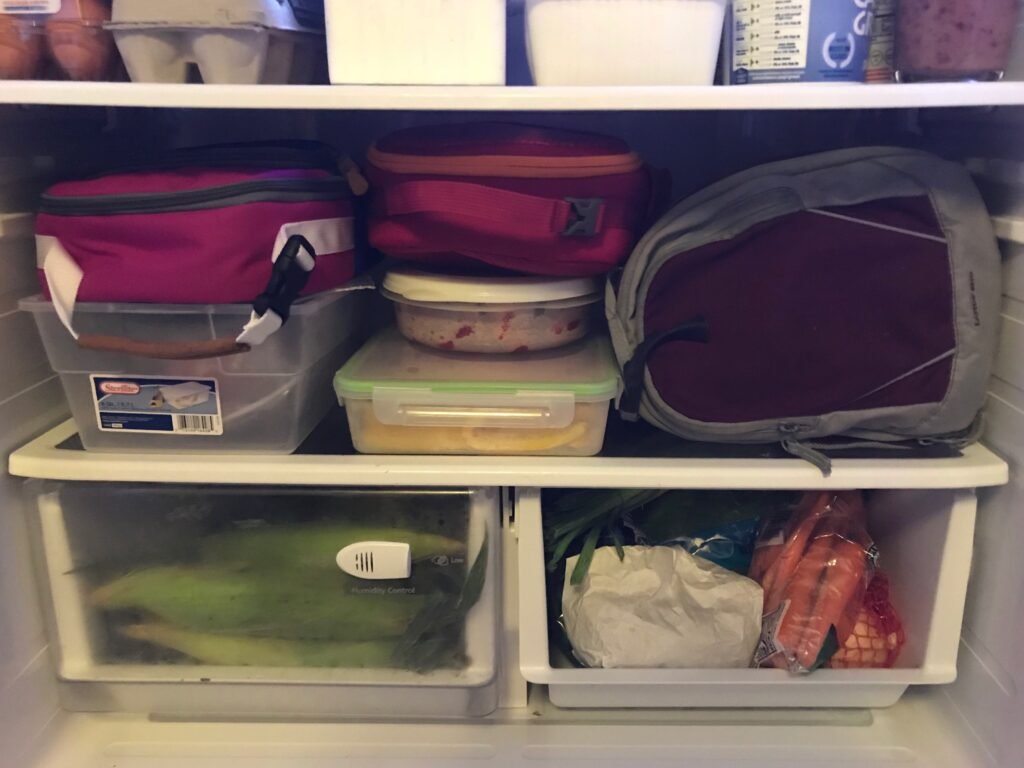 Everyone’s set up will look different. If you take some time to think about where your children are and where you hope them to be in the future (do you want to pack lunches for your 20-year-old?), you can then reflect on how to gradually allow them more and more agency over their lunches.
Everyone’s set up will look different. If you take some time to think about where your children are and where you hope them to be in the future (do you want to pack lunches for your 20-year-old?), you can then reflect on how to gradually allow them more and more agency over their lunches.
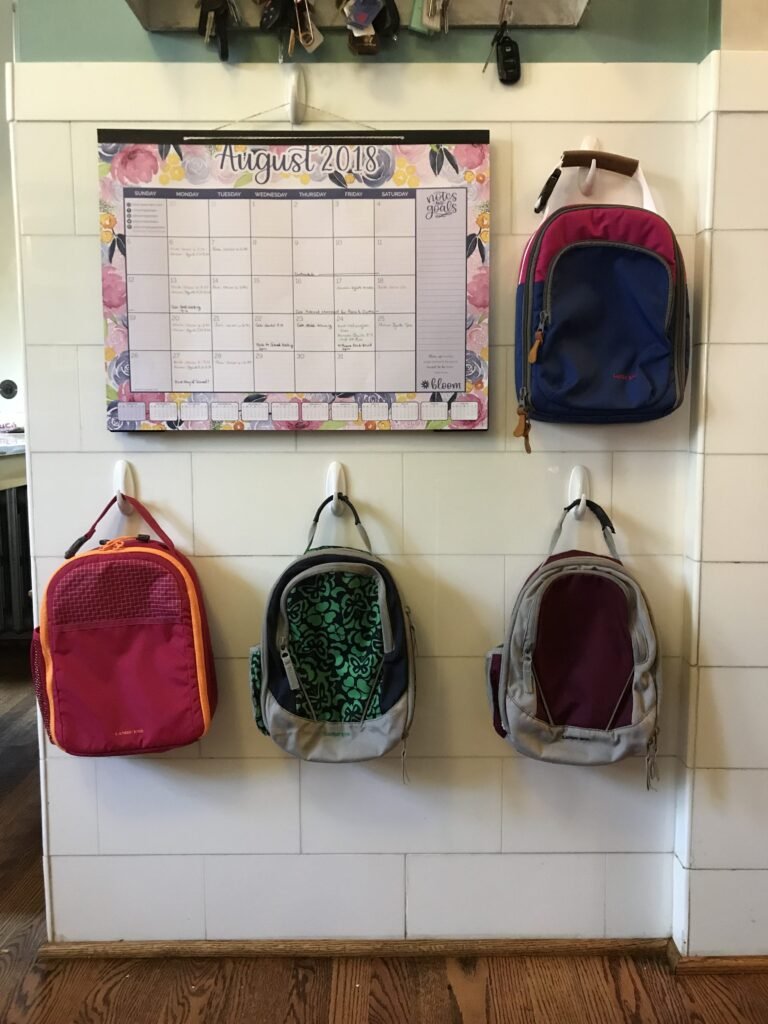 Like most things in the Montessori classroom, lunch is a multi-faceted opportunity for growth. It provides occasions for choice making, self-sufficiency and increasing hand strength and dexterity. It’s a time to practice social graces, build community and learn table manners. Our work at home regarding lunch preparation can feed this work in the classroom, allowing the children to get the most out of mealtime at school.
Like most things in the Montessori classroom, lunch is a multi-faceted opportunity for growth. It provides occasions for choice making, self-sufficiency and increasing hand strength and dexterity. It’s a time to practice social graces, build community and learn table manners. Our work at home regarding lunch preparation can feed this work in the classroom, allowing the children to get the most out of mealtime at school.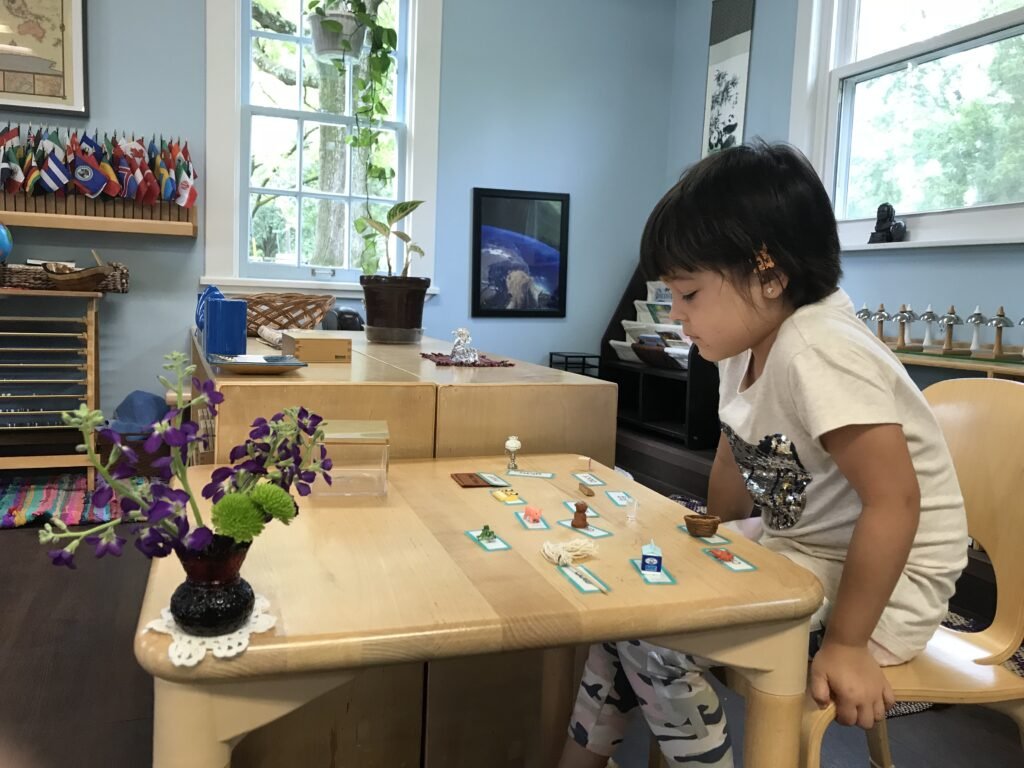 When thinking about lunches, we must keep in mind how much our children work while they are at school. The youngest are building their personalities, refining their movement, expanding their language and working with numbers. Elementary children are figuring out their social selves and actively pursuing new learning.After a three-hour work period, children need to replenish their energy with a healthy lunch. Extended day and elementary children need their lunch to provide the nourishment for their afternoon work.While we've all had the occasional day where we pretend that the cheese flavoring in the bag of Doritos counts as protein and fruit snacks are actually fruit, we also know this has to be the exception rather than the rule in order for our children to have what they need at to thrive at school.In the Children’s House a protein, fruit and vegetable will suffice for most children. Elementary children will likely need larger portions; figuring out how much they need is a conversation you can have with your child at the end of the day. (Strategies and tips about the actual packing of lunches coming soon!)While adjusting the choices available for lunch, school can be an excuse to deflect pushback. “This is what <insert name of teacher> said…” goes a long way. Use it sparingly and use it wisely, but if you need extra support packing a lunch full of healthy options, this might be one of those moments.
When thinking about lunches, we must keep in mind how much our children work while they are at school. The youngest are building their personalities, refining their movement, expanding their language and working with numbers. Elementary children are figuring out their social selves and actively pursuing new learning.After a three-hour work period, children need to replenish their energy with a healthy lunch. Extended day and elementary children need their lunch to provide the nourishment for their afternoon work.While we've all had the occasional day where we pretend that the cheese flavoring in the bag of Doritos counts as protein and fruit snacks are actually fruit, we also know this has to be the exception rather than the rule in order for our children to have what they need at to thrive at school.In the Children’s House a protein, fruit and vegetable will suffice for most children. Elementary children will likely need larger portions; figuring out how much they need is a conversation you can have with your child at the end of the day. (Strategies and tips about the actual packing of lunches coming soon!)While adjusting the choices available for lunch, school can be an excuse to deflect pushback. “This is what <insert name of teacher> said…” goes a long way. Use it sparingly and use it wisely, but if you need extra support packing a lunch full of healthy options, this might be one of those moments.
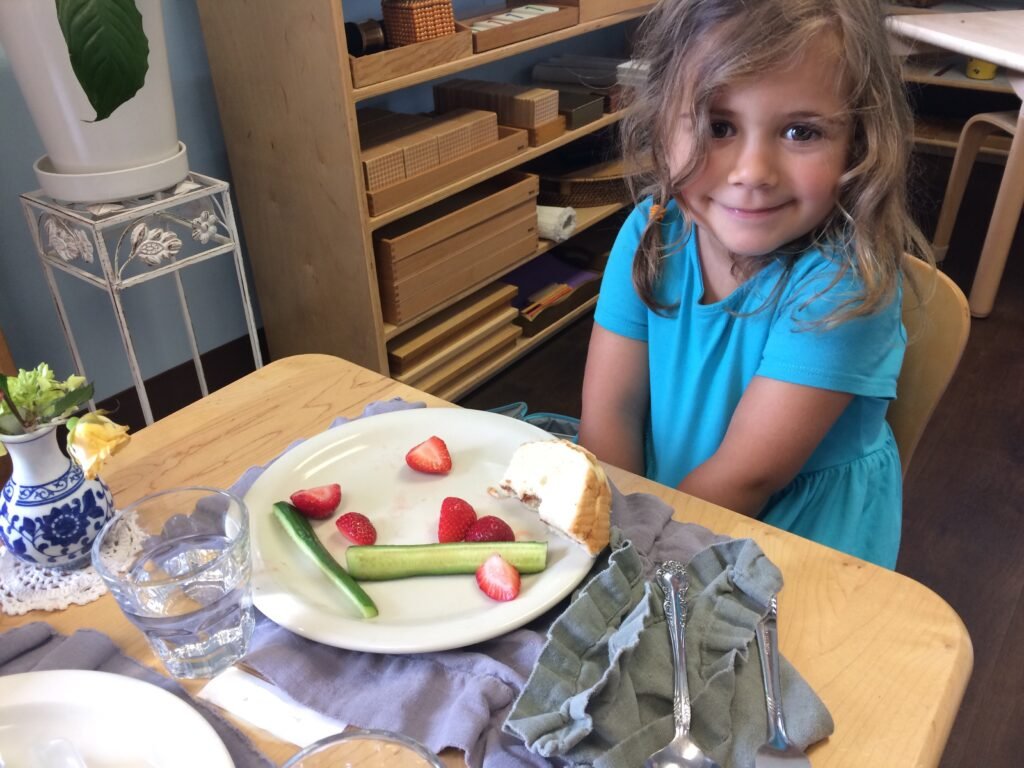 Photo credit: Jessie Braud
Photo credit: Jessie Braud














